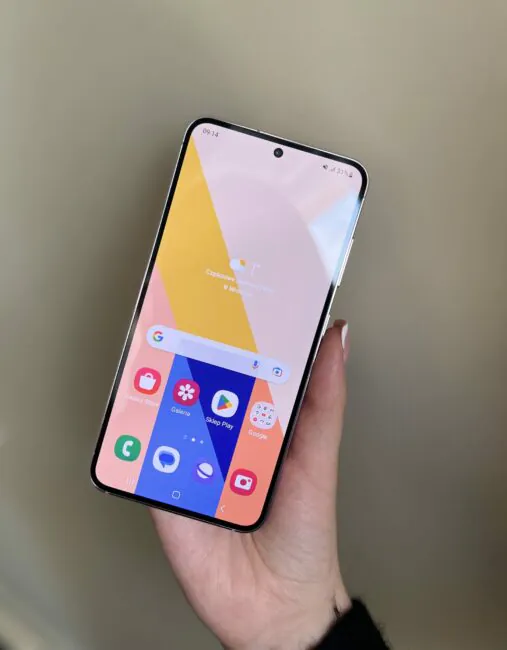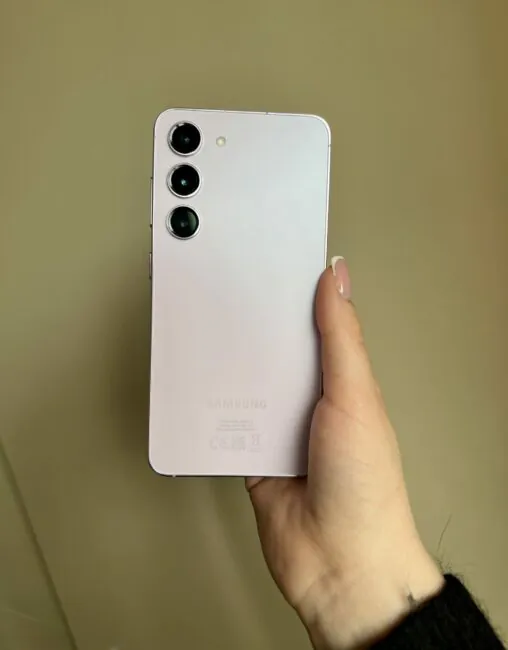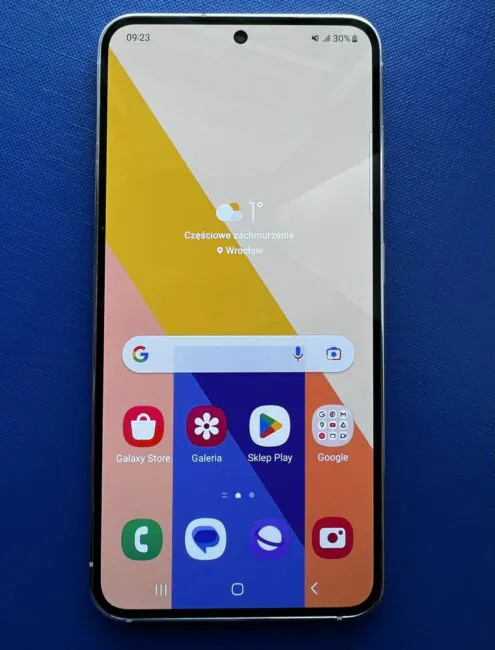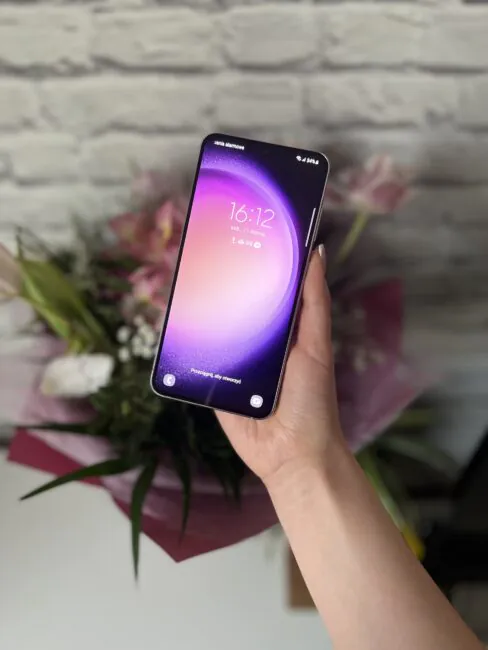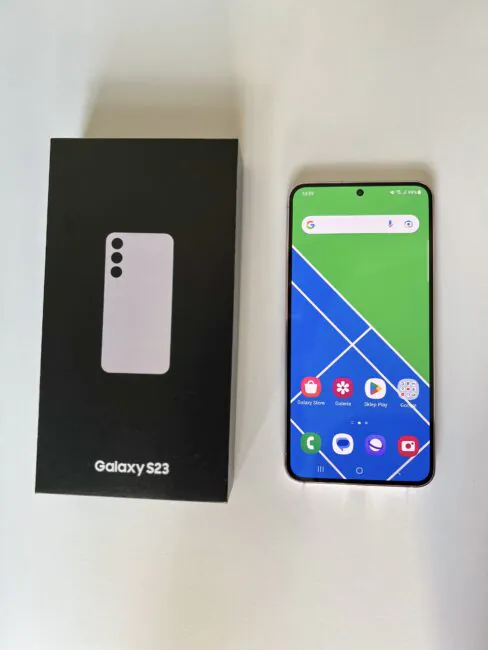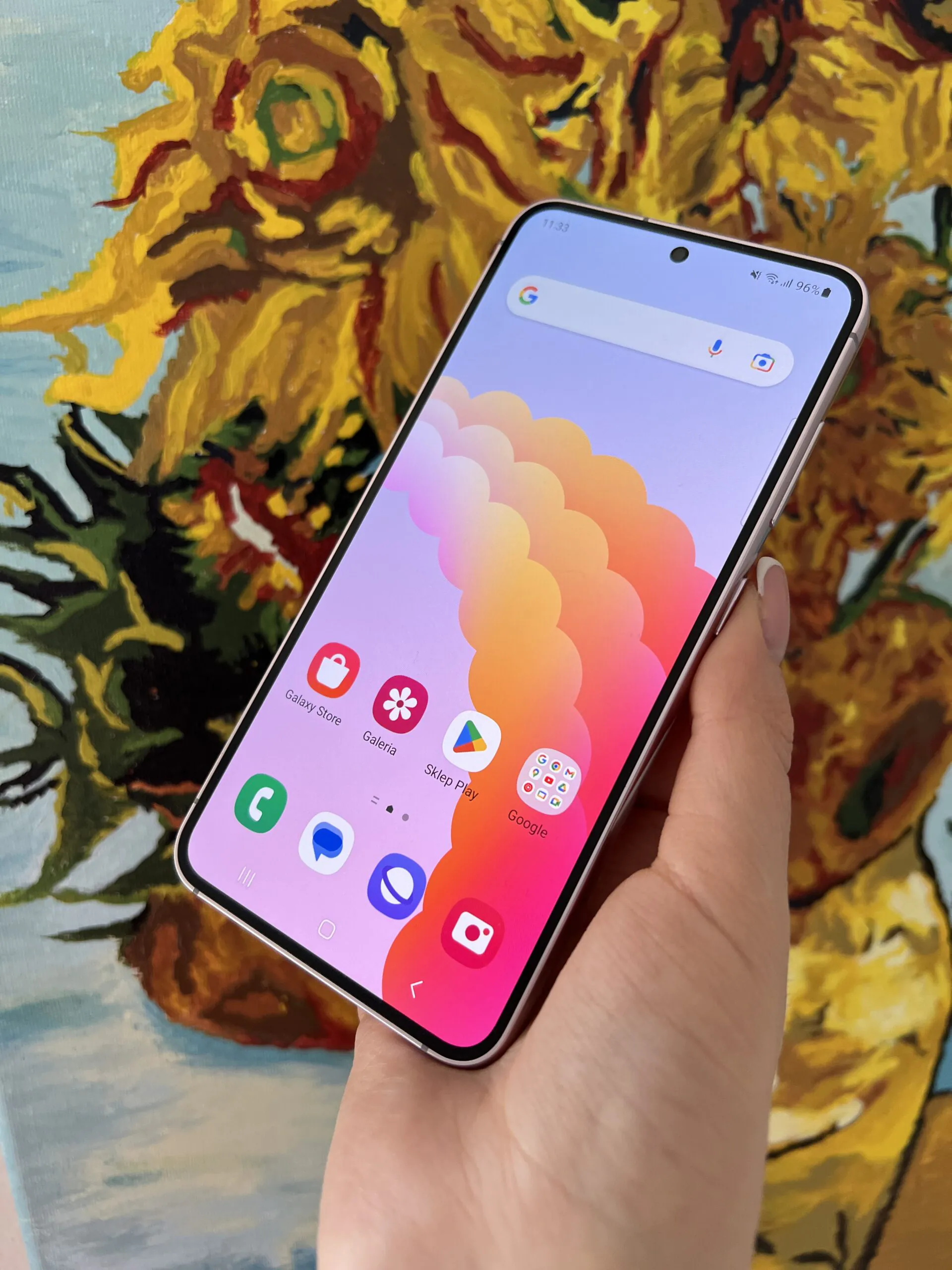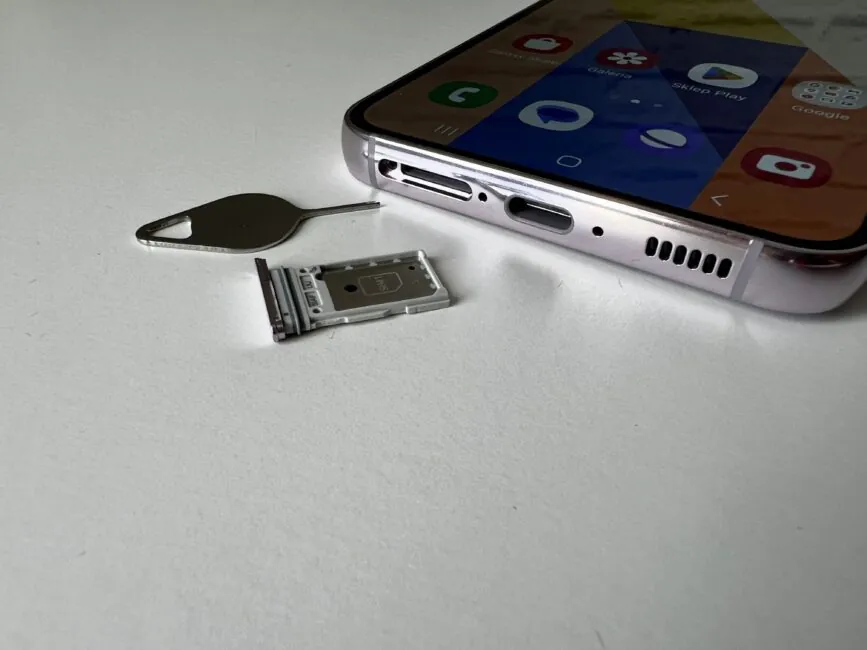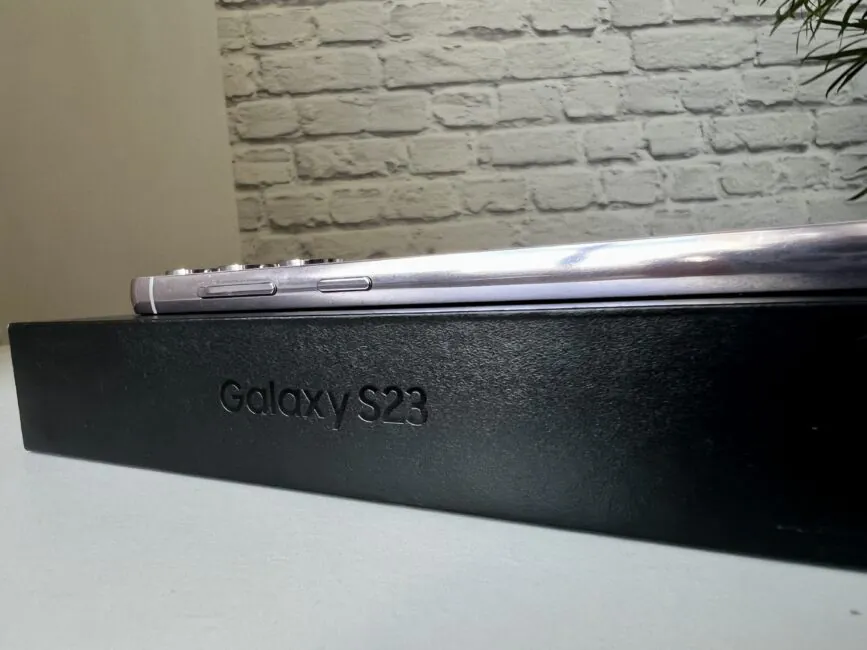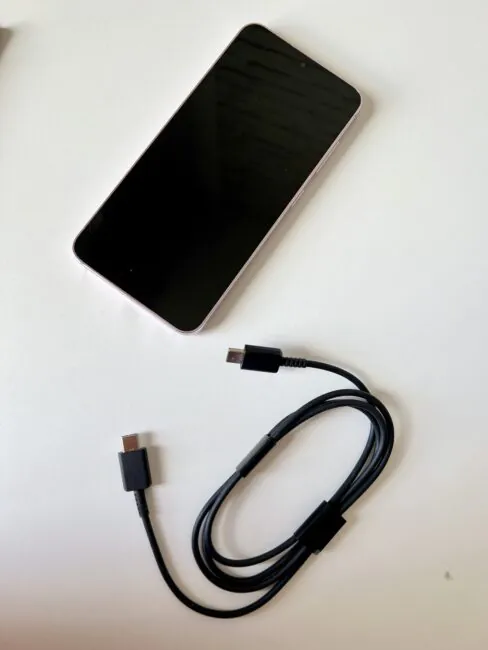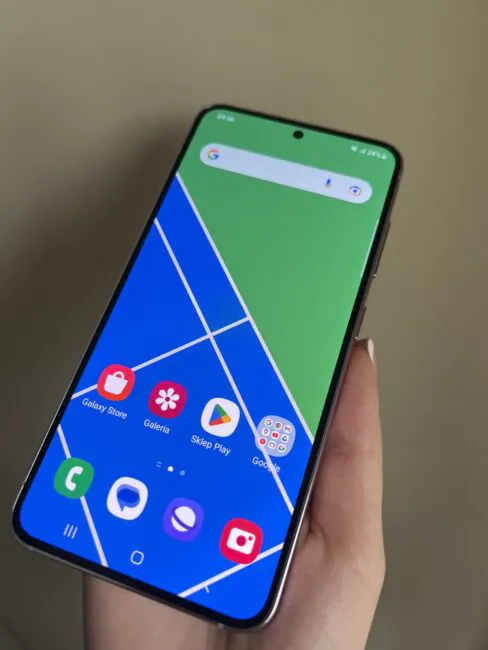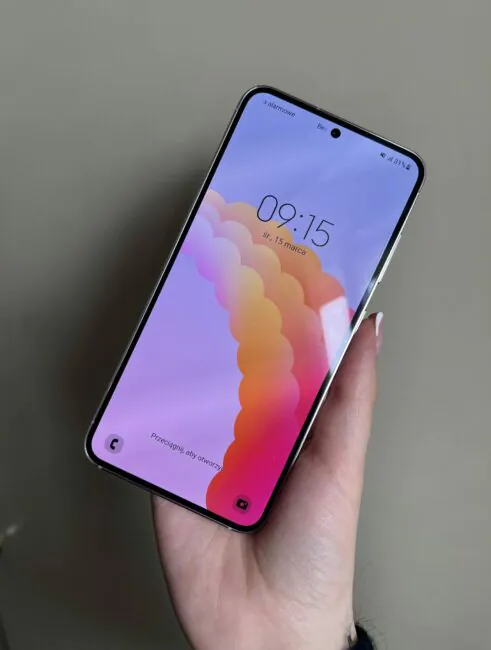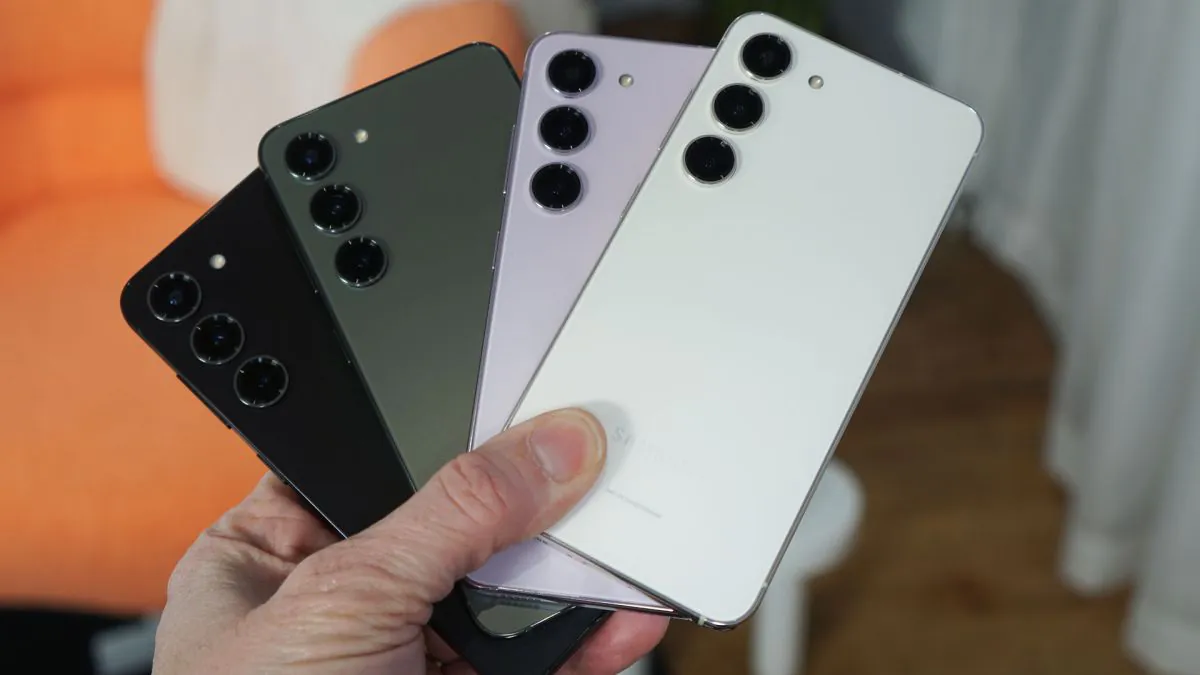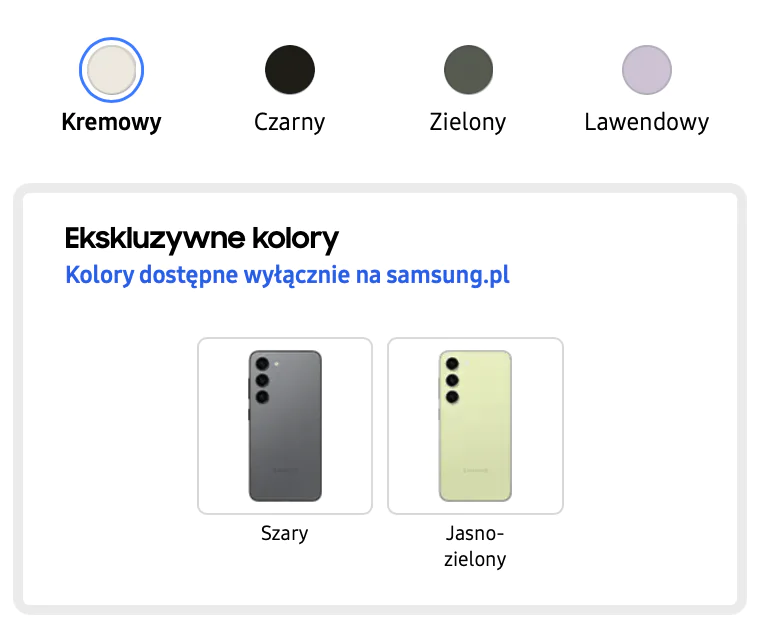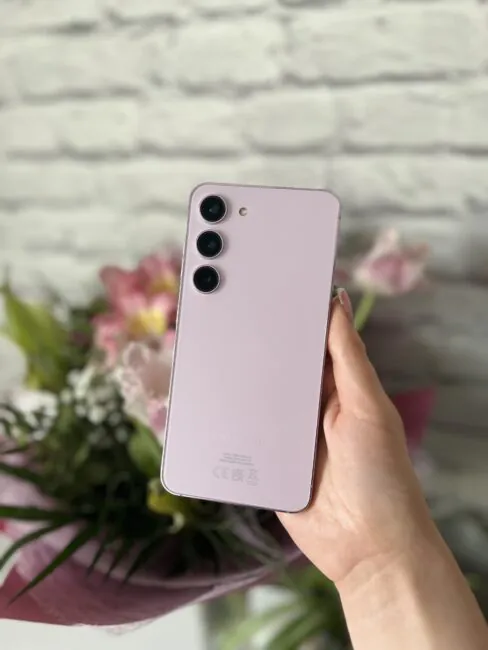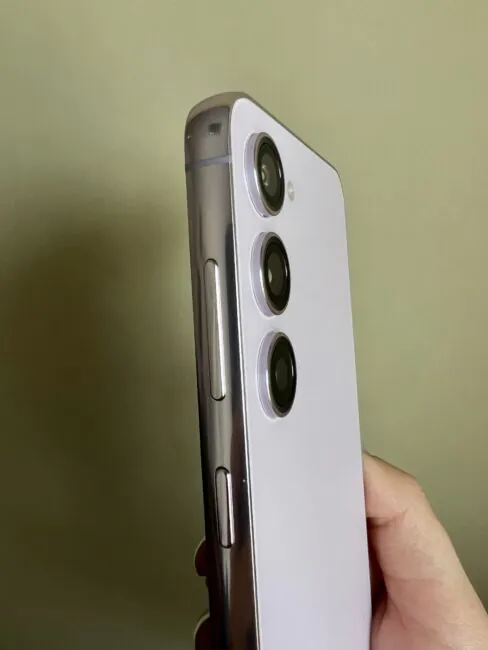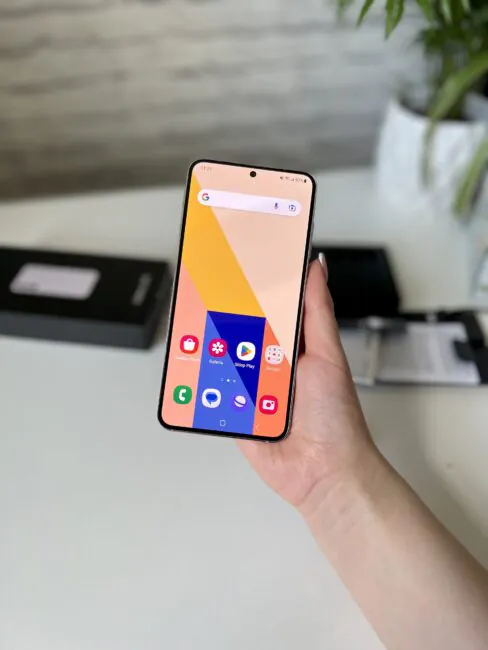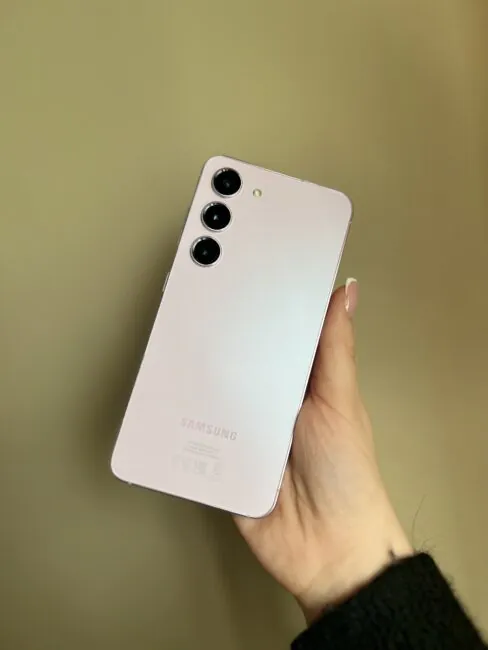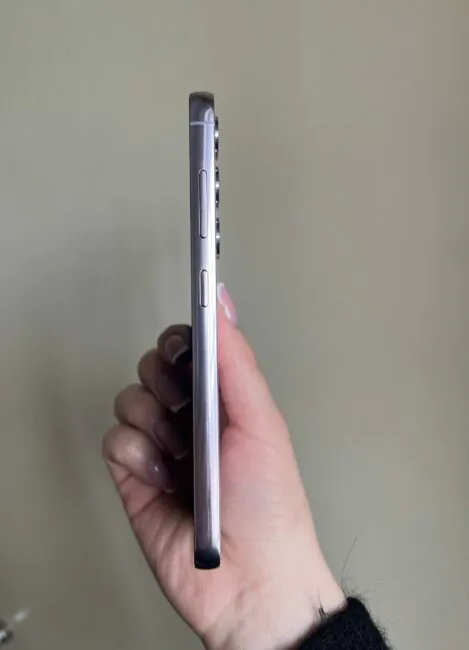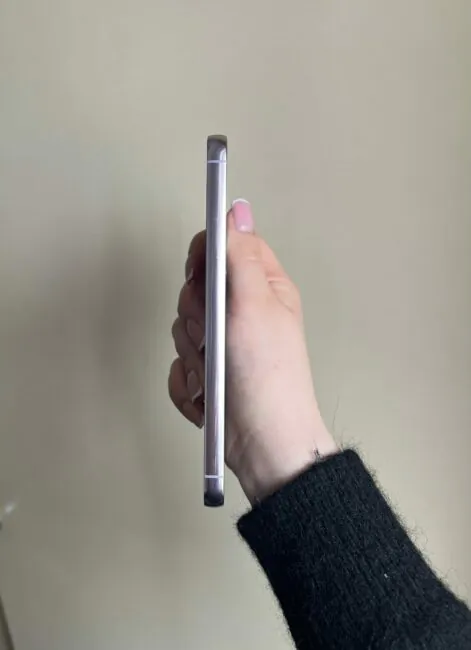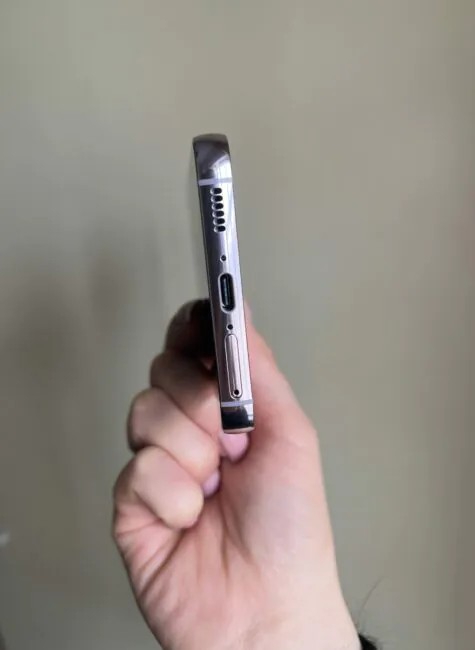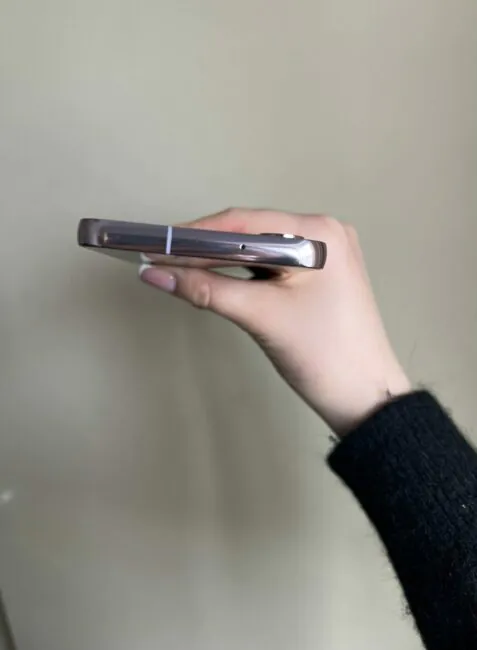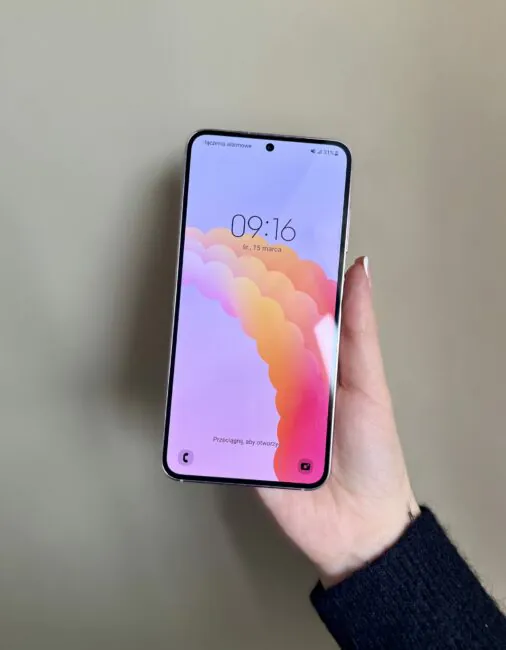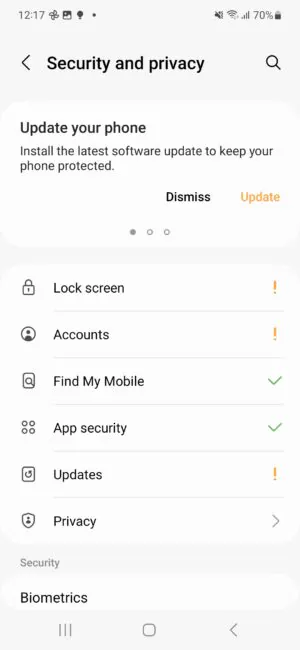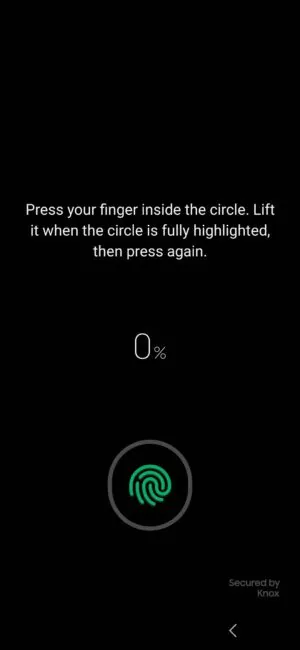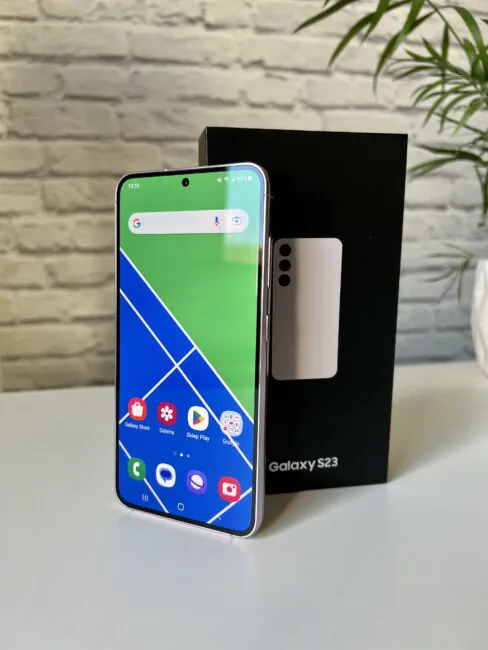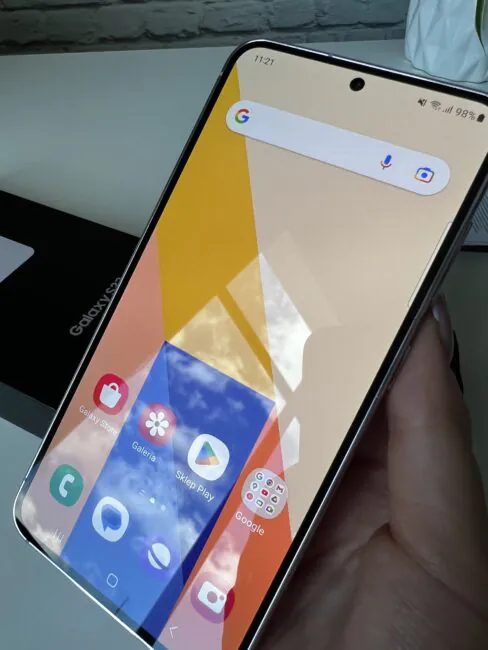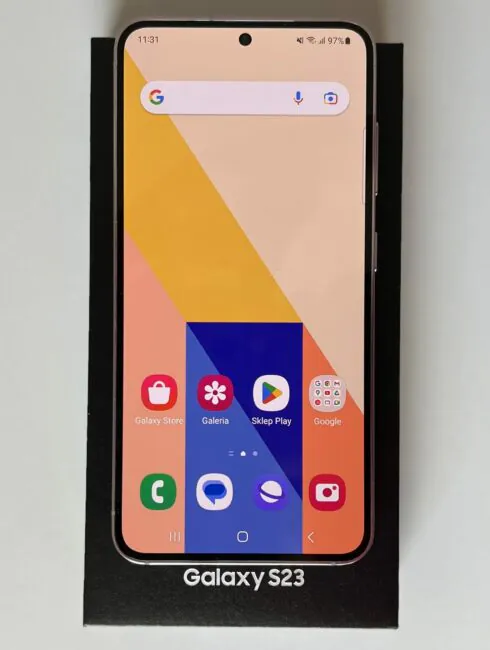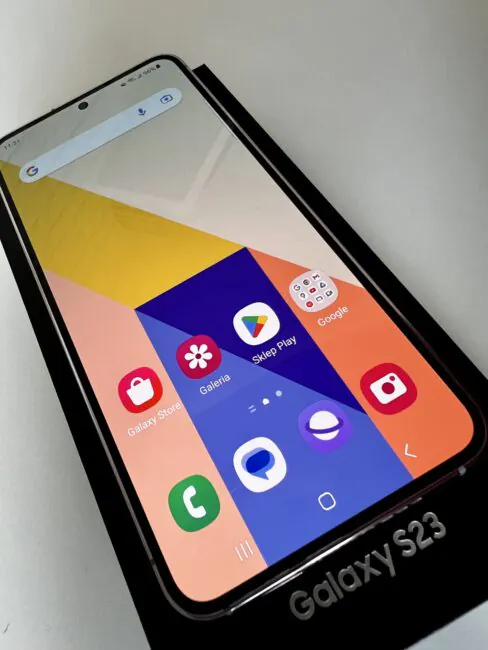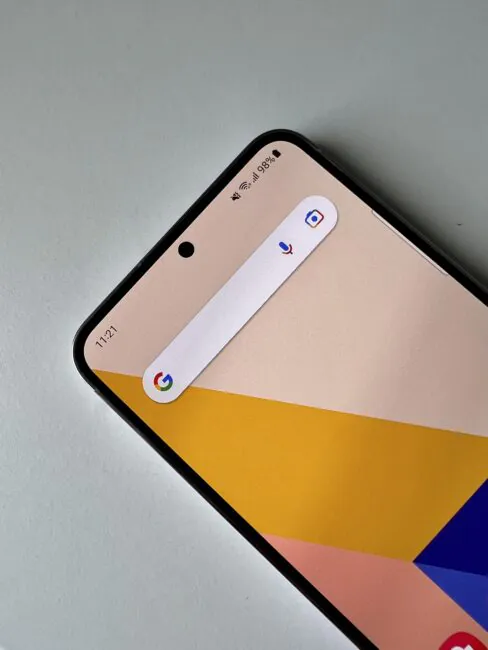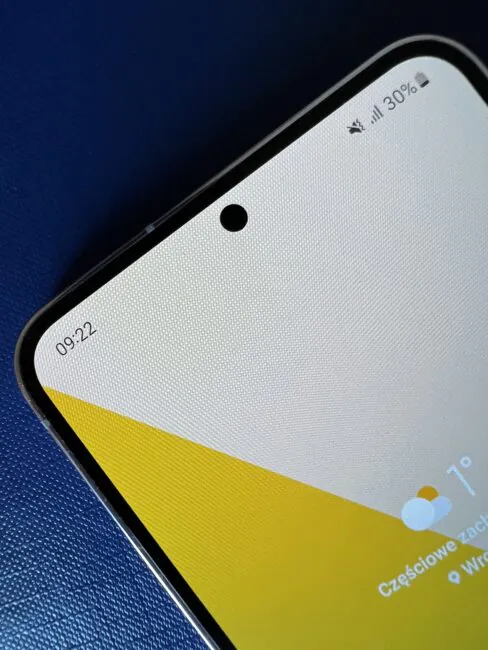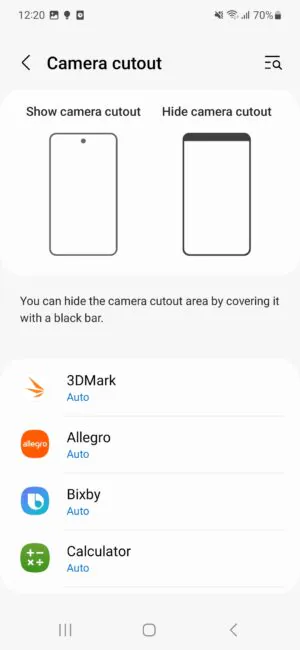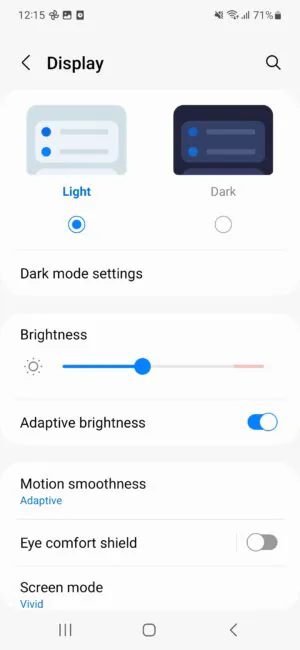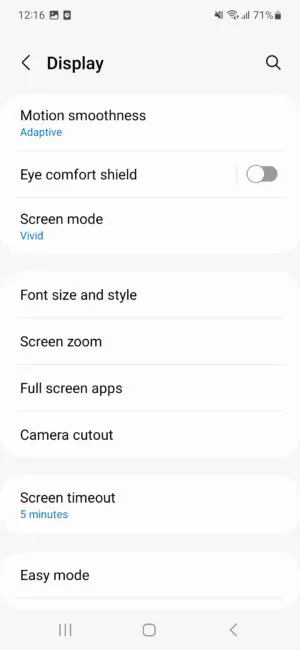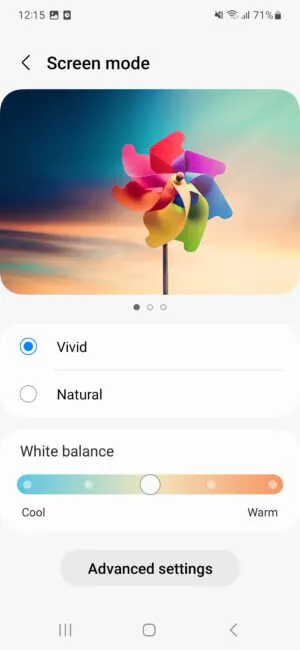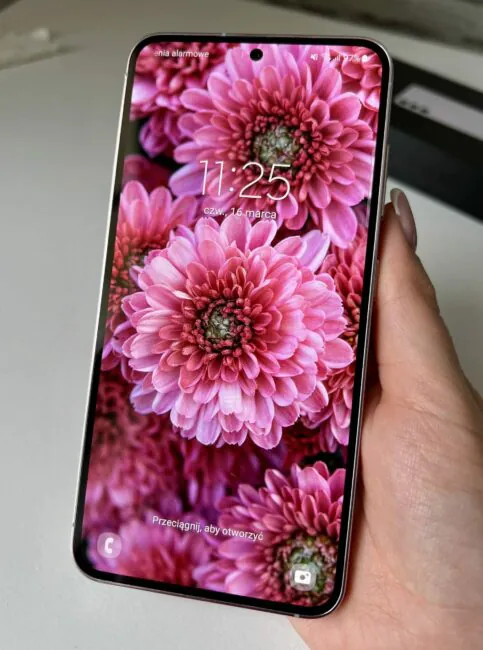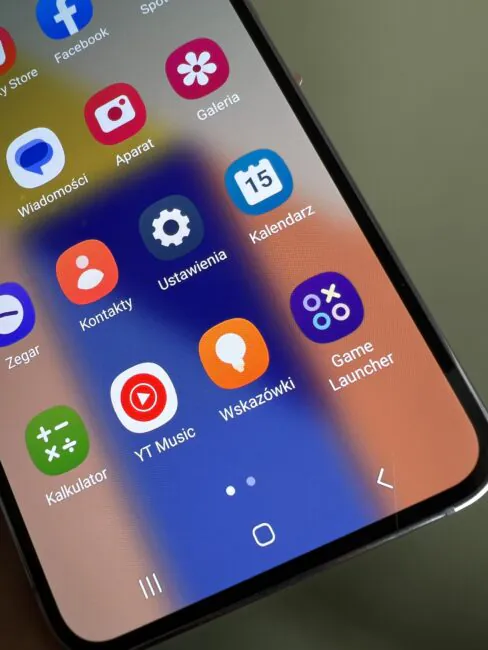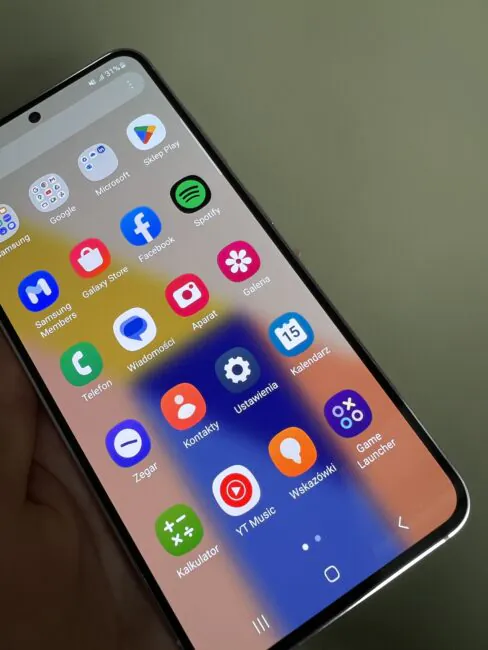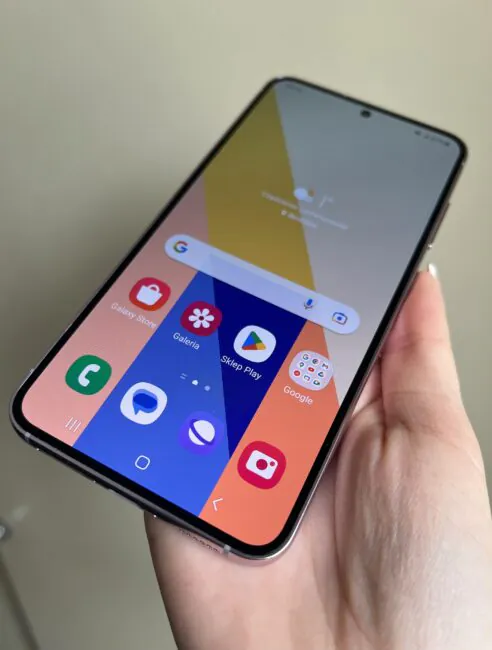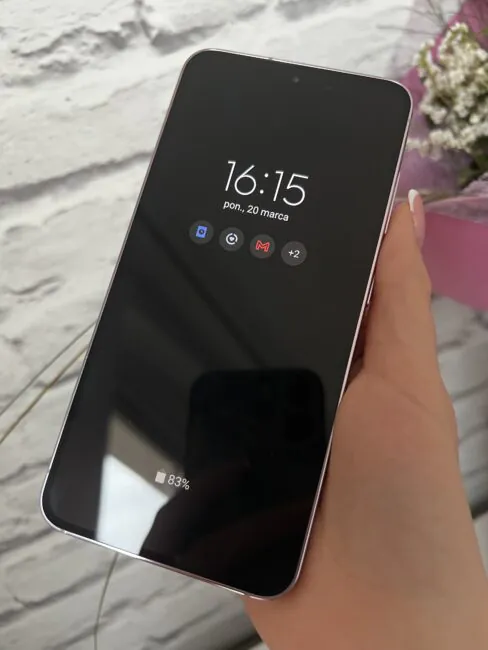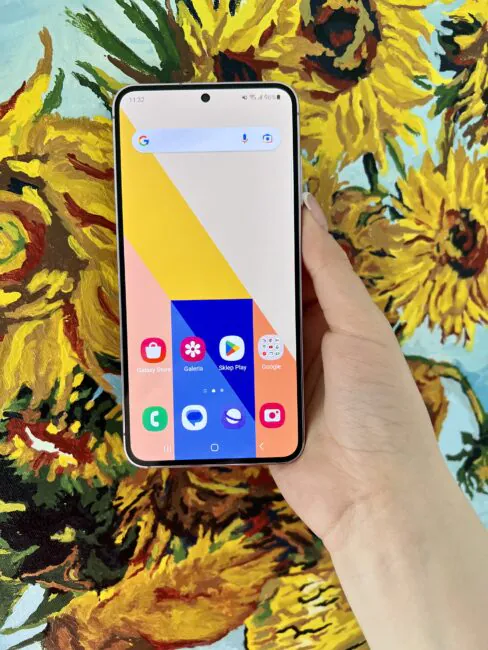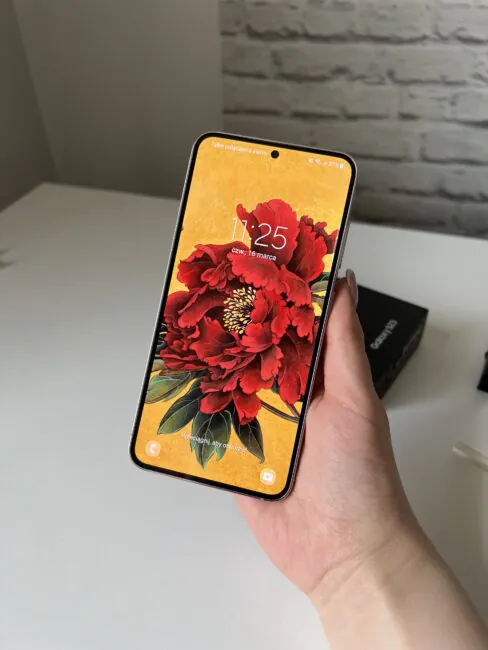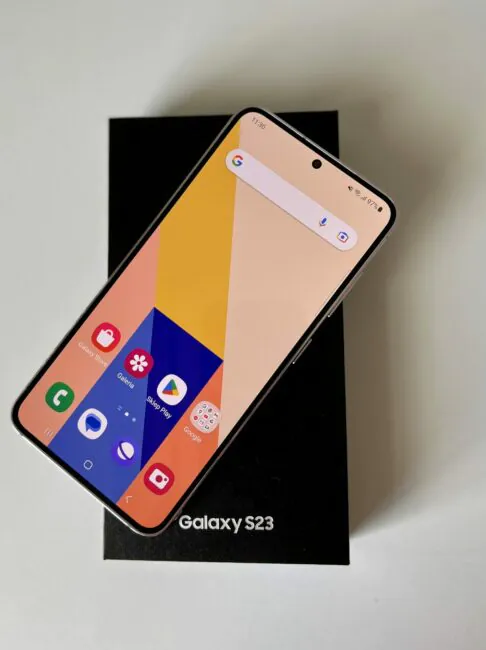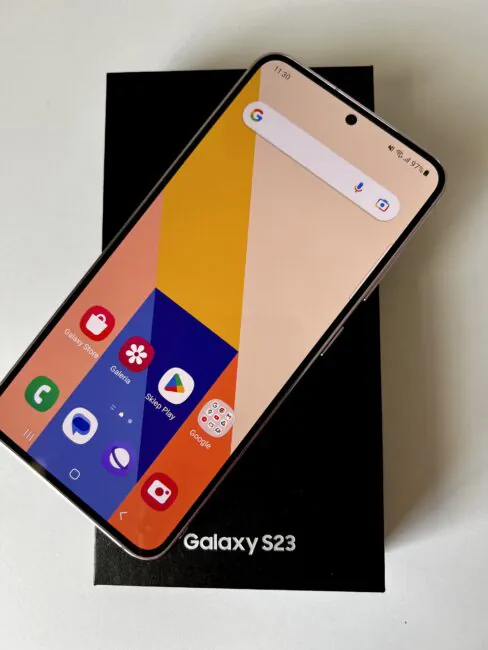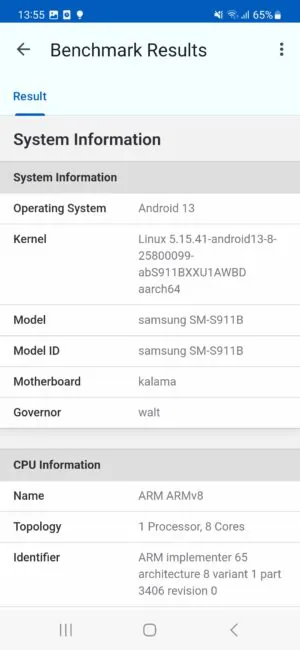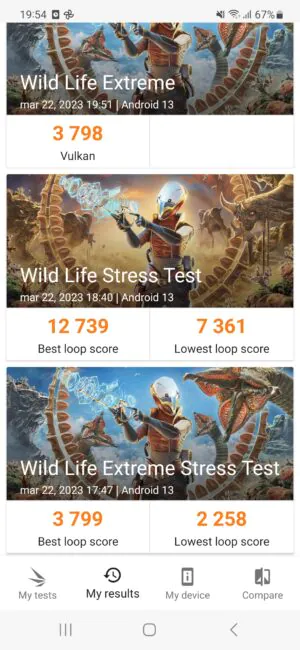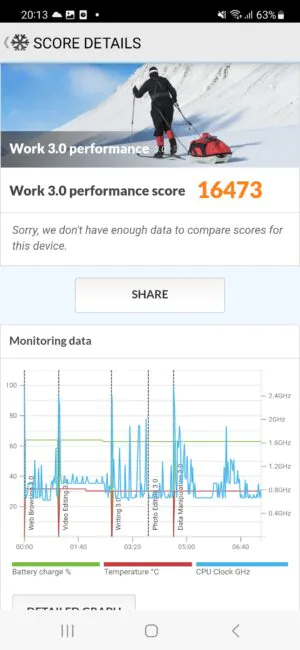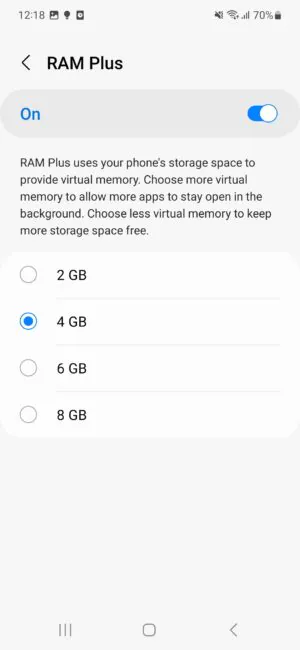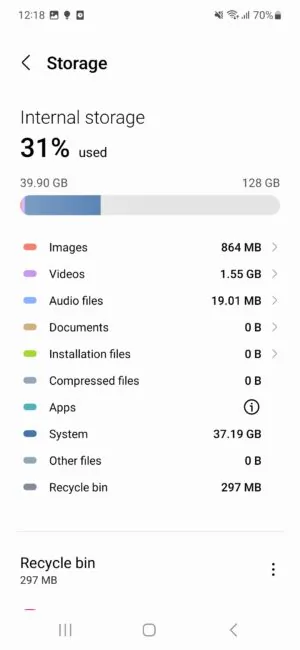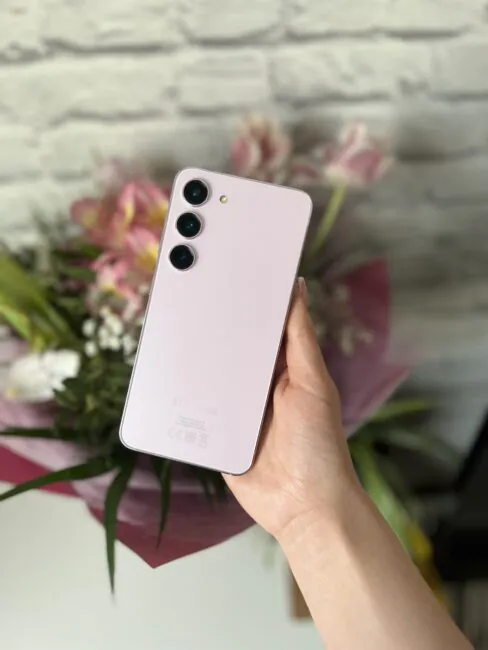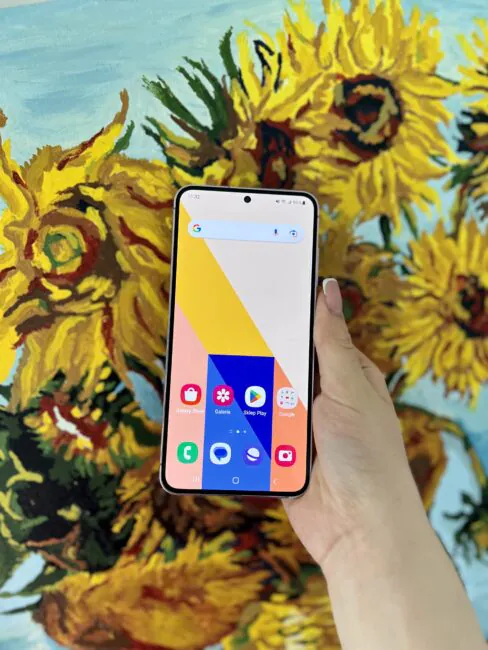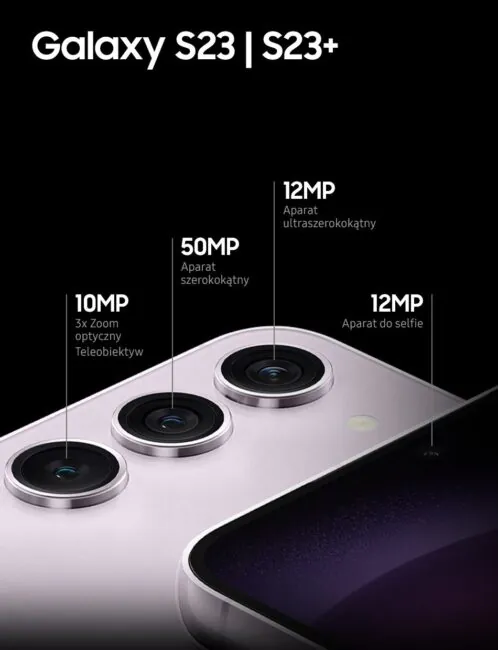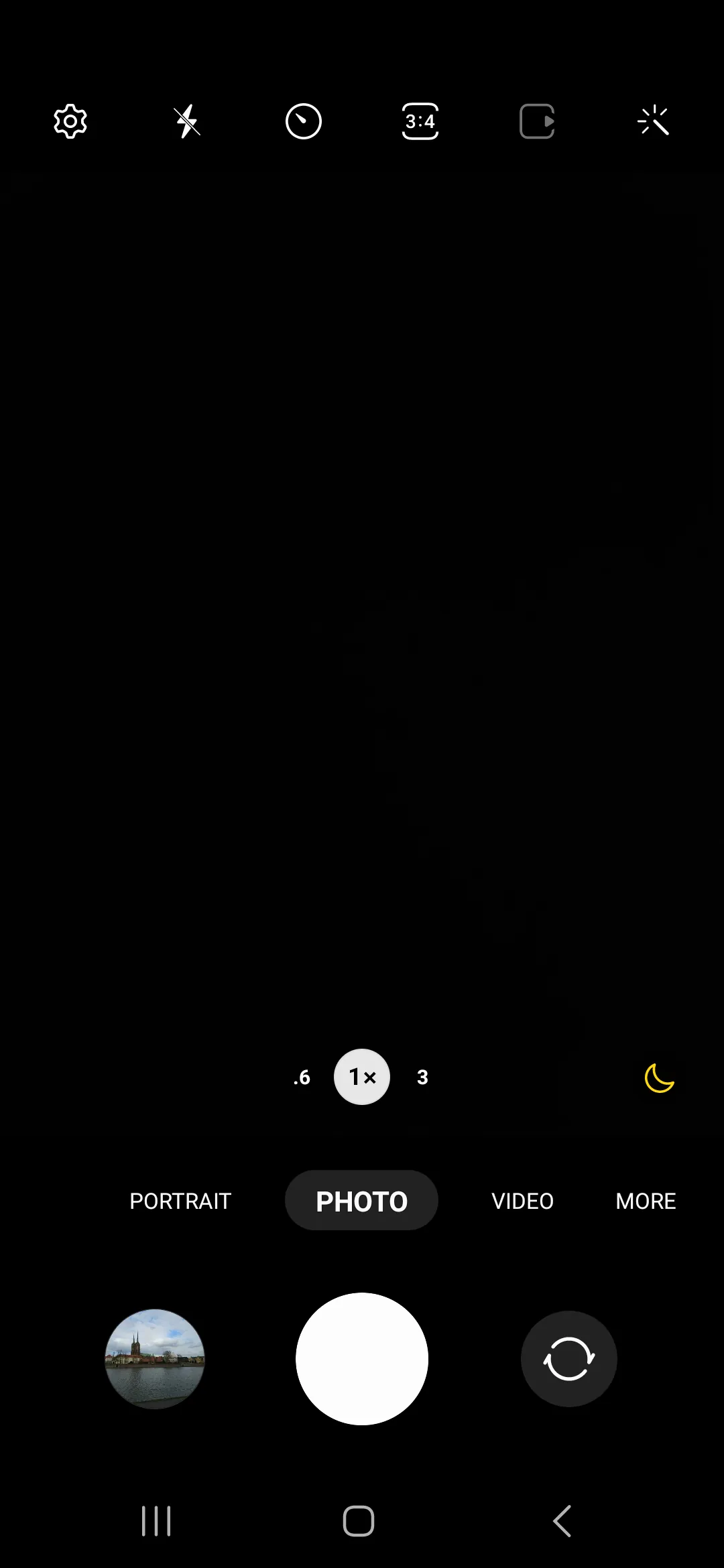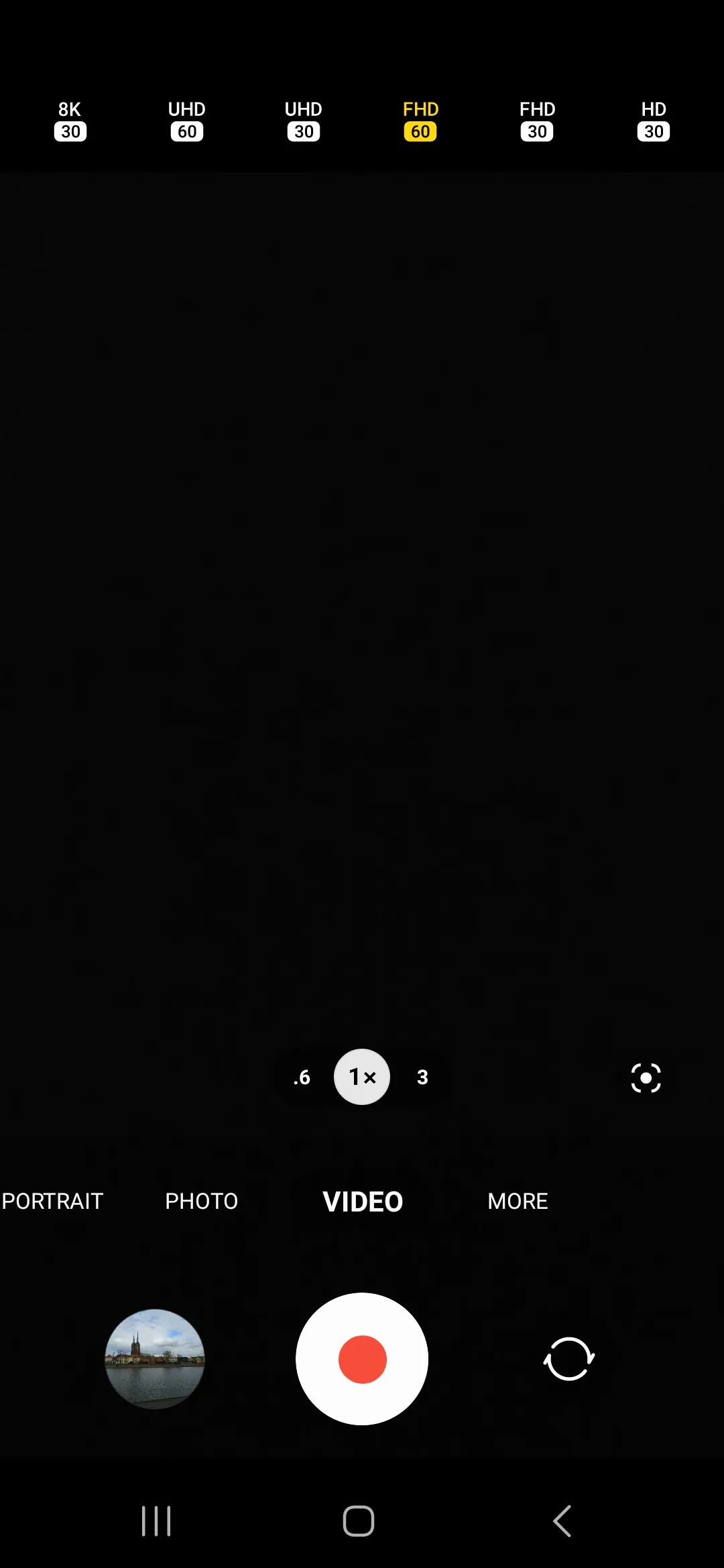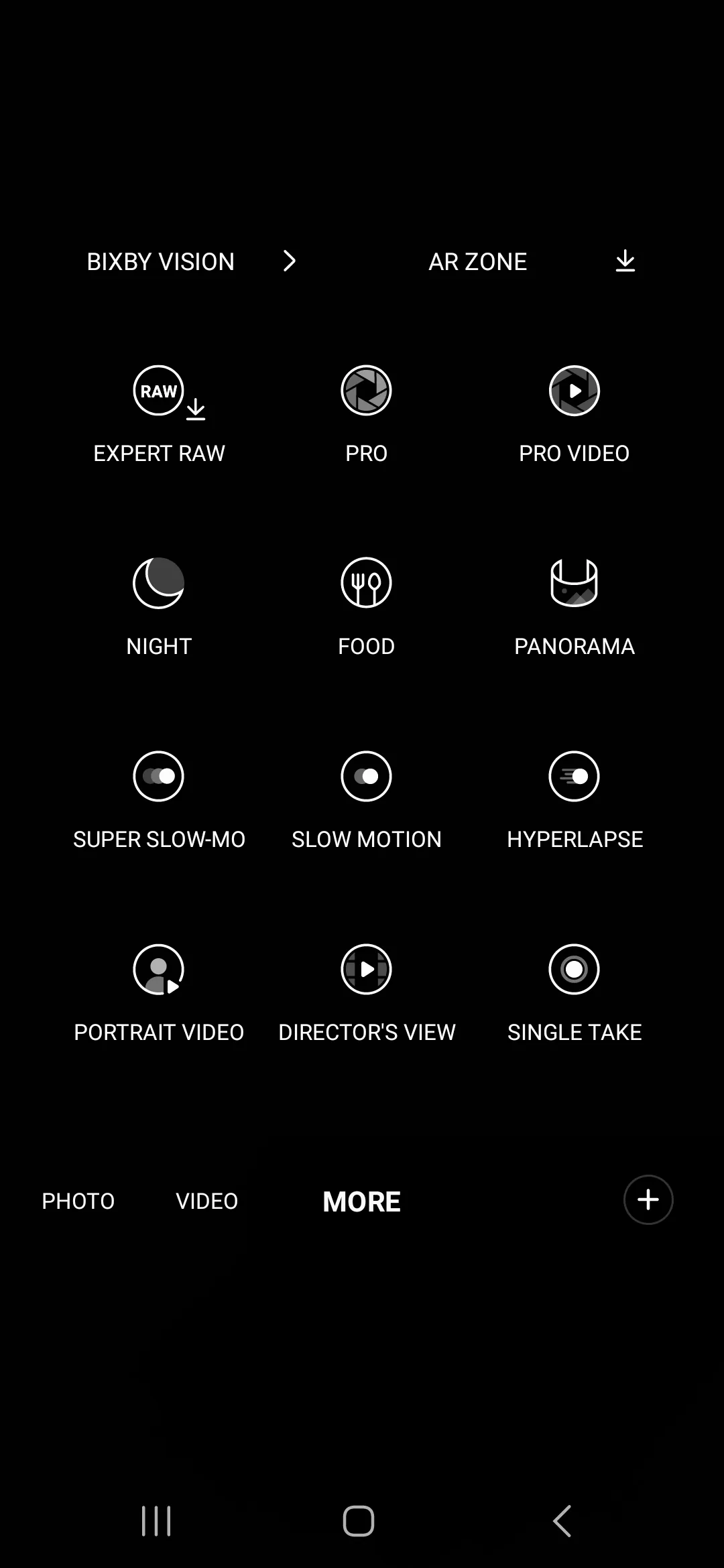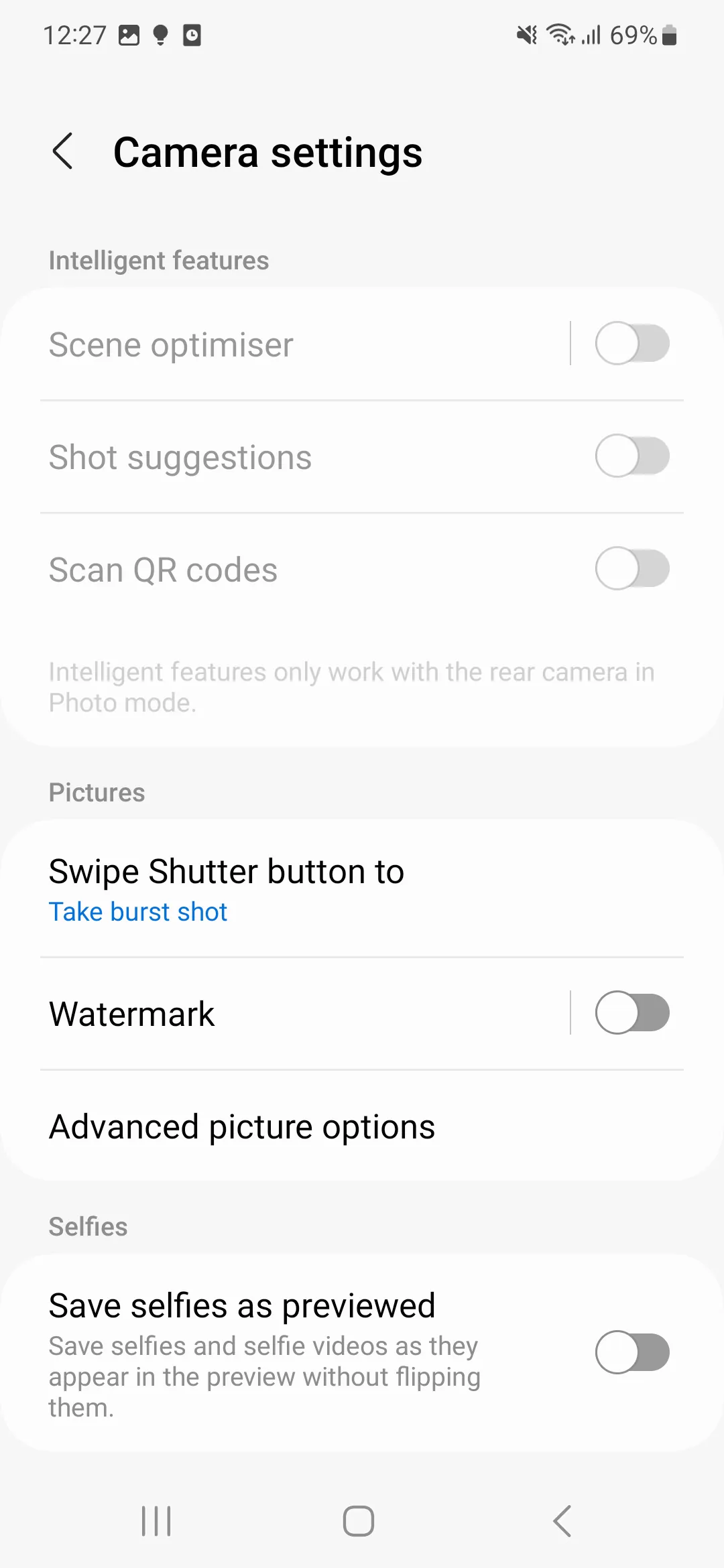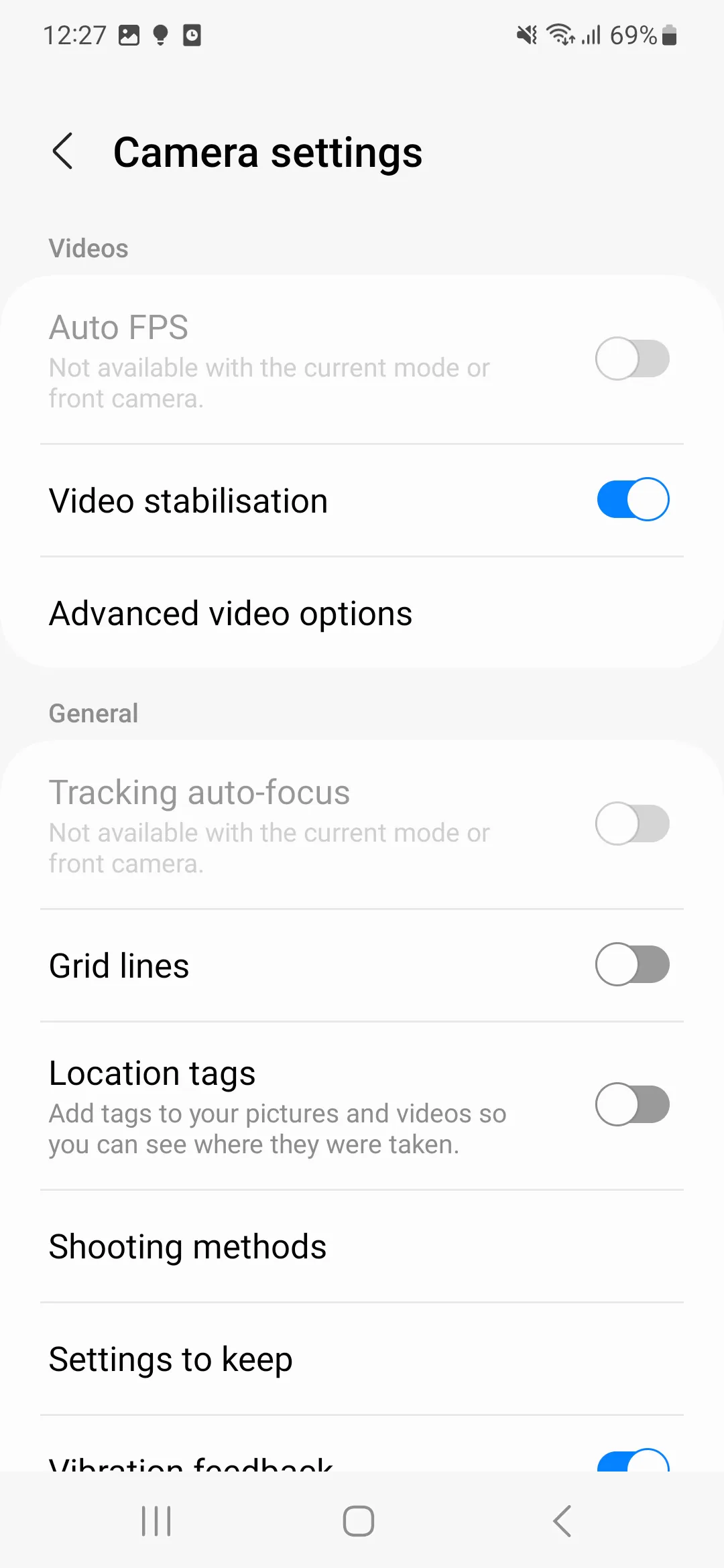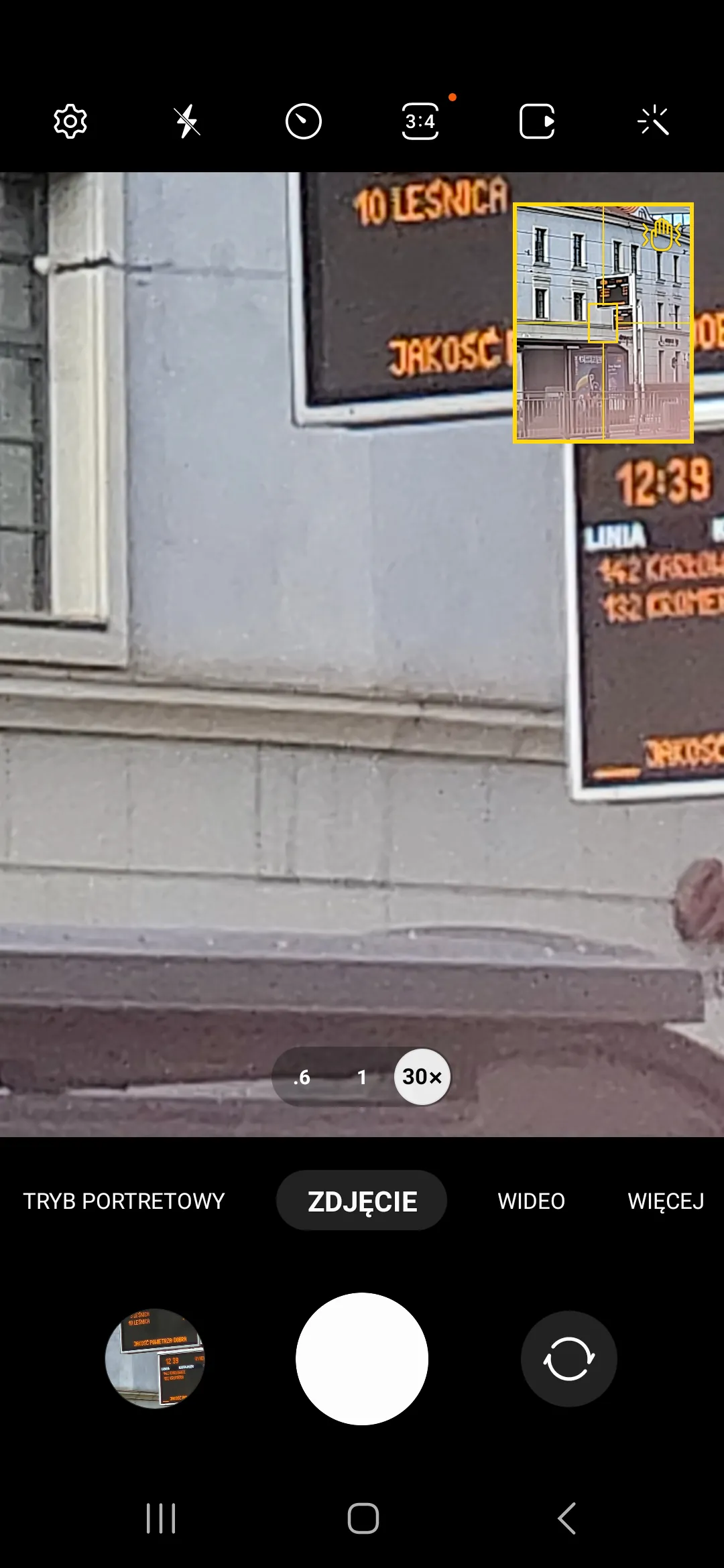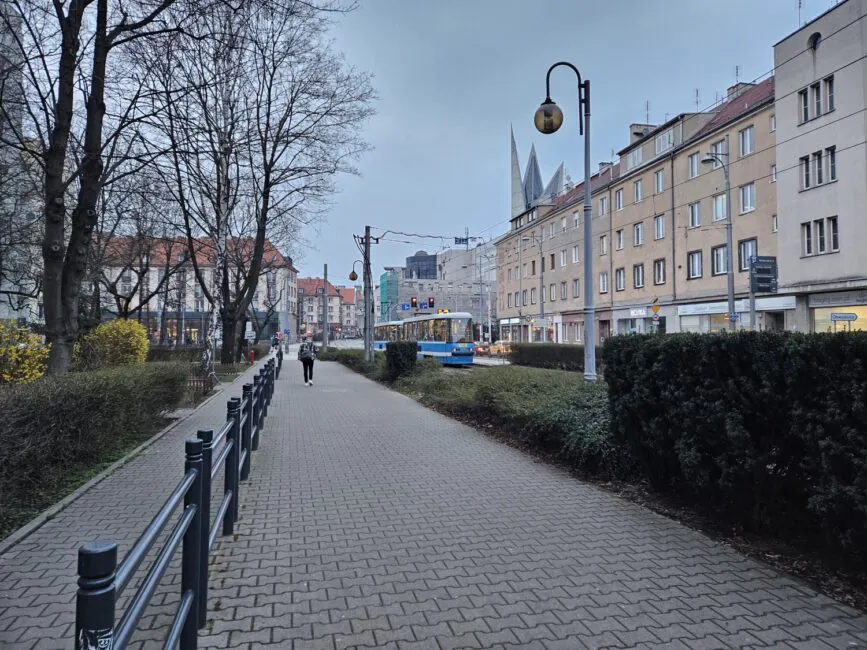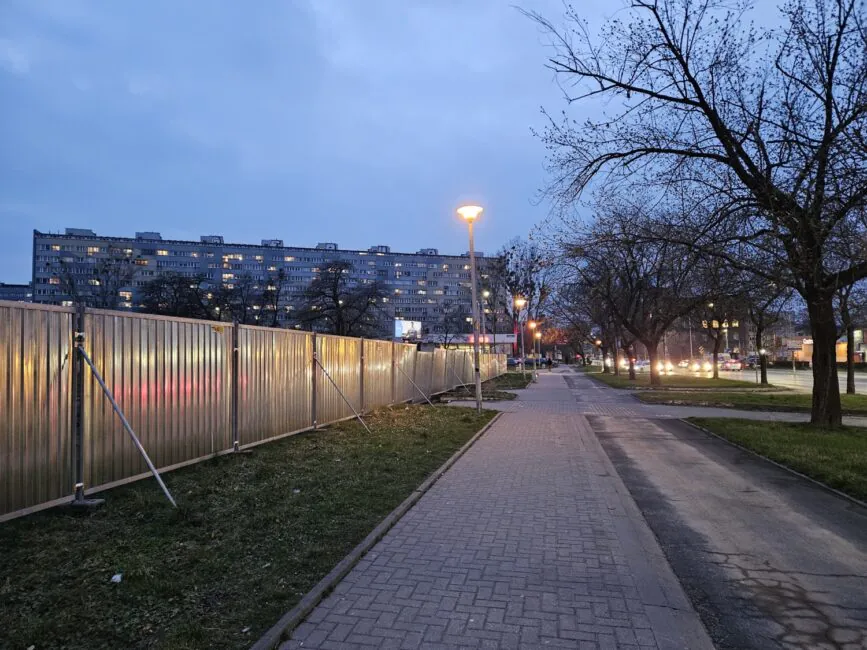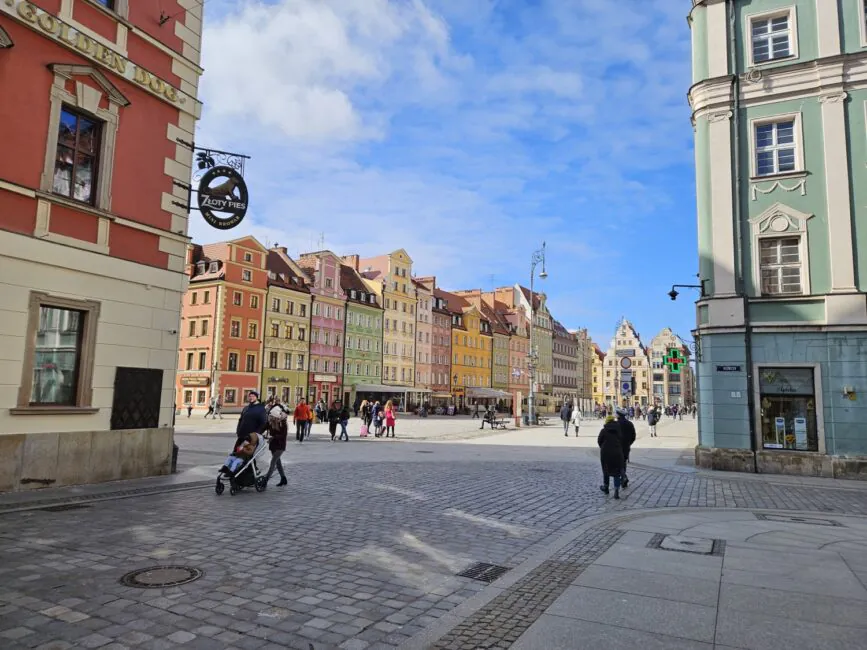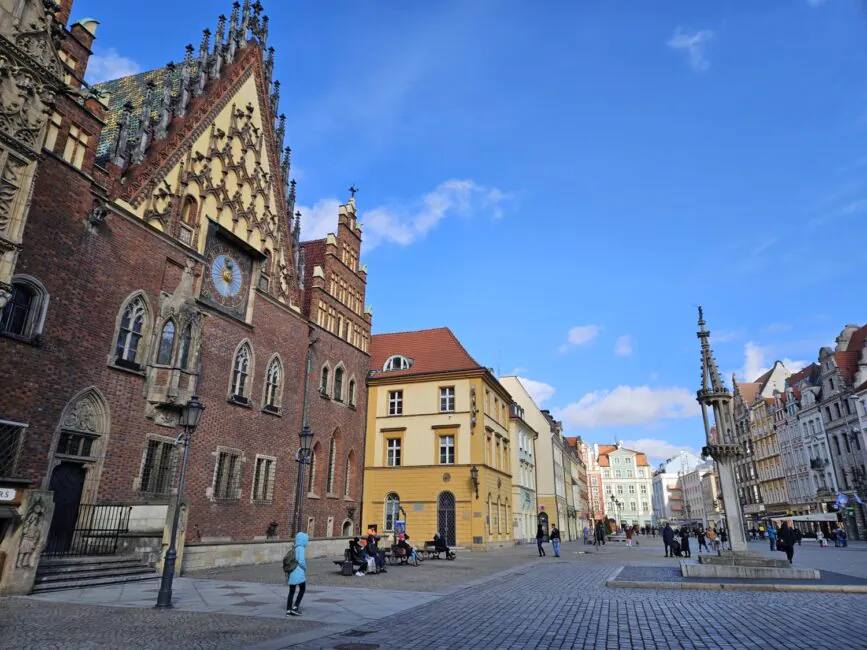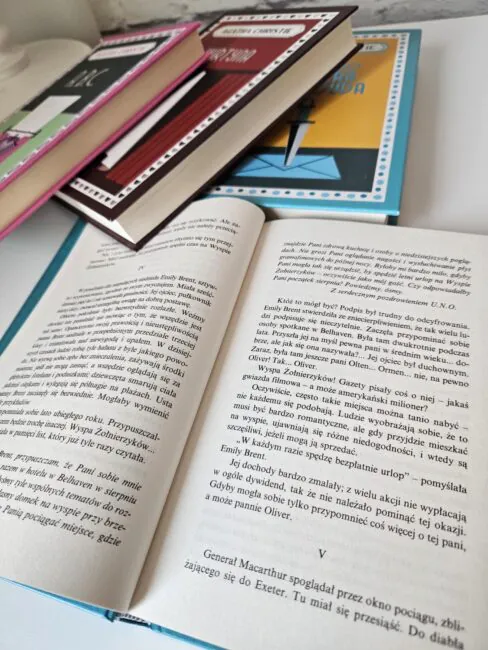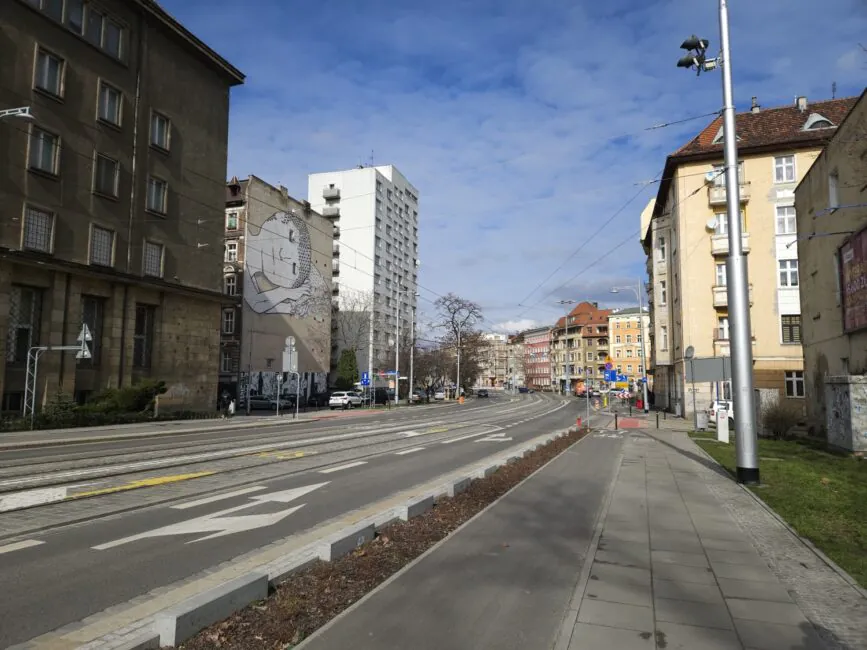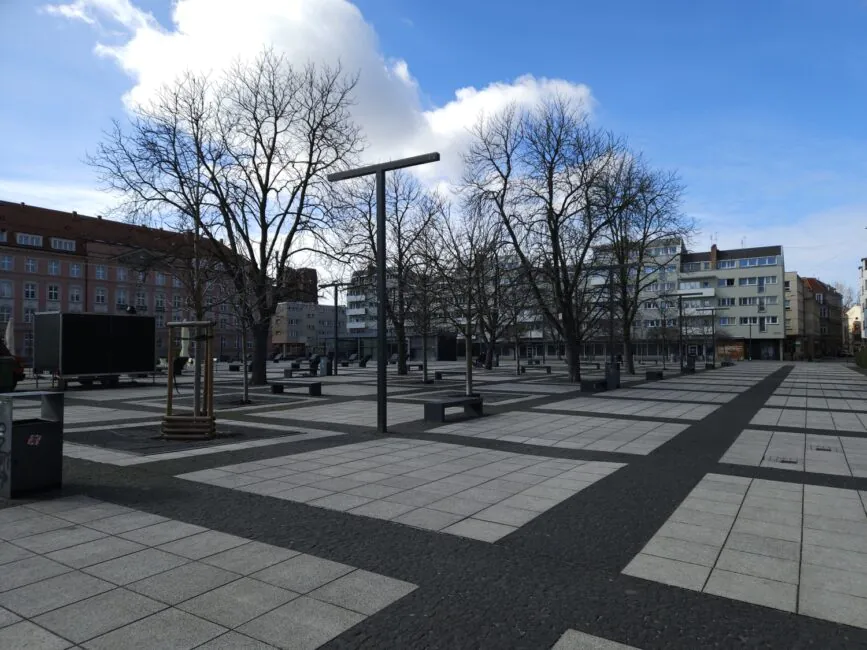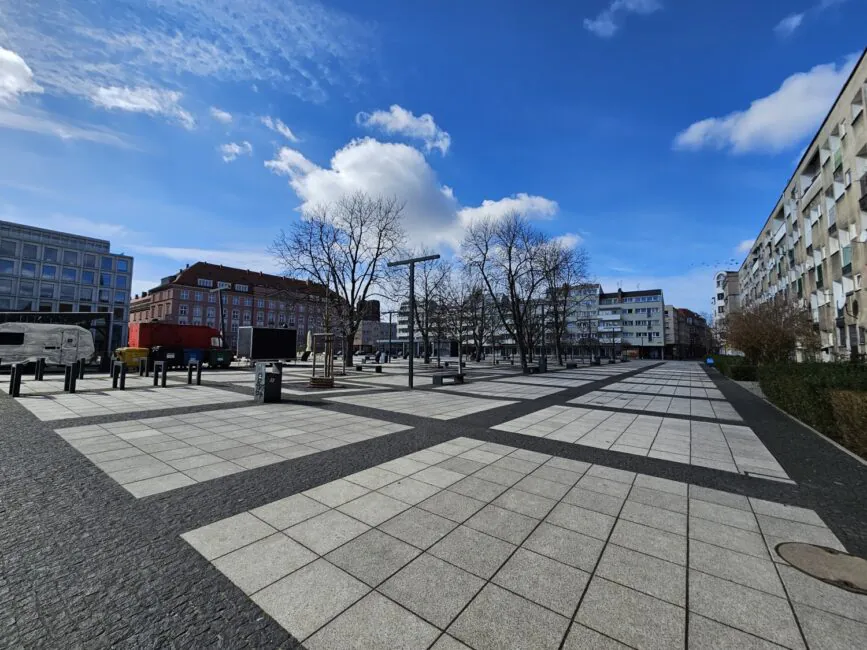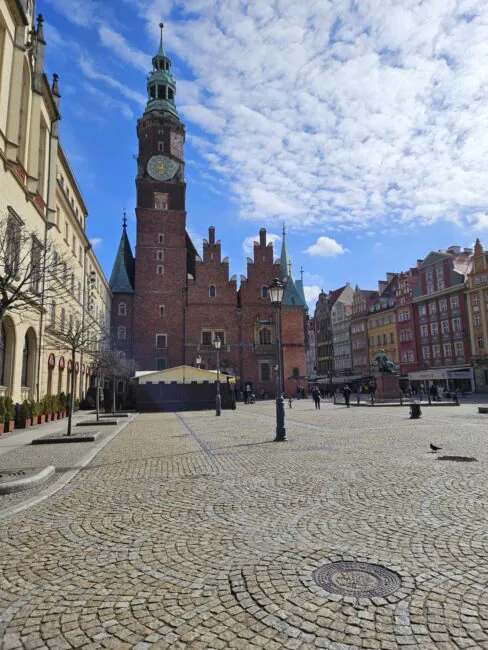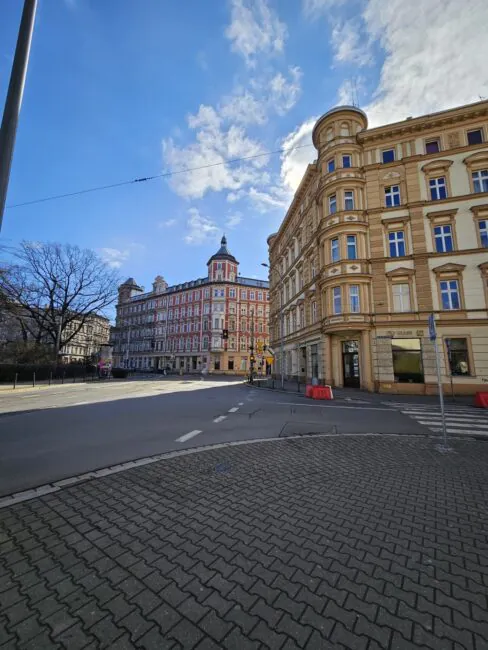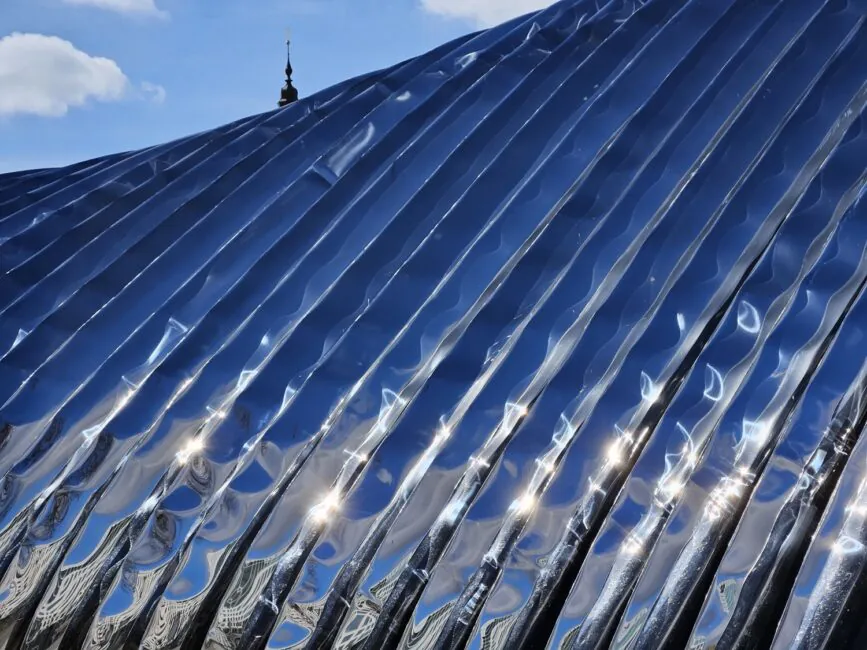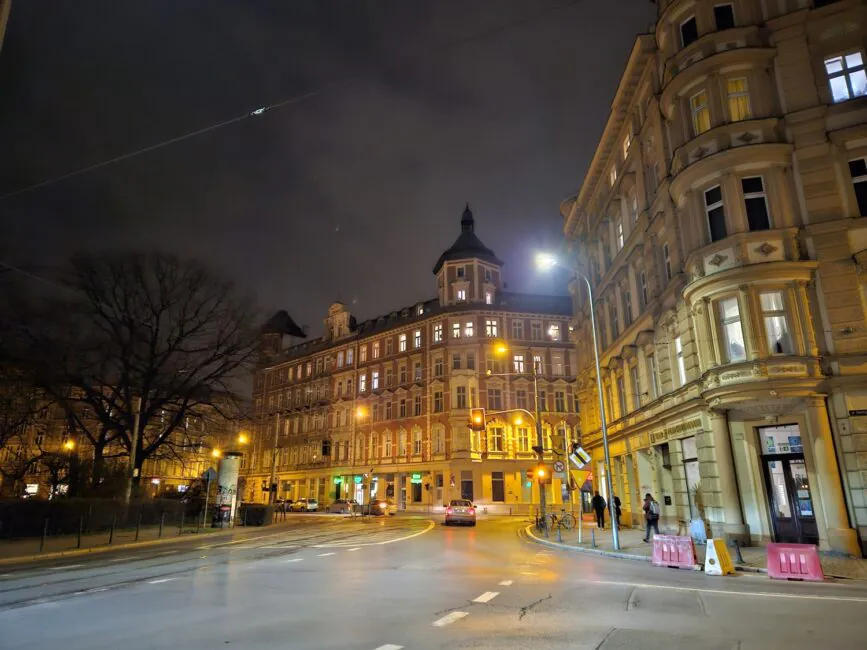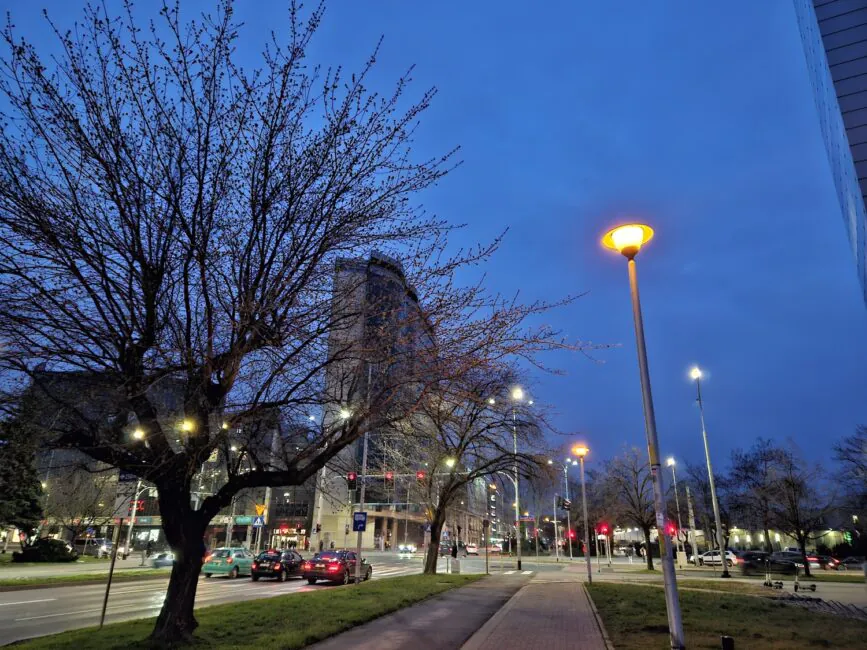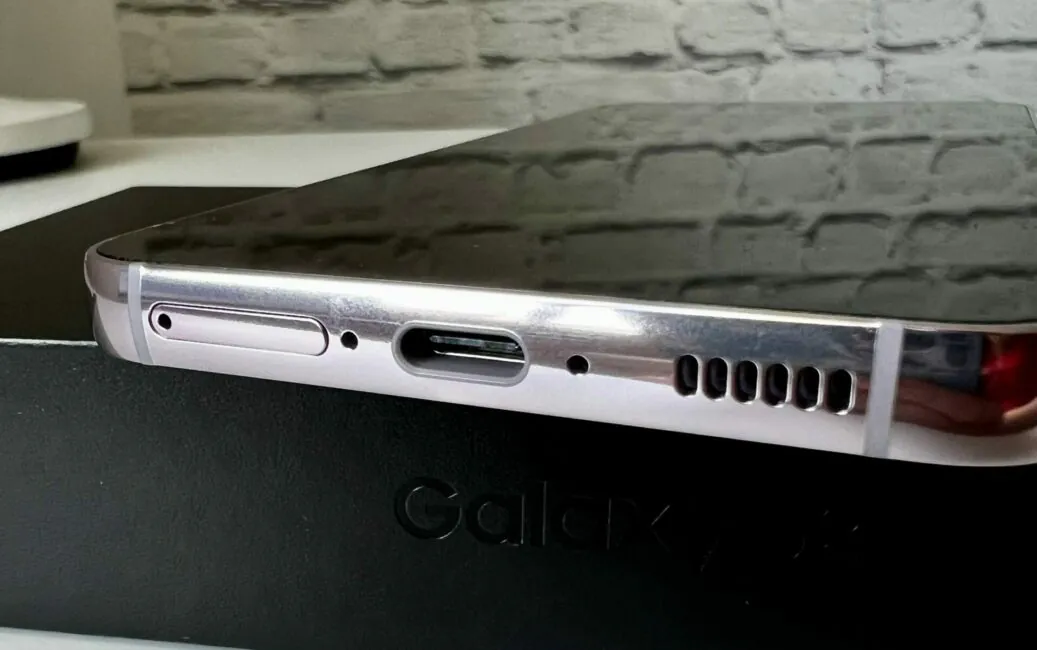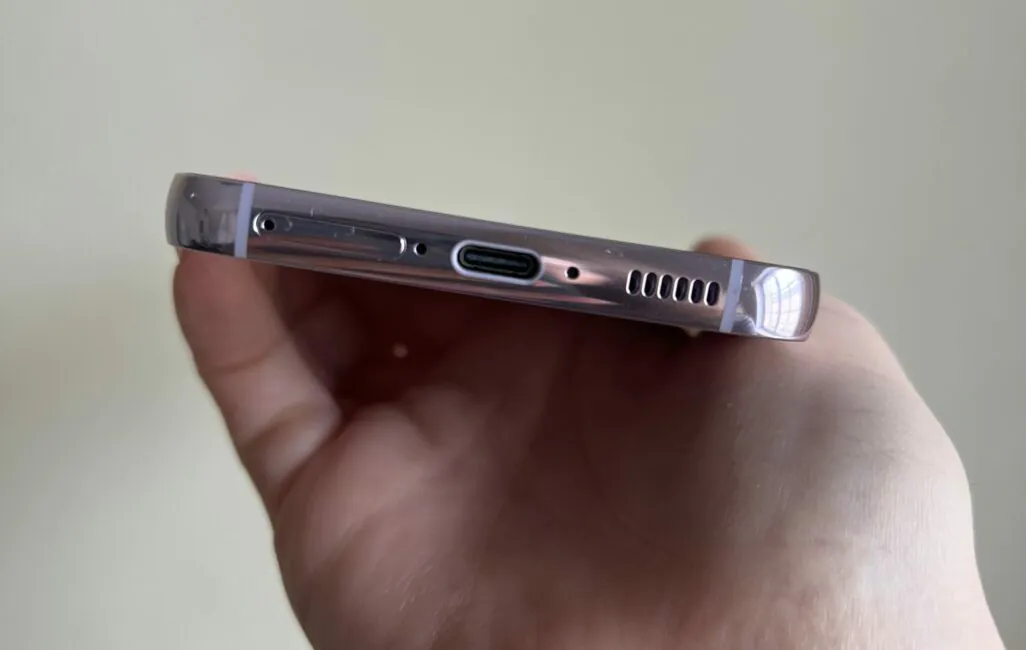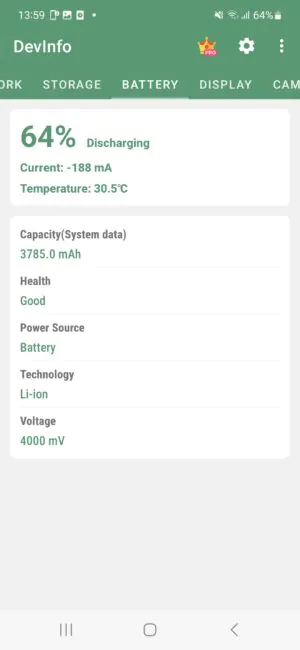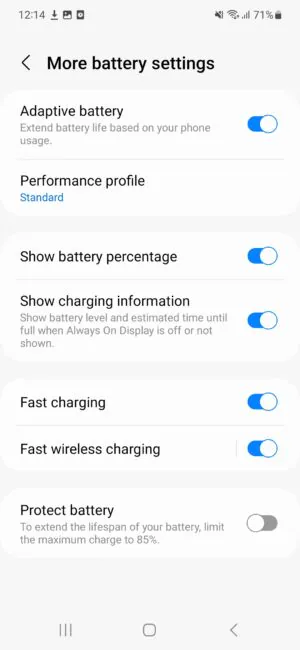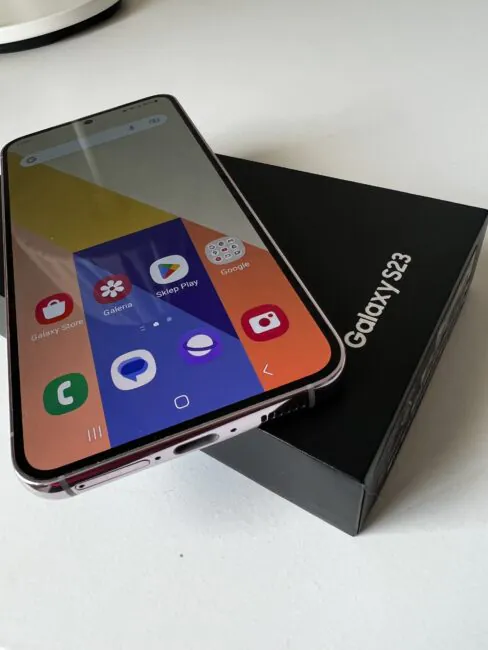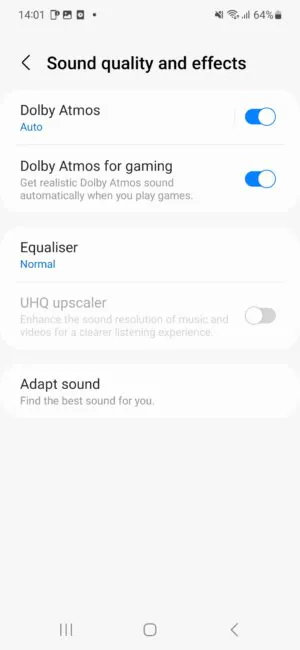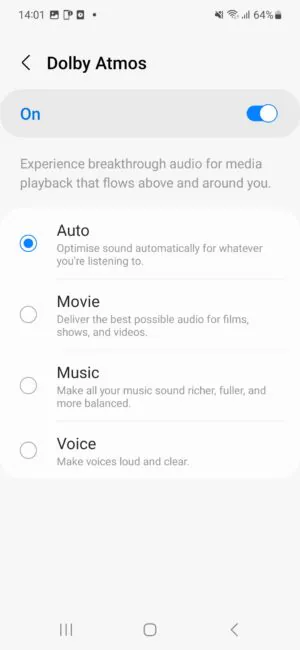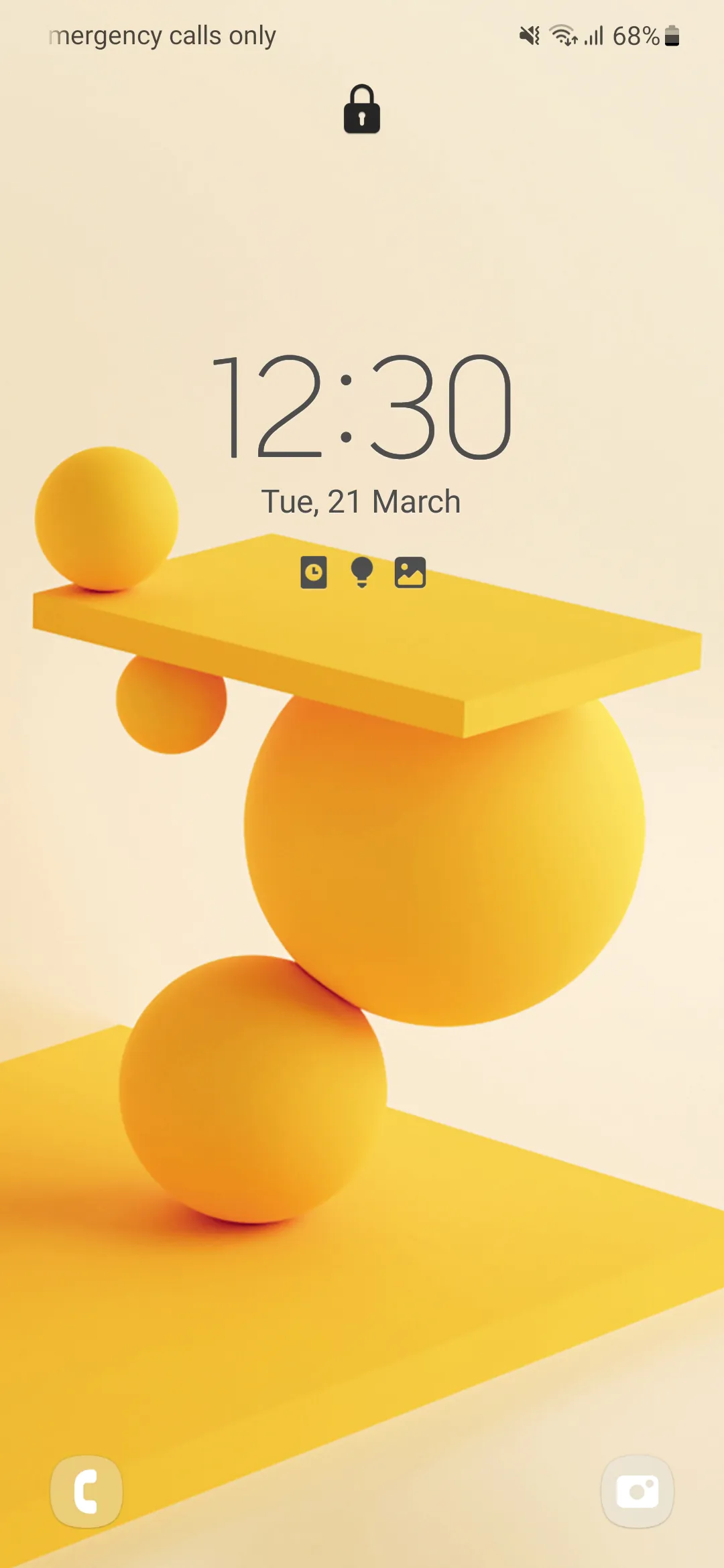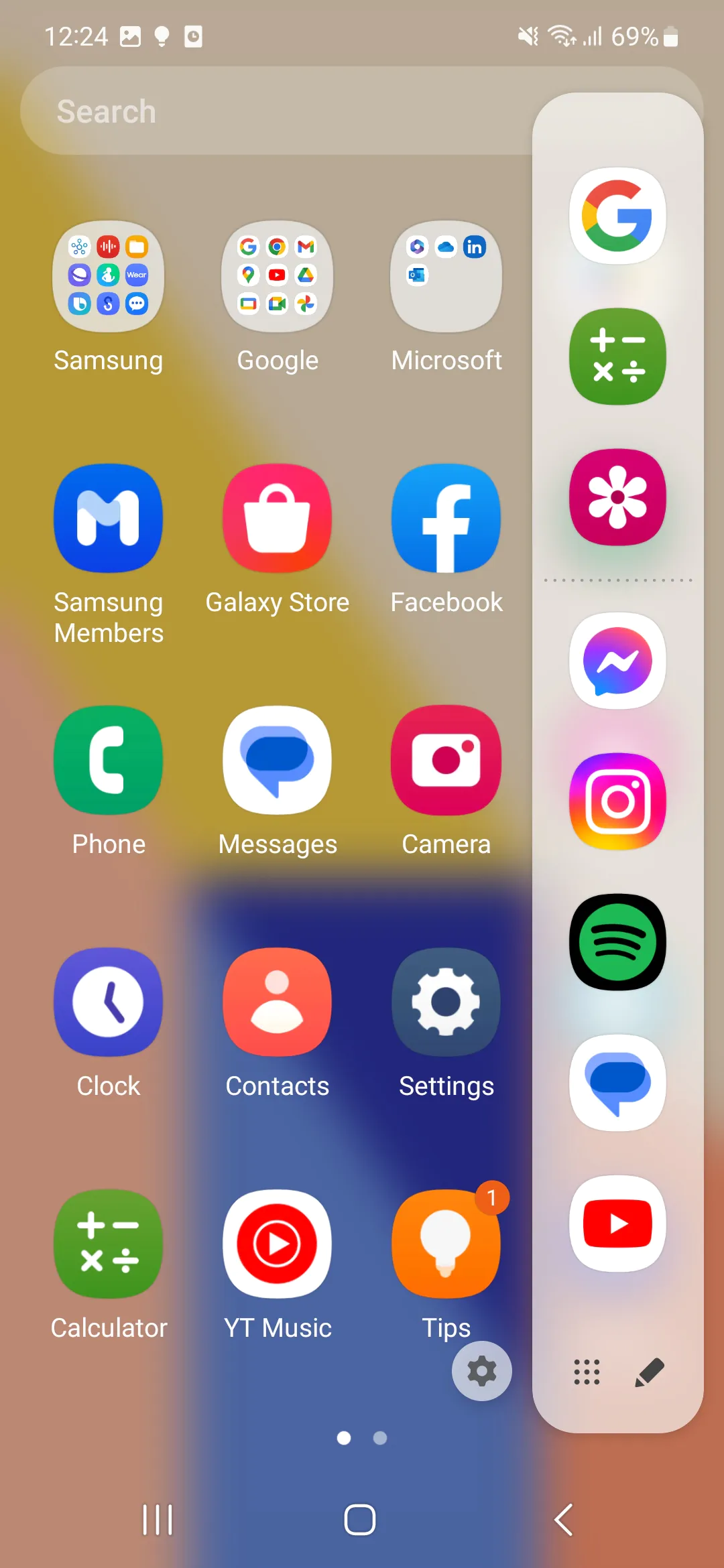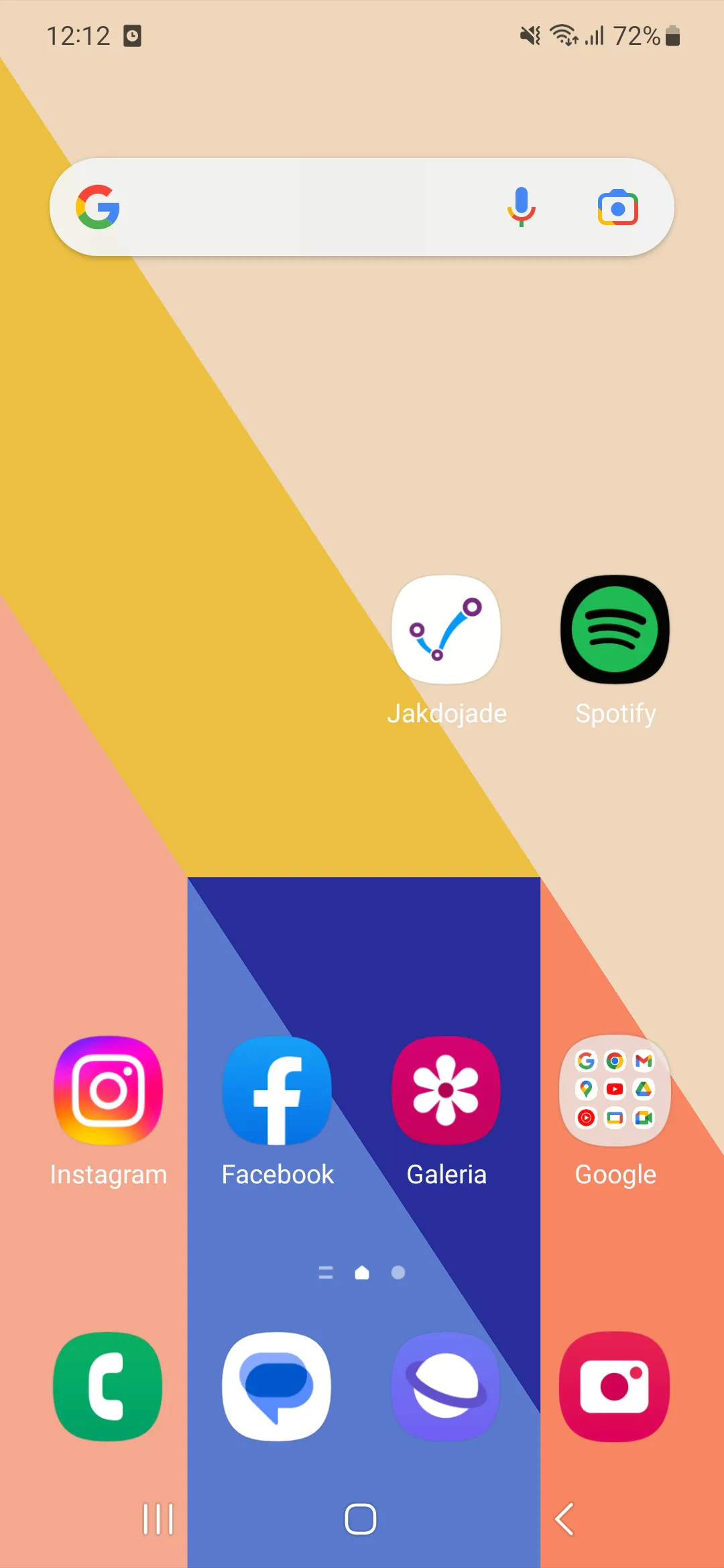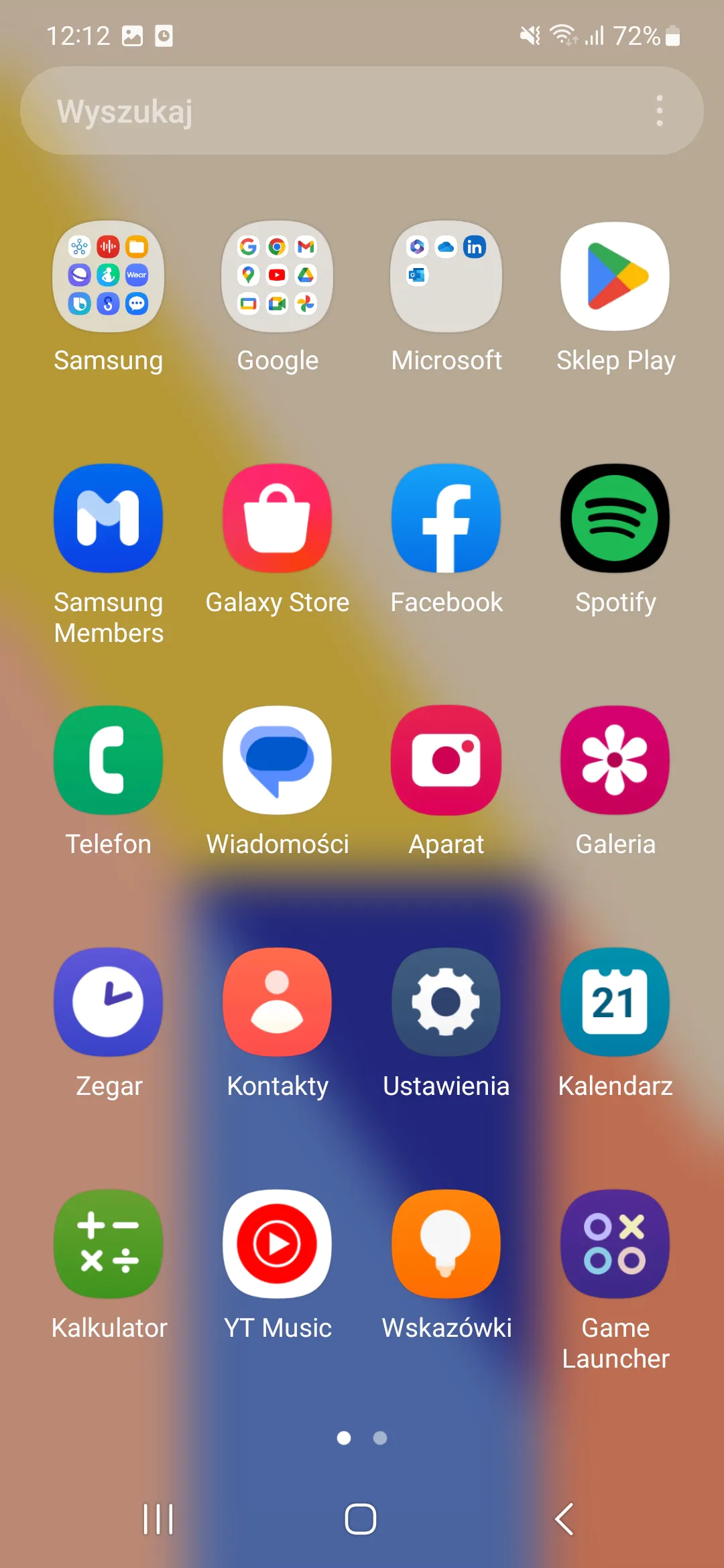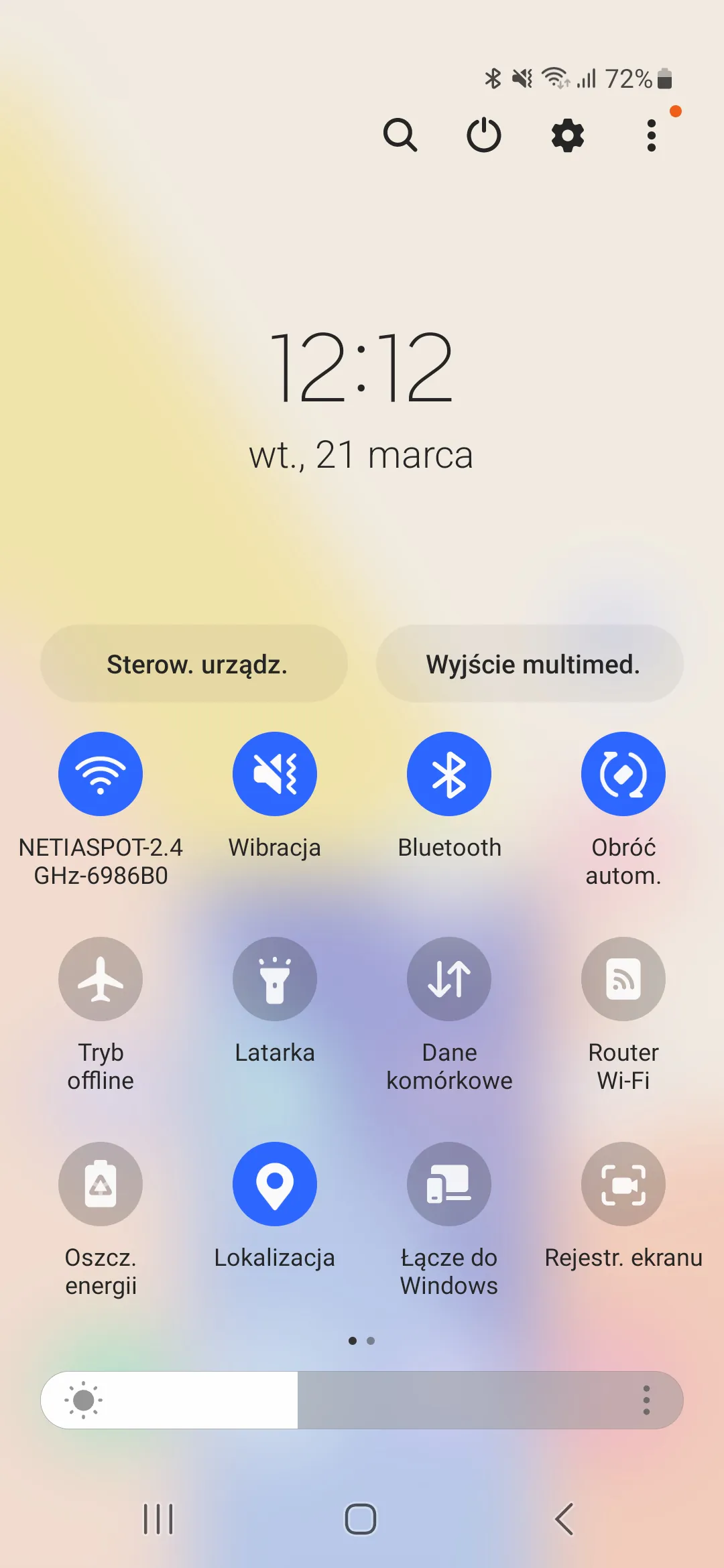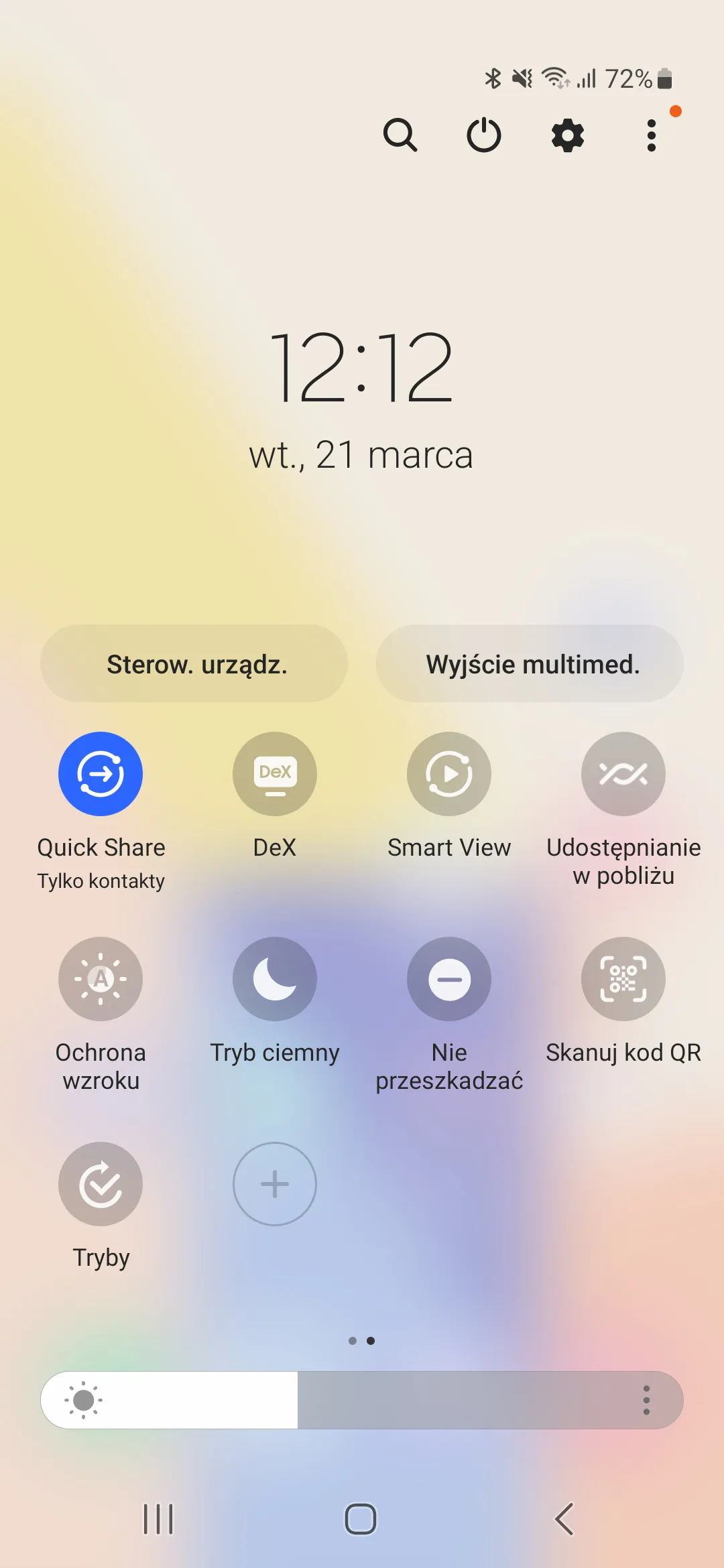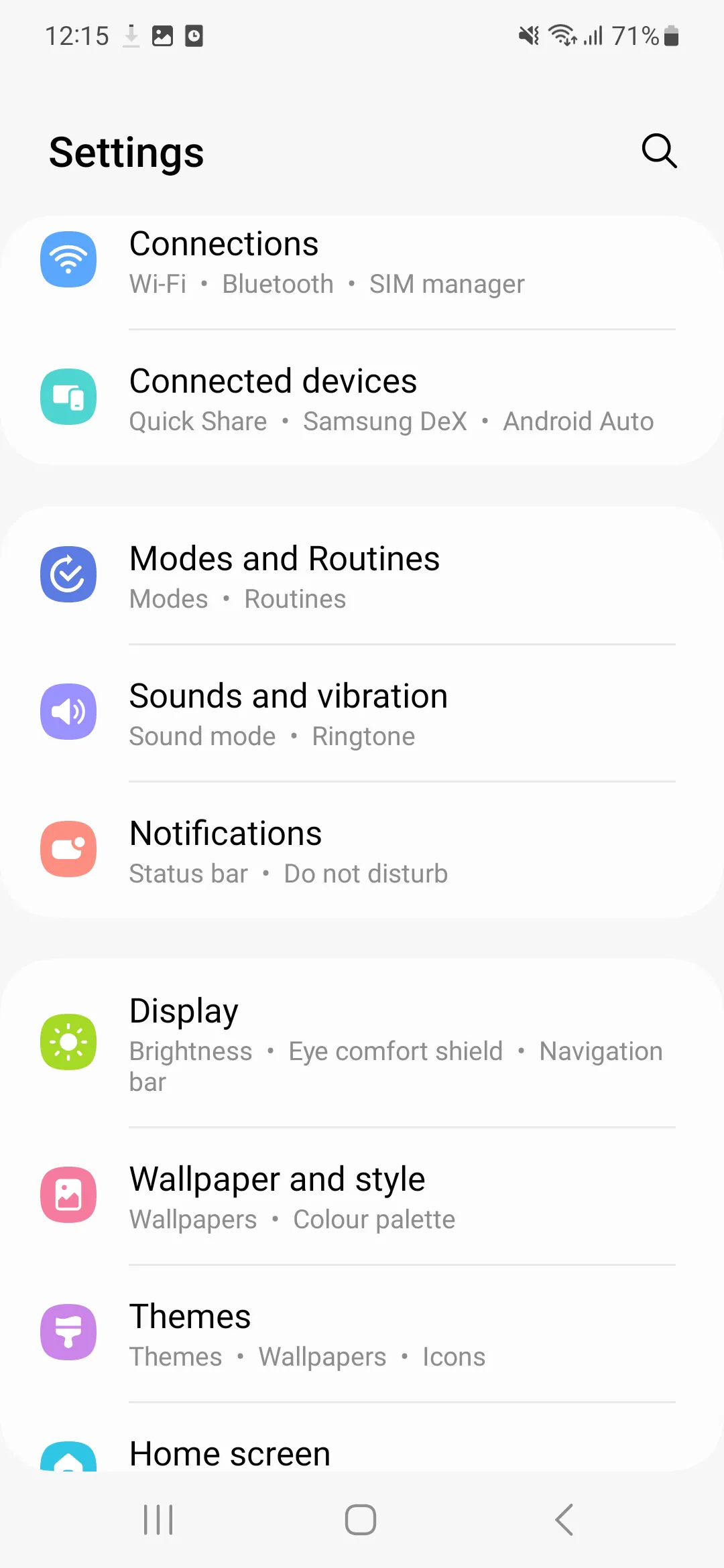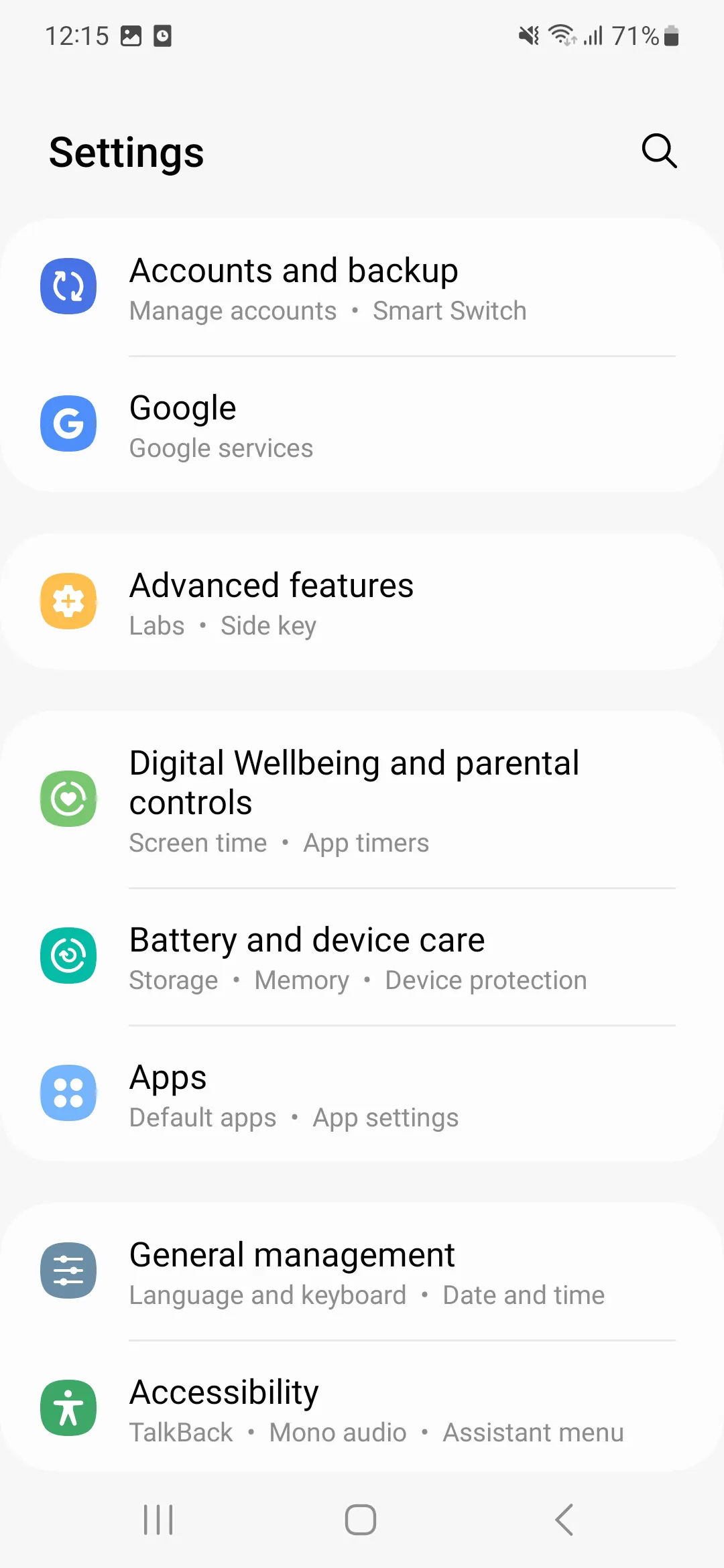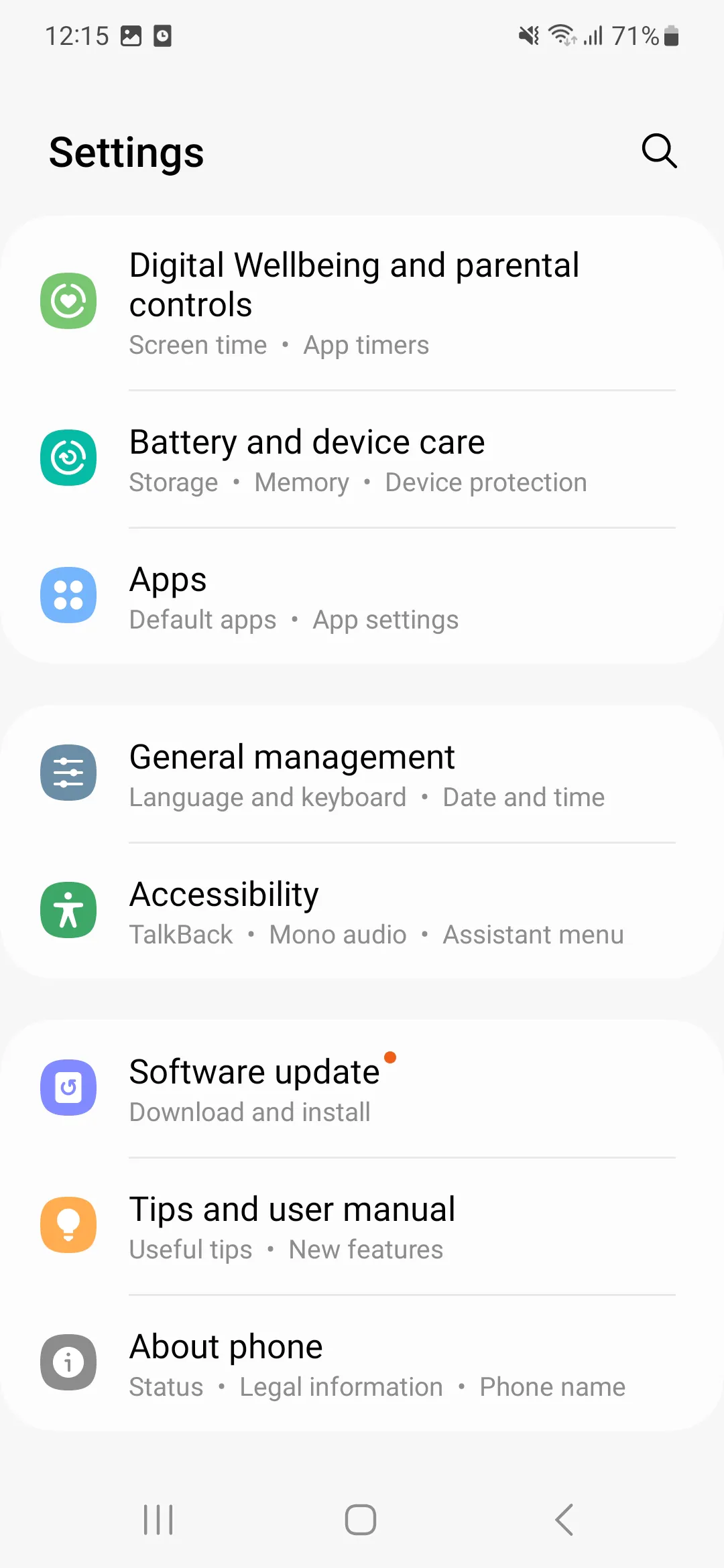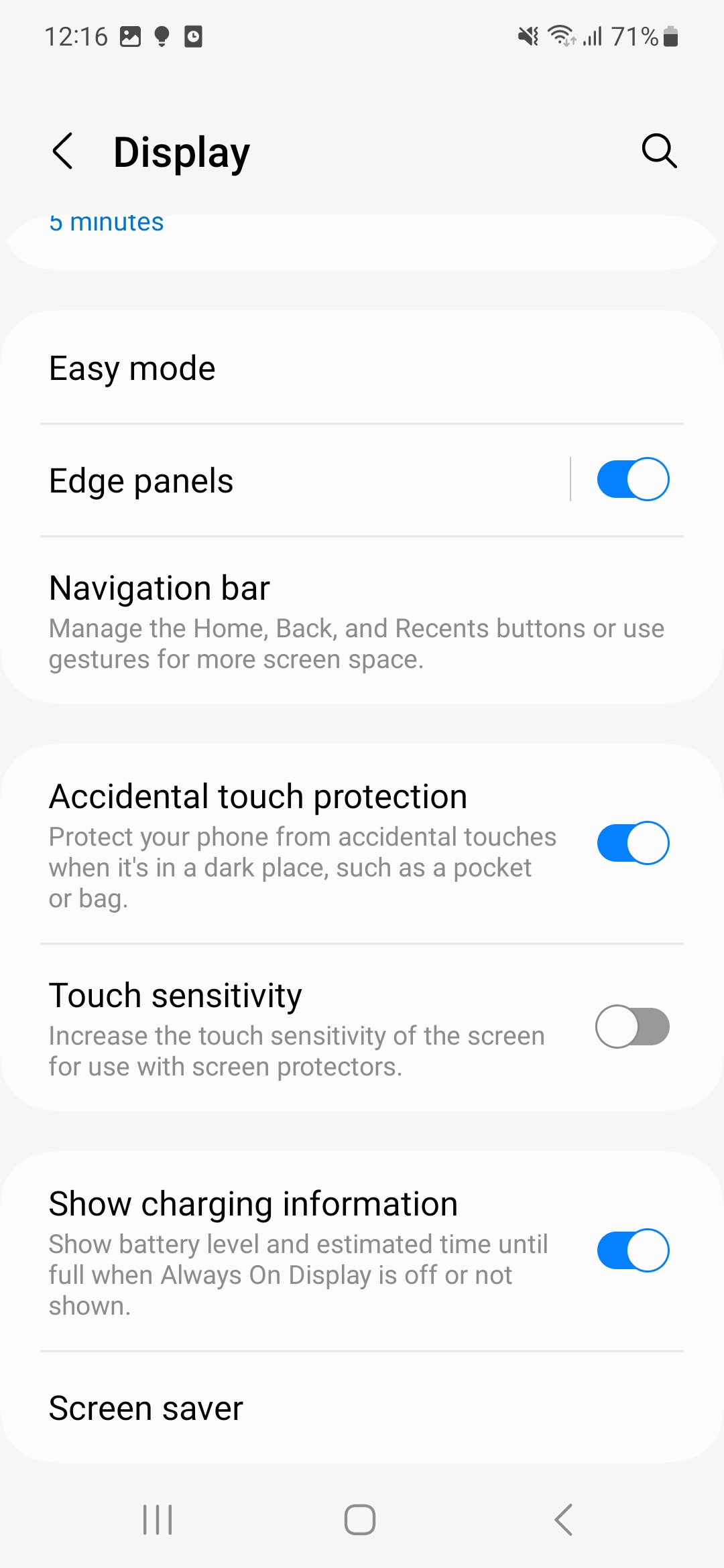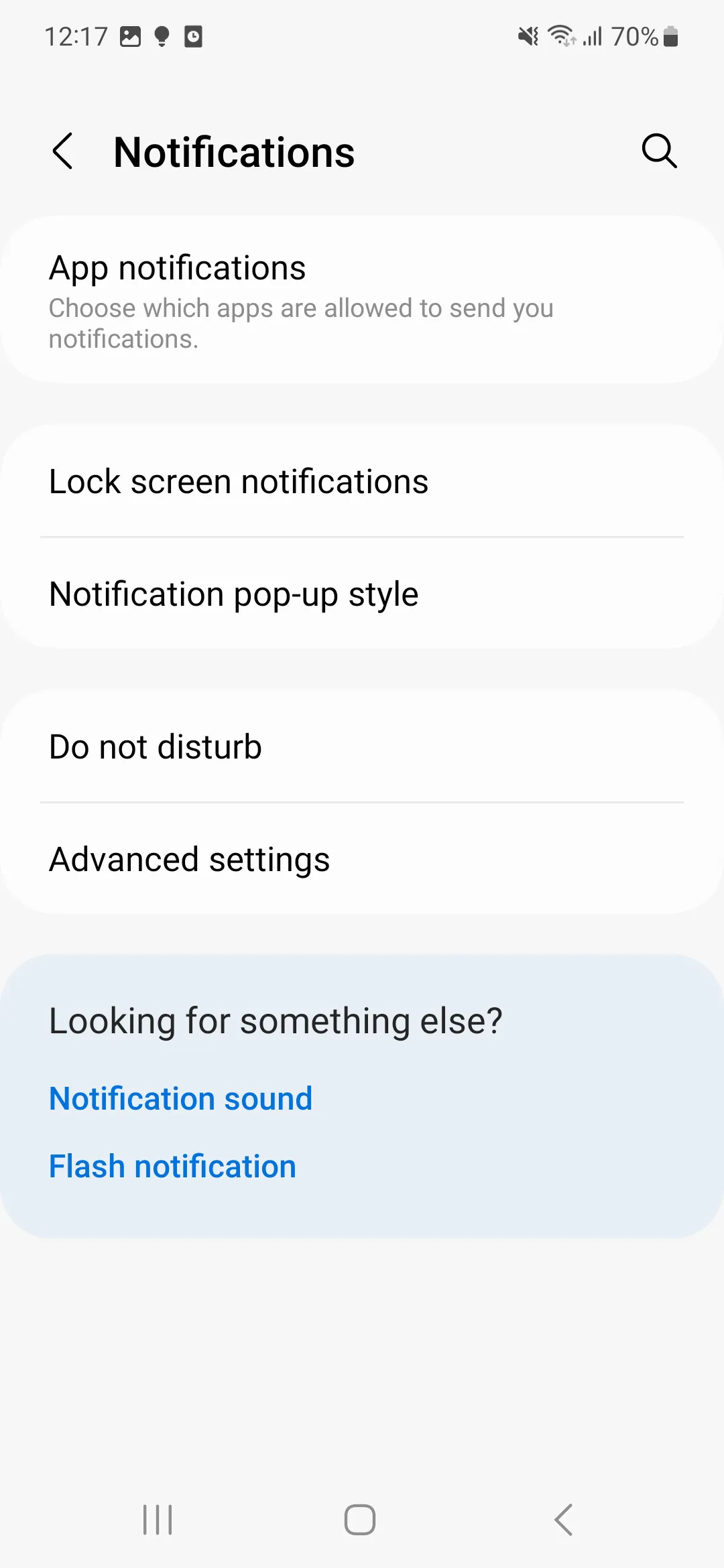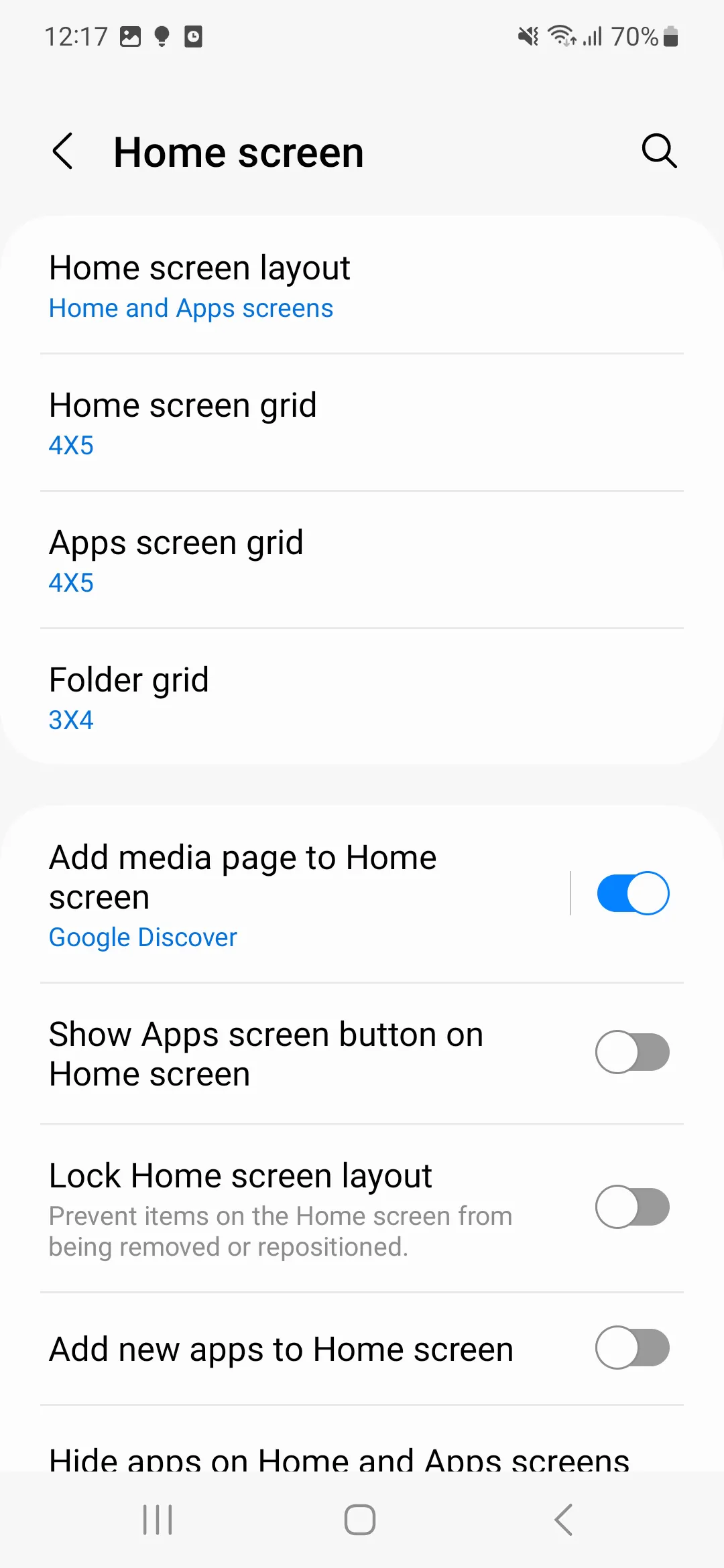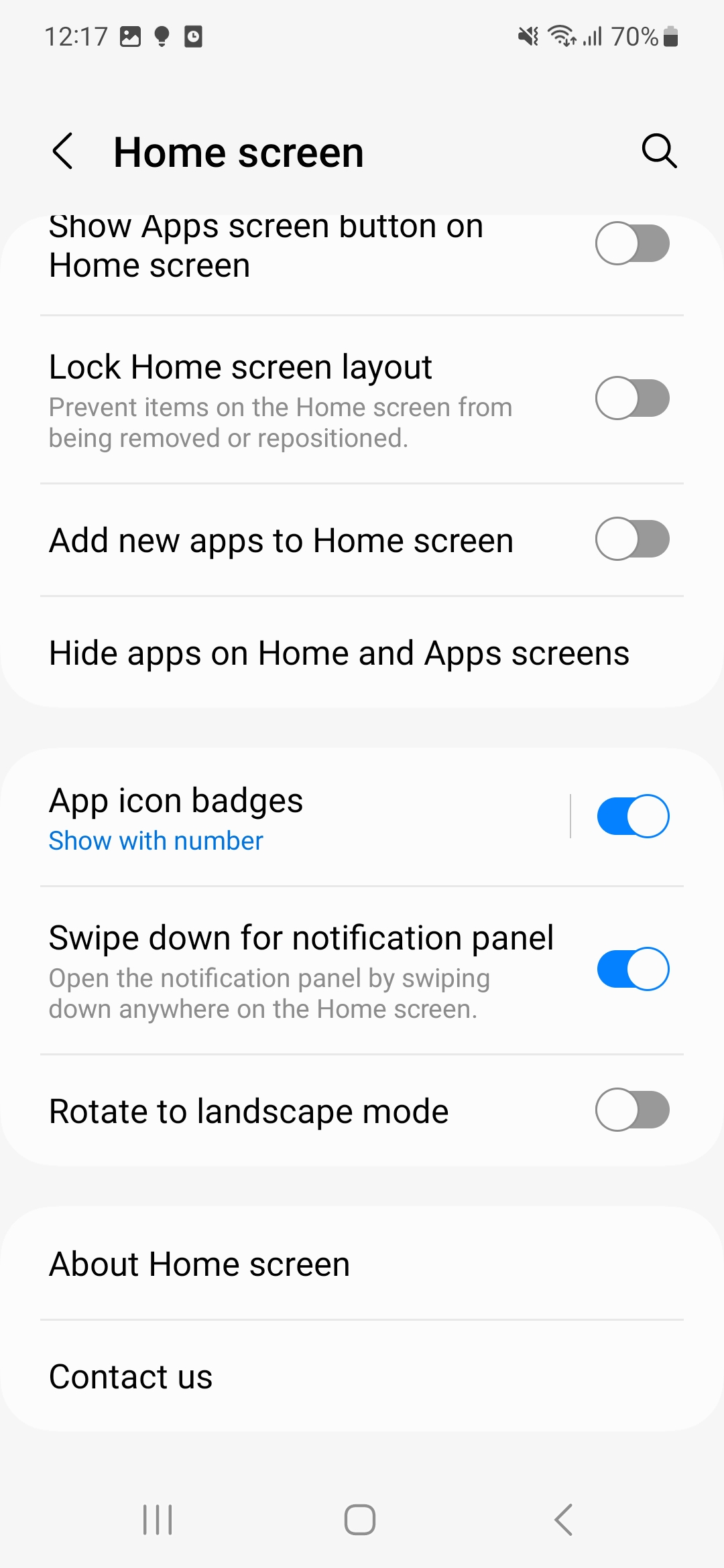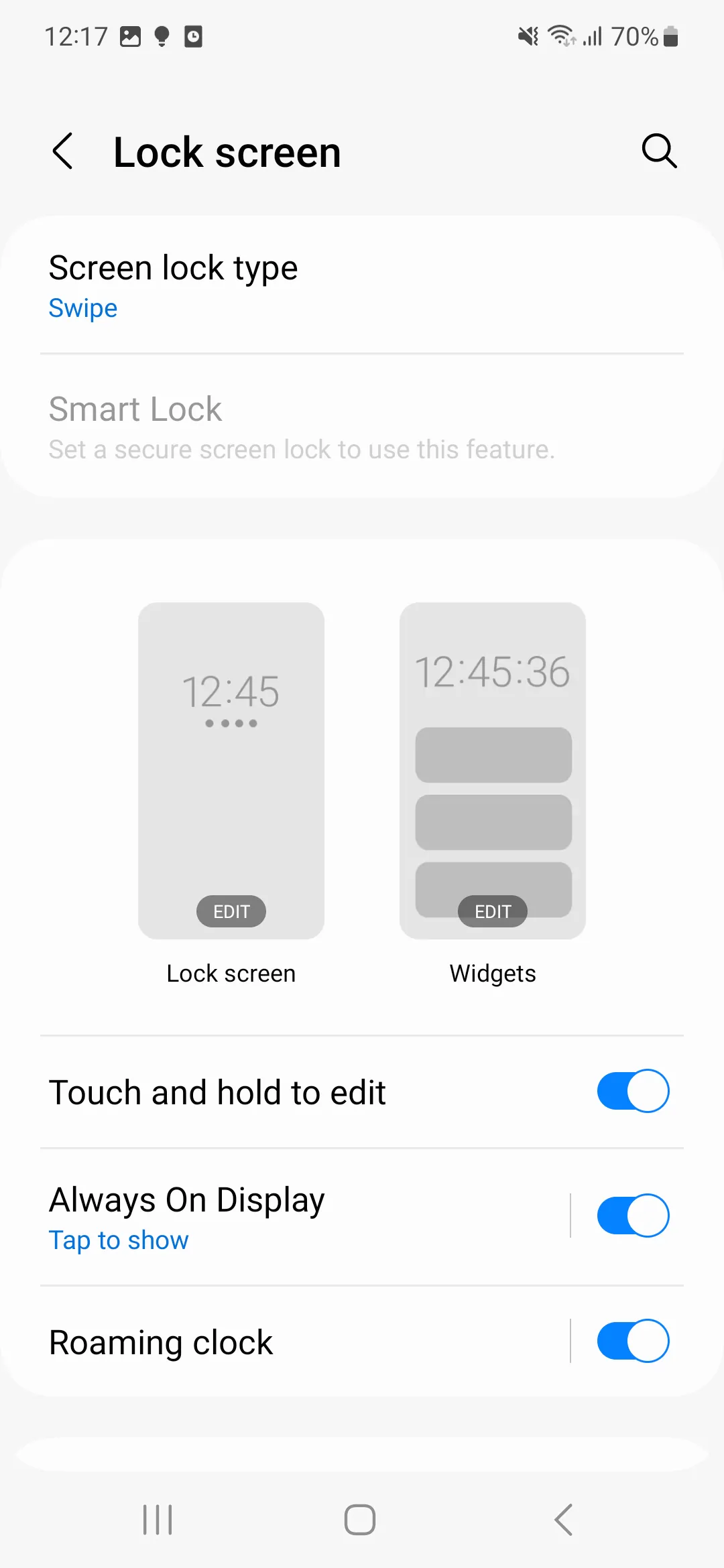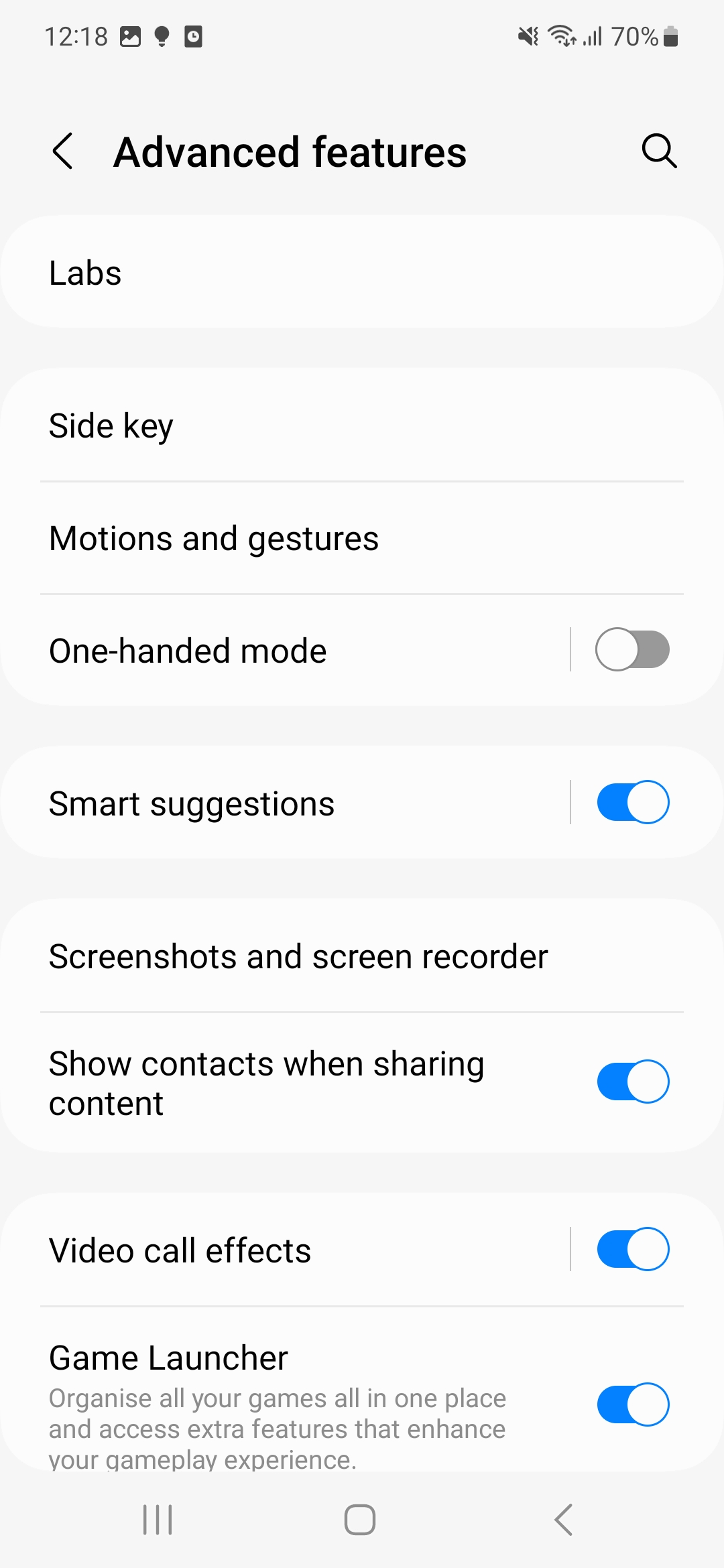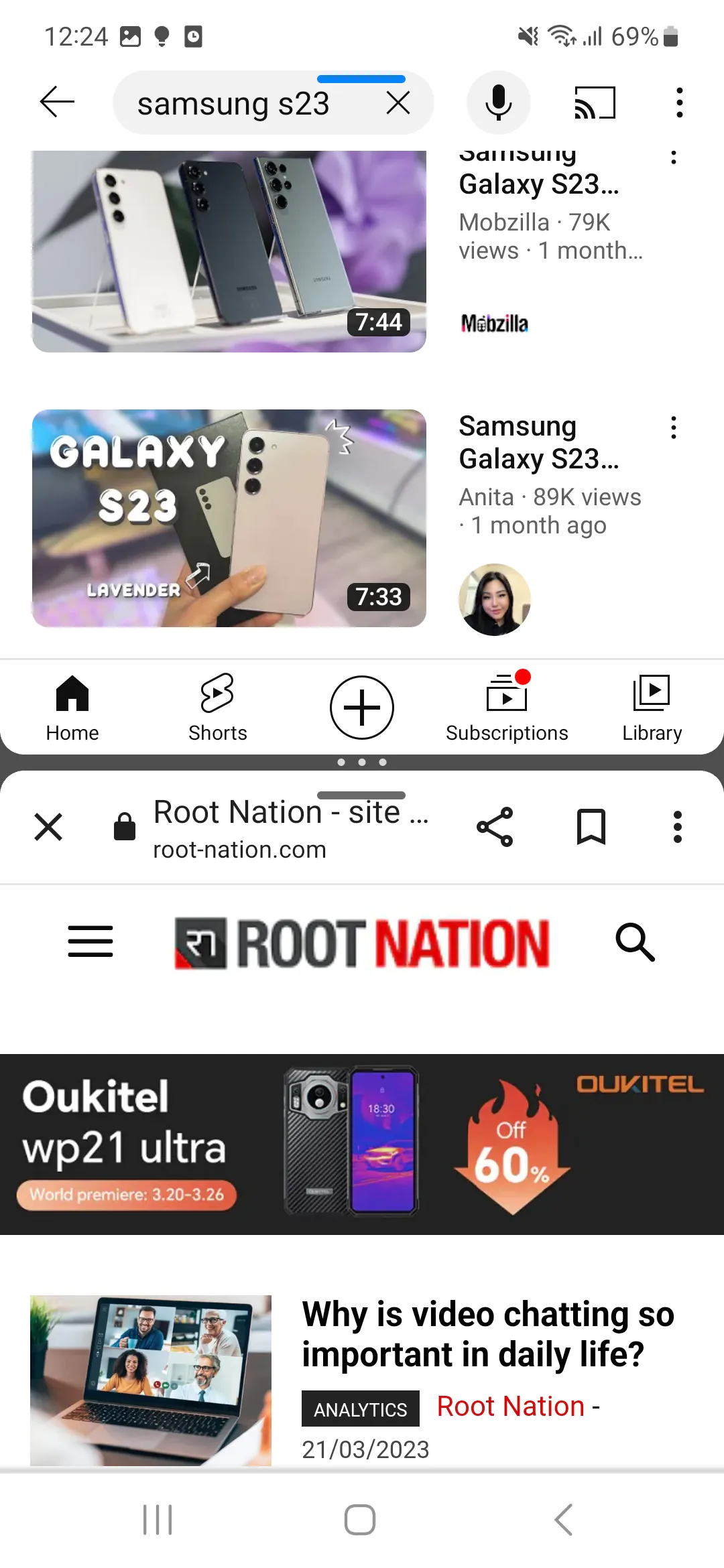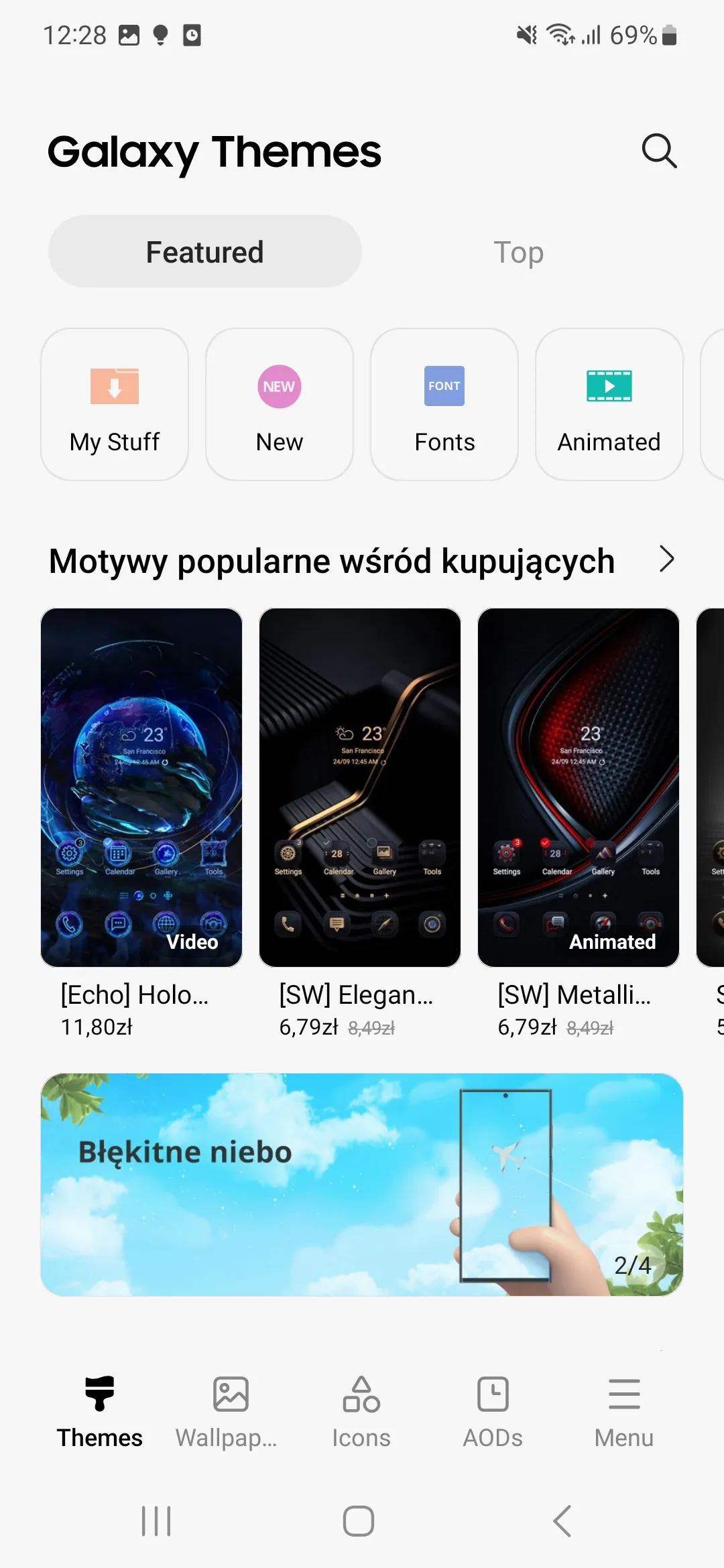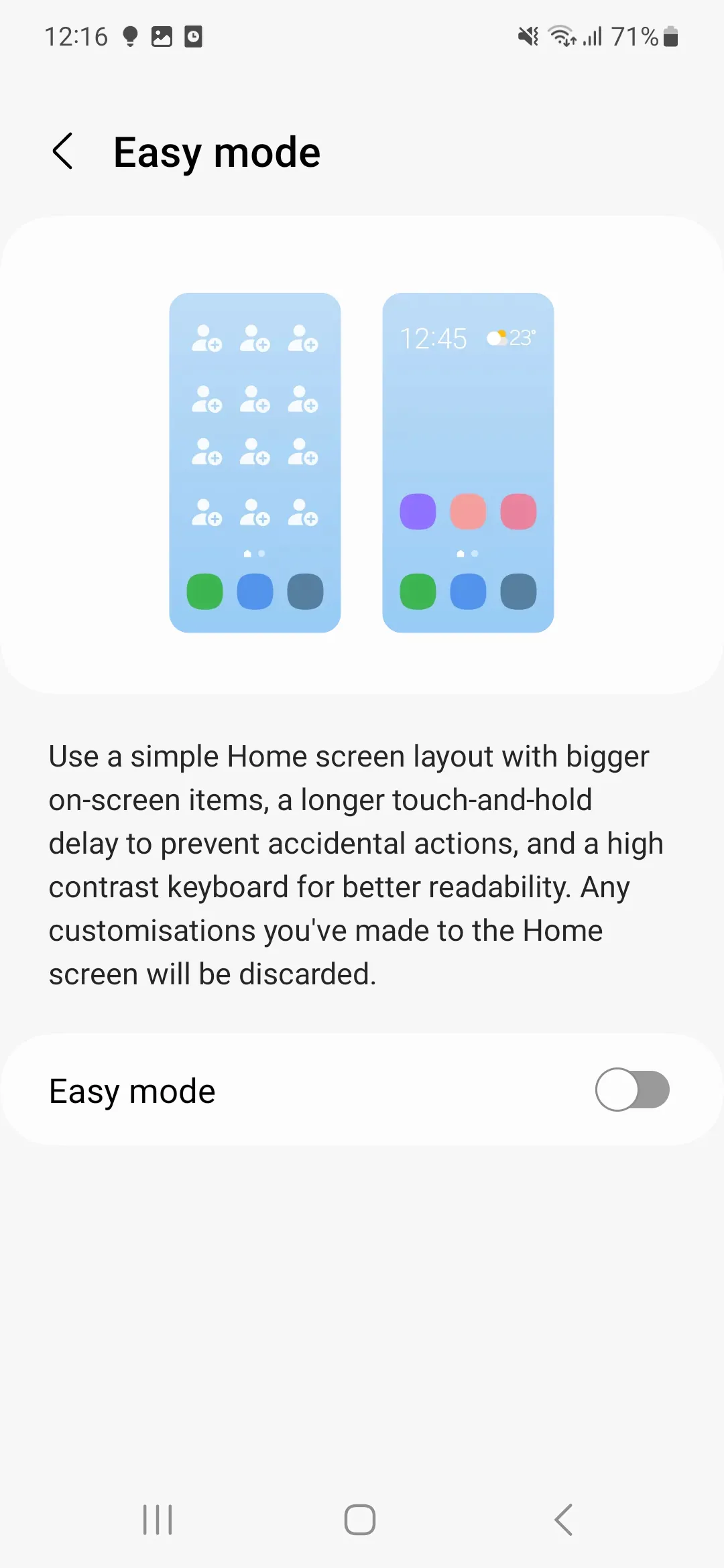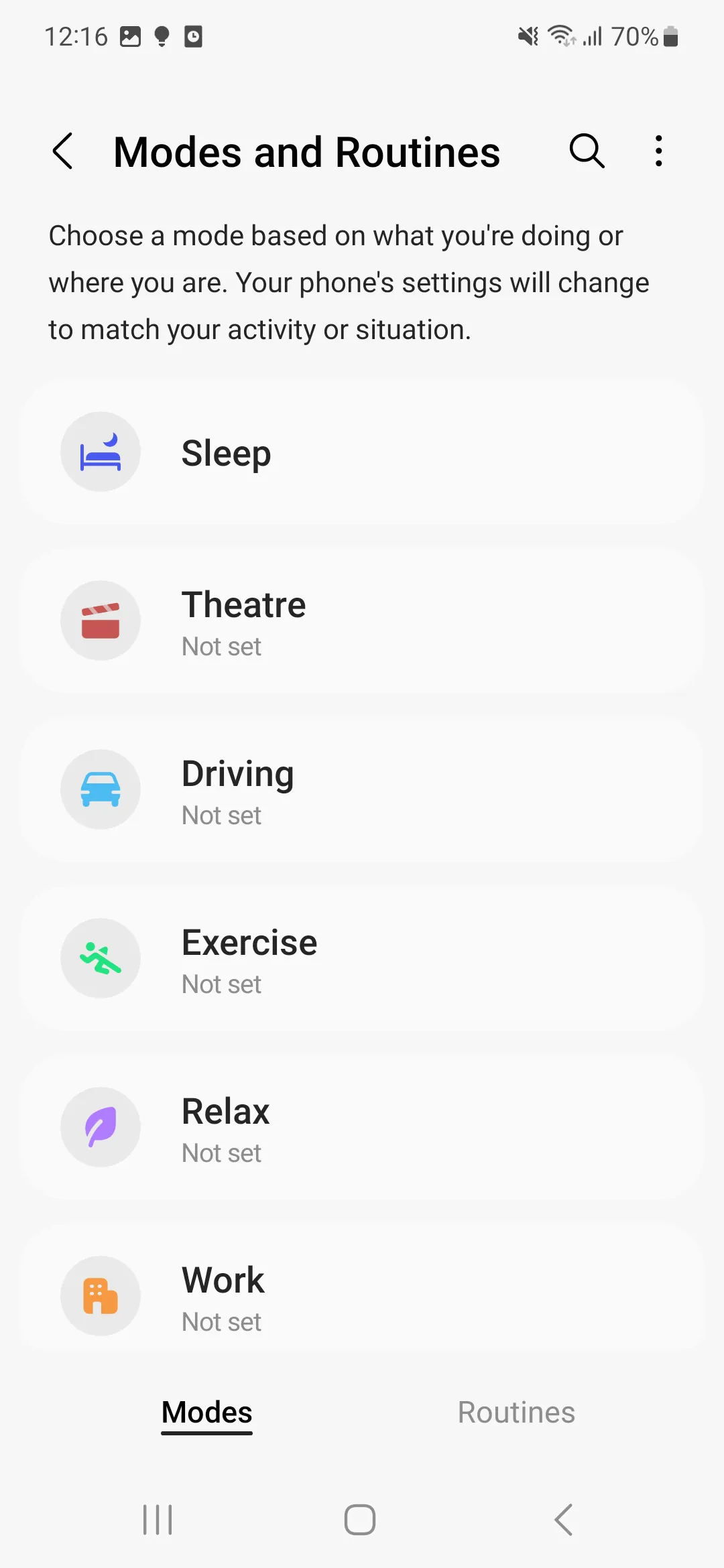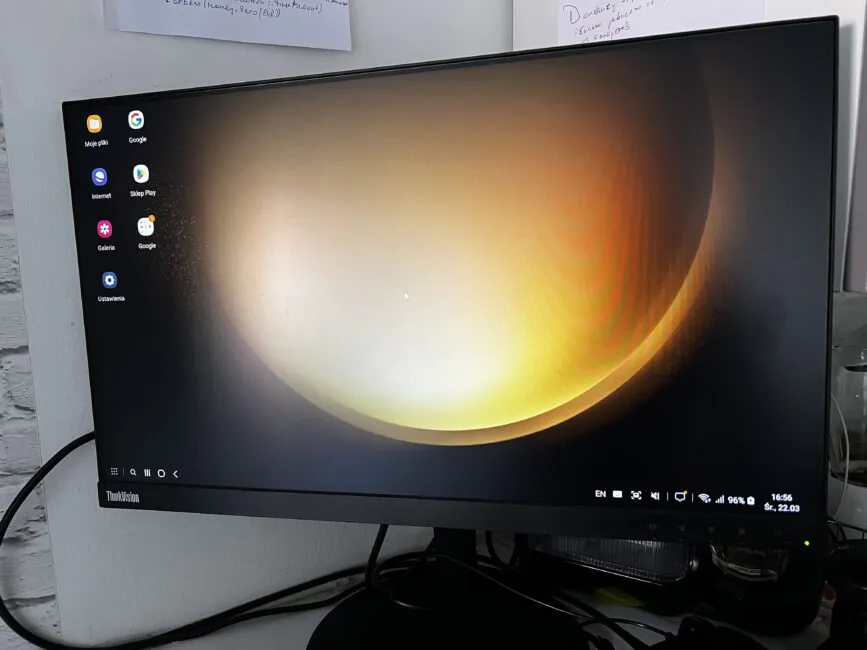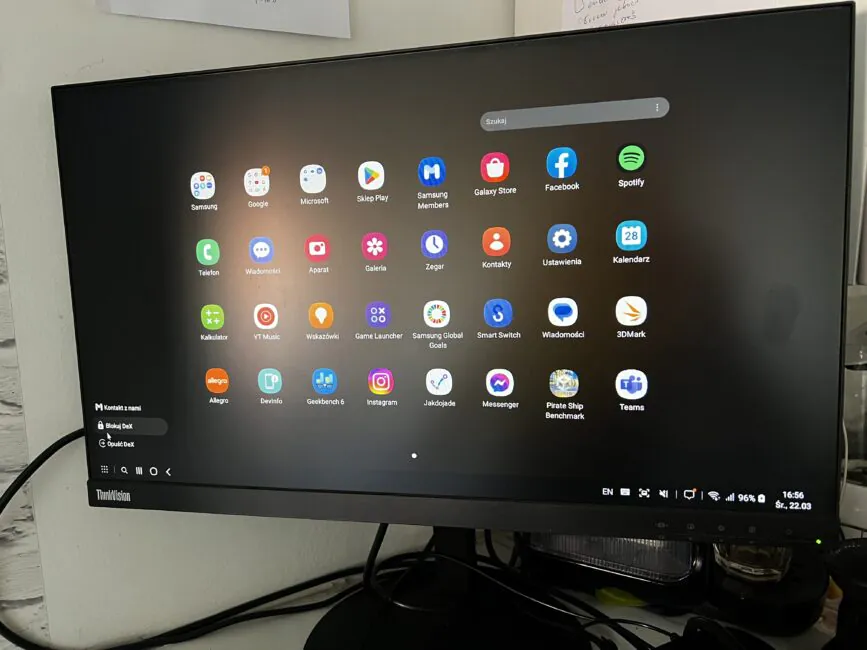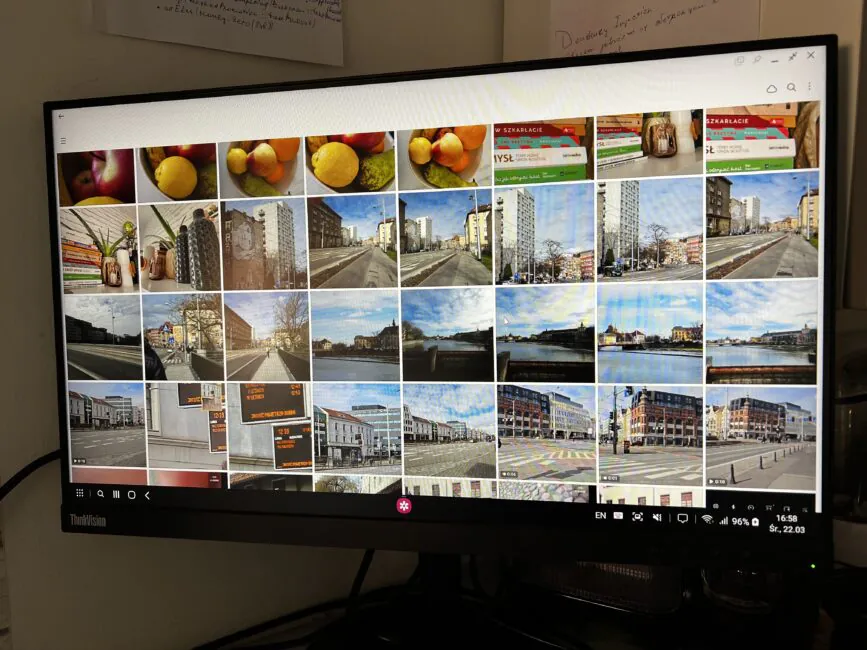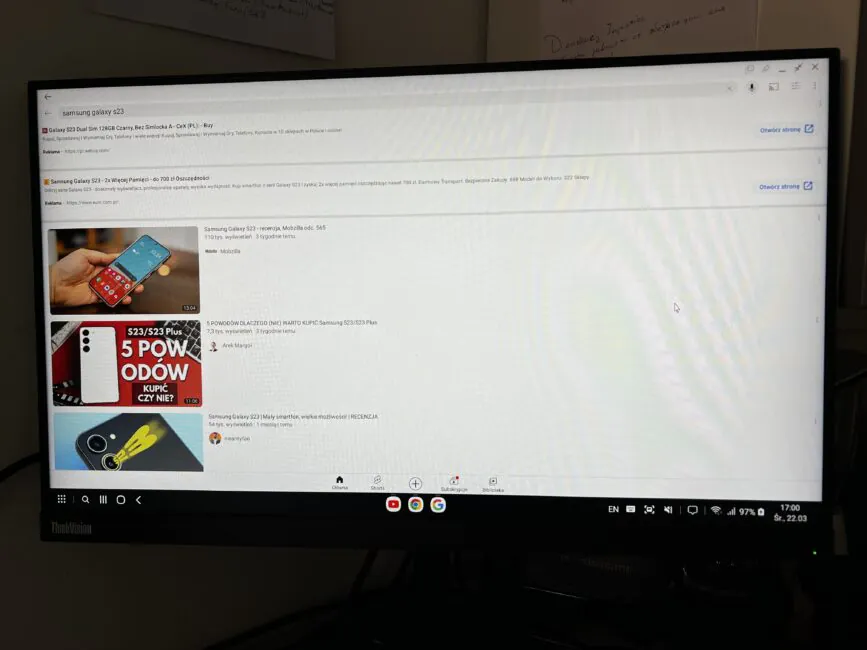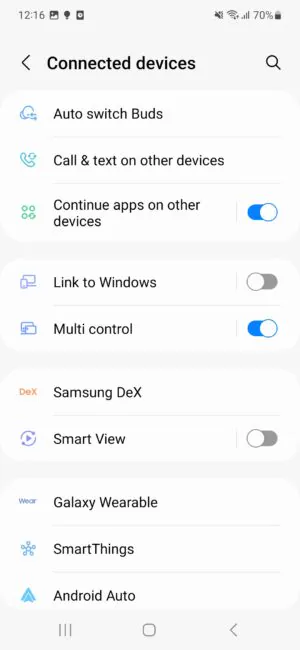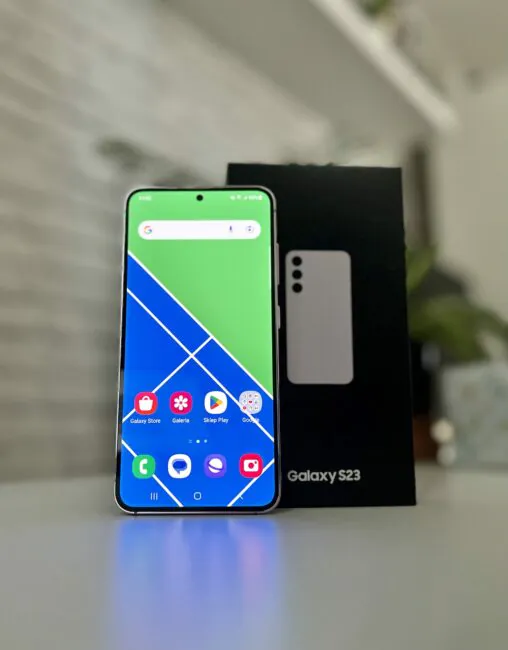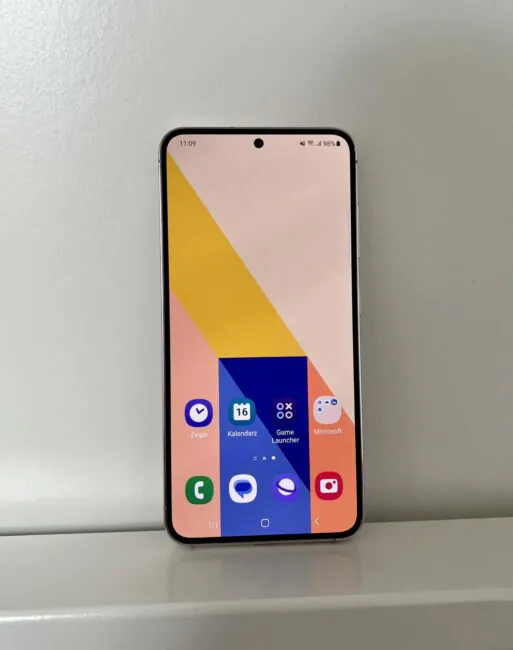© ROOT-NATION.com - Use of content is permitted with a backlink.
In February, Samsung unveiled its latest flagship range. As with the S22, there are also three variants: the classic Galaxy S23, the S23+ and the most advanced Samsung Galaxy S23 Ultra (our review).
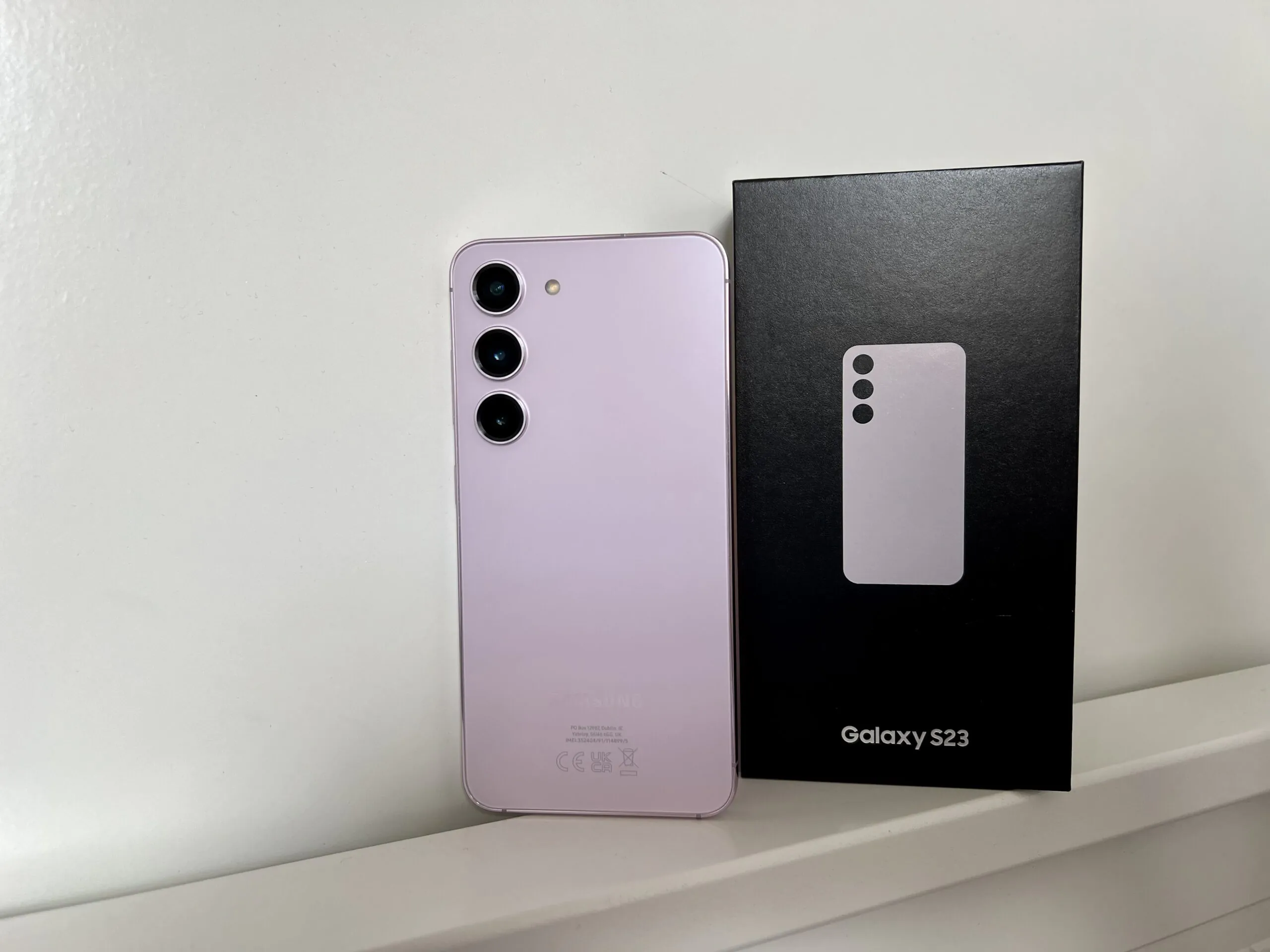 In this review, we take a closer look at the Samsung Galaxy S23. By design, the S23 is a smaller version of the S23+, differing only in size. The S23 Ultra, on the other hand, is a completely different issue, a different design, and a significant improvement in cameras.
In this review, we take a closer look at the Samsung Galaxy S23. By design, the S23 is a smaller version of the S23+, differing only in size. The S23 Ultra, on the other hand, is a completely different issue, a different design, and a significant improvement in cameras.
Samsung updates its range every year. Are there many differences from last year’s S22? Is it worth upgrading to a newer model? To start with, we can point out that it’s not worth swapping the S22 for the S23. But that doesn’t change the fact that the S23 is a great device. So welcome to the review!
Read also: Samsung Galaxy S23 Ultra smartphone review: An unprecedented flagship
Samsung Galaxy S23 specifications
- Screen: 6.1″ Dynamic AMOLED 2X, resolution 1080×2340 pixels, 425 ppi, 120Hz refresh rate
- Processor: Qualcomm Snapdragon 8 gen 2 (1×3.2GHz, X3 + 4×2.8GHz, A71 + 3×2.0GHz, A51)
- Operating System: Android 13, One UI 5.1
- Permanent memory: 128GB/256GB
- RAM: 8GB
- Rear cameras:
- Wide-angle (main): 50MP, f/1.8, 24mm, 1/1.56″, 1.0µm, Dual Pixel PDAF, OIS
- Telephoto: 10MP, f/2.4, 70mm, 1/3.94″, 1.0µm, PDAF, OIS, 3x optical zoom
- Ultra Wide Angle: 12MP, f/2.2, 13mm, 120˚, 1/2 .55″ 1.4mm, Super Steady Video
- UHD 8K video resolution, UHD 4K (up to 60 fps)
- Full HD 1080p (up to 240 fps), HD 720p (up to 960 fps)
- Front camera: 12MP
- Video: 4K@30/60fps, 1080p@30fps
- Battery: 3900mAh
- Charging: fast charging function, optionally supports wireless charging (with reverse charging option)
- Connections: 5G/4G/3G/2G + eSIM, Wi-Fi 802.11a/b/g/n/ac/ax/6E, Bluetooth 5.3, NFC. Navigation: GPS, A-GPS, Beidou, Galileo, GLONASS
- Sensors: Fingerprint, accelerometer, barometer, Hall, magnetometer, lighting, proximity, gyroscope
- Optional: dust and water resistance (IP68), two SIM cards on standby – dual SIM card support
- Case: display – Corning Gorilla Glass Victus 2; frame – aluminum
- Connectors: USB Type-C – 1 pc, nanoSIM card slot – 2 pcs
- Dimensions: 146.3 × 70.9 × 7.6 mm
- Weight: 167 g
- Available configurations: 8/128, 8/256GB
Read also: Review and experience: Is it worth buying the Samsung Galaxy S22 Plus in 2023?
Positioning and price
The Samsung Galaxy S23 ranges in price from $800 to $1100 depending on the modification. It should be noted that the S23 is the cheapest of Samsung’s current flagships.
Complete set
In the package we get a sleek, minimalist box, and it’s just as minimalist inside. It comes with a USB cable and a needle for the SIM card tray. There are also the standard documents – warranty card and user manual.
It’s worth adding that the charging cable has a USB-C type connector at both ends, so the charging unit should also have such an input. There is of course no charging unit, the days of having one in the kit are long gone.
Design, materials and construction
The S22 has a fairly narrow and symmetrical screen frame. The body frame is made of aluminium and the rear panel is made of durable Gorilla Glass Victus 2, the same as on the display. Glass is glass, however, and minor scratches have occurred from normal use over a period of 2 weeks.
Like the other models in the S23 series, this model is IP68 certified (dust and water resistant). This means it can be submerged in water to a depth of 1.5m for up to 30 minutes.
In the middle of the top part of the screen there is a selfie camera hidden in a small round recess. It can be changed in the settings to the black bar at the top.
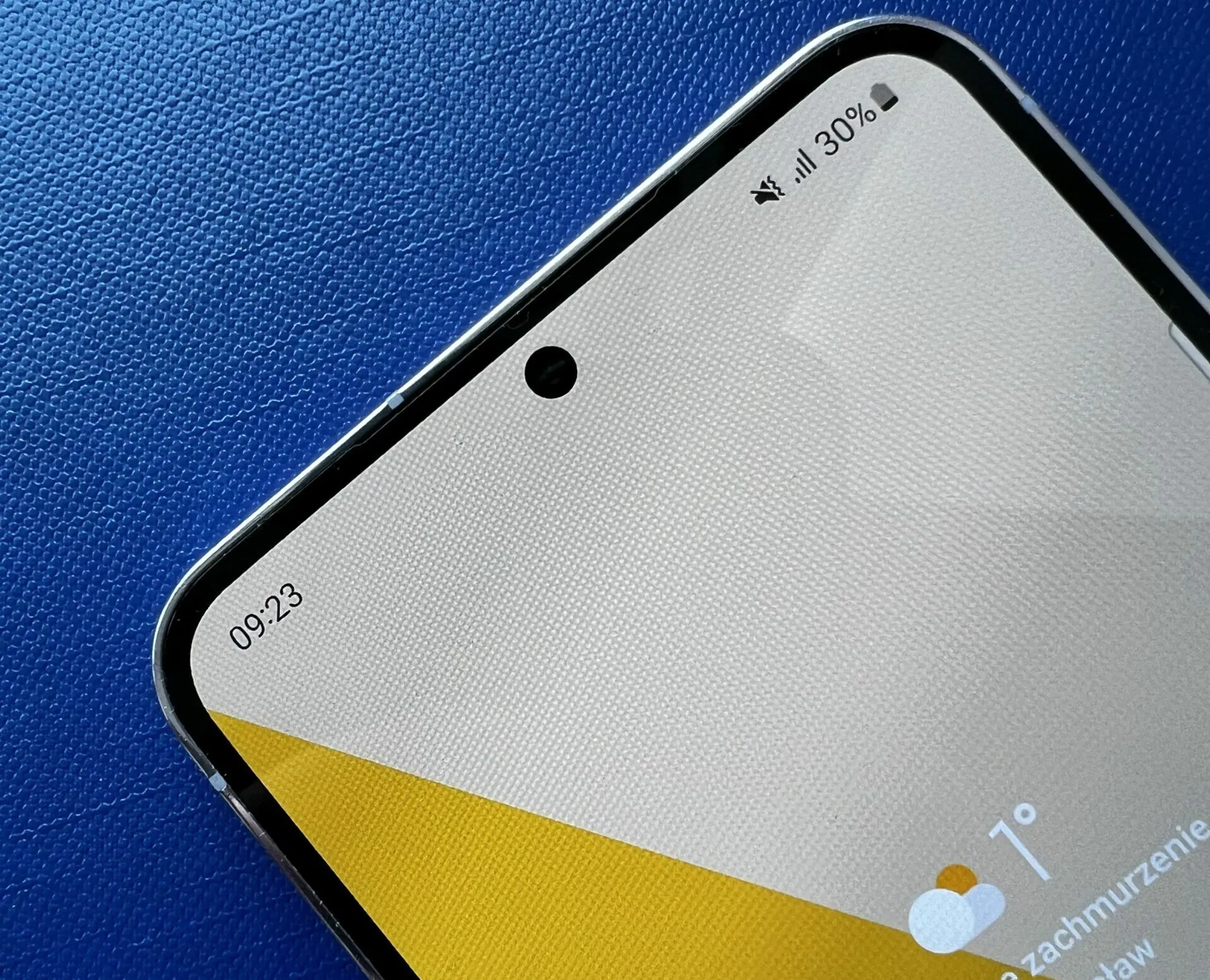 The rear panel has a matte finish with a slight sheen of lavender, which looks very elegant (but there are other colours available, including those exclusive to Samsung shops).
The rear panel has a matte finish with a slight sheen of lavender, which looks very elegant (but there are other colours available, including those exclusive to Samsung shops).
The back does not collect fingerprints. The cameras on the back have a special design and are arranged as separate, unconnected modules. The entire S23 series now has this design. The protruding cameras make the phone wobble a bit on a flat surface, but it’s really not noticeable. You can always buy a case and there’s no problem.
In terms of design and build quality, there’s nothing to complain about – everything is great! The body is flat, I see a slight resemblance to the iPhone 14, which is not surprising, as it is a universal design and it works very well.
The Samsung Galaxy S23 is available on the market in several colours: black, cream, green, lavender, lettuce and grey. So there’s plenty to choose from.
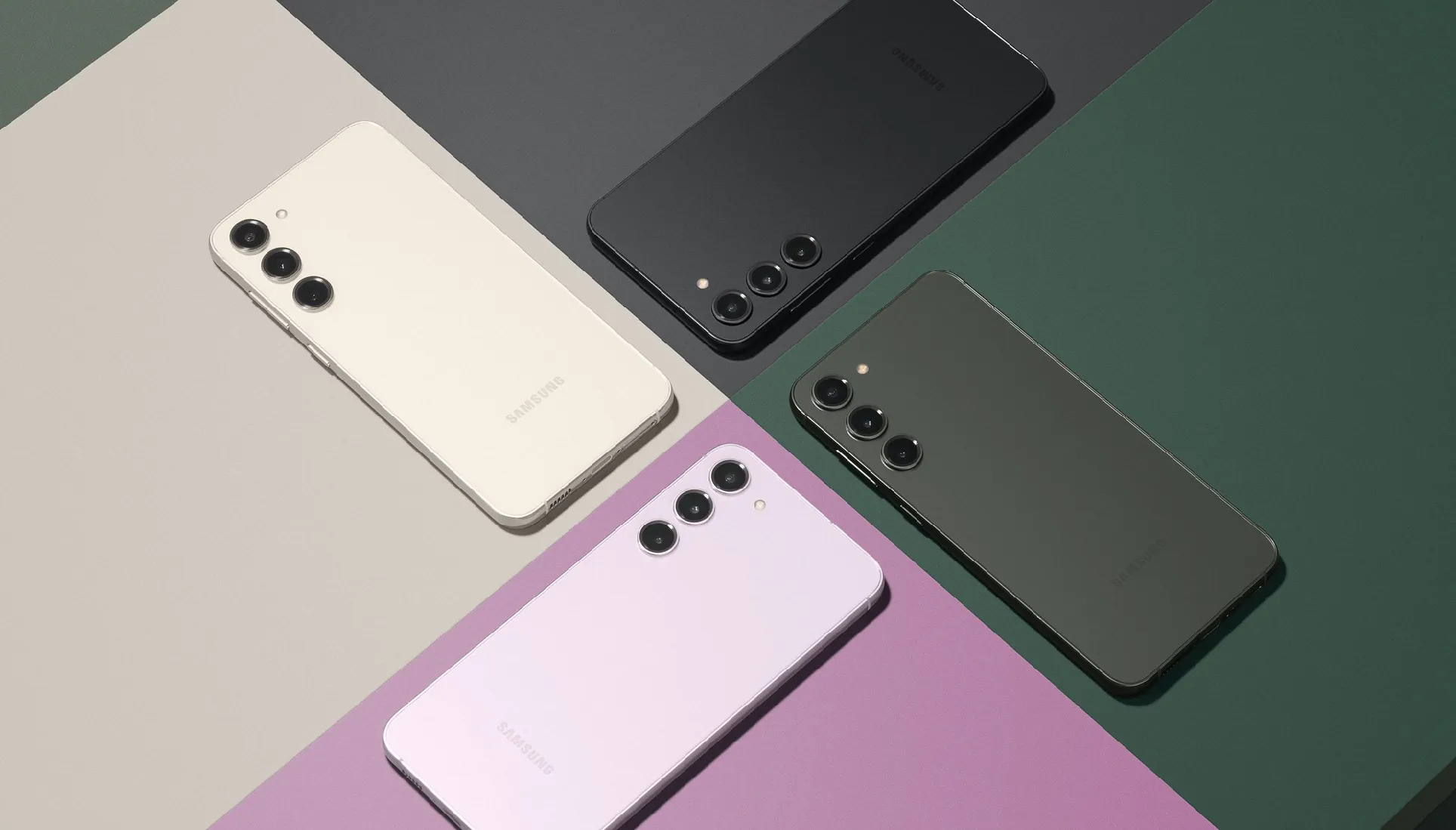
Ergonomics of the Samsung Galaxy S23
Measuring 146.3×70.9×7.6 mm, it weighs 167 g. The phone is very light, cool and fits well in the hand thanks to its size. Compared to other flagships, it’s really small. The only ‘but’ I found is that it can slip out of your hand. The back panel is quite slippery, so it’s better to buy a case right away.
The side buttons are ergonomically positioned at a comfortable height. On the right side are the on/off button and the volume button. At the top is the speech speaker. The left side is completely empty. On the bottom are the SIM card tray, the USB-C charging port and the main, good Dolby Atmos stereo speaker. There is no mini-jack for headphones, but the user of the new flagship is likely to opt for a Bluetooth headset.
In general, the ergonomics and button layout are fairly standard. We strive for minimalism and compactness, and that’s exactly what we get here.
The ultrasonic fingerprint scanner is located in the screen. It works well. There’s also face unlock, which works without any problems, even in the dark.
Read also: Choosing a Foldable Smartphone: Samsung Galaxy Fold vs. Flip – Which Type Is Better?
Samsung Galaxy S23 screen
The Dynamic AMOLED 2X display is 6.1 inches with a resolution of 1080×2340 pixels. Another feature that deserves praise – there’s nothing to complain about here, even if you wanted to. We have the same display as the S23 Ultra version, which has the same sensor but a diagonal of 6.8 inches. And the same high brightness of 1,750 nits, which ensures perfect readability even on a sunny day.
The screen has a flat, thin frame all around and a flat front. In terms of picture clarity, there are no complaints, it is excellent. The screen is very clear and readable. Auto brightness adjustment also works perfectly. We have two colour rendering modes – Vivid (wide colour gamut, DCI-P3) and Natural (standard colour gamut, sRGB). Accuracy in both modes is consistently high – both modes are very good.
Contrast, colour accuracy, brightness and viewing angles are top notch. Everything is as clear as can be. The screen has a refresh rate of 120Hz, just like the Ultra version. Most of the newer phones have the ability to change the refresh rate. The S23 also has it. Depending on what we are doing, we can adjust it. A high refresh rate ensures smooth scrolling and gameplay, while a low one consumes less power and helps extend battery life. We can also choose adaptive smoothness, which adjusts to what we’re doing, and standard, which keeps the refresh rate at 60Hz.
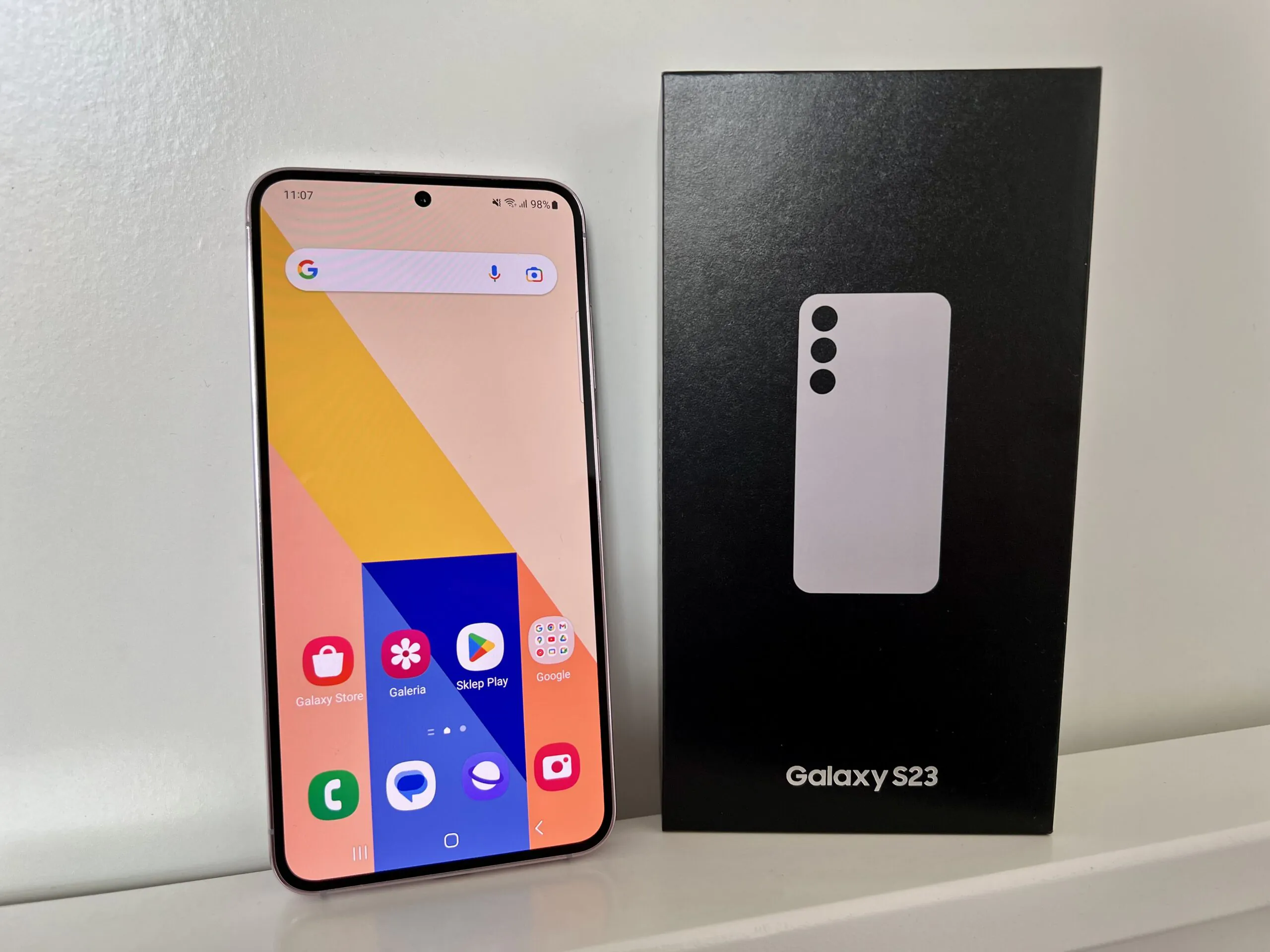 You can play around with the screen settings and tweak everything to suit you. We have light and dark modes. You can set the dark theme to turn on on your own schedule or, very interestingly, when the location is on, the dark mode will turn on after sunset and turn off after sunrise!
You can play around with the screen settings and tweak everything to suit you. We have light and dark modes. You can set the dark theme to turn on on your own schedule or, very interestingly, when the location is on, the dark mode will turn on after sunset and turn off after sunrise!
It’s the same with brightness: you can adjust it or choose automatic, which is very intuitive to use – I’ve only used it and was happy with it.
There is also an Always On Display mode – we can choose whether the mode will only be on for a certain time after touching the screen, or it will be on all the time, or you can personalise it and set your own schedule. The display can show the time, date, battery level, app notifications.
Performance, processor, memory
The Samsung Galaxy S23 features an octa-core 64-bit Qualcomm Snapdragon 8 gen 2 processor. This is the first time the entire Galaxy S23 range on the European market has used a Snapdragon chipset.
Furthermore, it’s not a pure Snapdragon 8 Gen 2, but a Snapdragon 8 Gen 2 for Galaxy – a version with an “overclocked” processor (3.2GHz Cortex-X3) and graphics card. Unlike the Snapdragon 8 Gen 1, the new generation processor is apparently even faster (by 35-40%).
Regarding heat: the Galaxy S23 does get hot during a long game, but it’s not very critical – it doesn’t steam your hands or cause discomfort – you just feel the heat. So, the cooling function is there, but it could be improved. But it still generates less heat than its predecessor.
Benchmark results:
- Geekbench: single-core – 1987, multi core – 5170
- 3DMark Wild Life Extreme: 3798
- 3DMark Life Stress Test: 12 739
- PCMARK Work 3.0 performance: 16 473
The Samsung Galaxy S23 is available in two versions – 8/128, 8/256. 8GB is quite enough for a junior flagship. But 128GB in the basic version at this price is too much.
The RAM in the entire S23 series is very fast LPDDR5X. For the ROM there are differences, the S23 got a “slow” UFS 3.1, the S23+ and Ultra – much faster UFS 4.0. But I will not say that it is noticeable.
We had the 8/128GB version in our review. If 8GB of RAM isn’t enough, we can use the RAM Plus option. It involves using the phone’s memory to expand the RAM. This way, we can get an extra: 2GB, 4GB, 6GB or even 8GB of extra RAM to increase the performance of the device.
In terms of permanent memory, it’s best to opt for 256GB, as the system itself takes up more than 35GB. High-definition video recording also takes up a lot of space, and we don’t have the option of expanding the memory with a card..
In terms of performance, the Galaxy S23 is one of the fastest devices we can find on the market right now. Two weeks of use and no hang-ups, app crashes or lack of smoothness. The smartphone is very fast, handles multiple open applications at the same time perfectly.
The new Snapdragon is something to celebrate, perhaps the biggest advantage of the device. After all, when we use a phone, we expect it to be reliable, efficient, energy-saving – the S23 has it all, and more.
There’s not much to complain about, it’s hard to find any ‘buts’. In terms of performance, it is also a good device that will not disappoint.
Read also: Samsung Galaxy Tab S8 Ultra Tablet Review: Isn’t That A Bit Too Much?
Samsung Galaxy S23 cameras
On the back of the Samsung Galaxy S23 is a set of 3 cameras. The main camera with a 1/1.57″ ISOCELL GN3 sensor has a resolution of 50MP. The second camera is a 12MP wide-angle camera (Sony IMX564 in 1/2.55″ format). The third is a 10-megapixel telephoto camera with a 1/3.94″ Samsung S5K3K1 sensor. It has a 3x optical zoom with a maximum of 30x magnification. All cameras support night mode.
The front camera differs from previous versions of the Samsung Galaxy S. It has a 12-megapixel Samsung S5K3LU, 1.12 µm sensor and a 25mm f/2.2 lens.
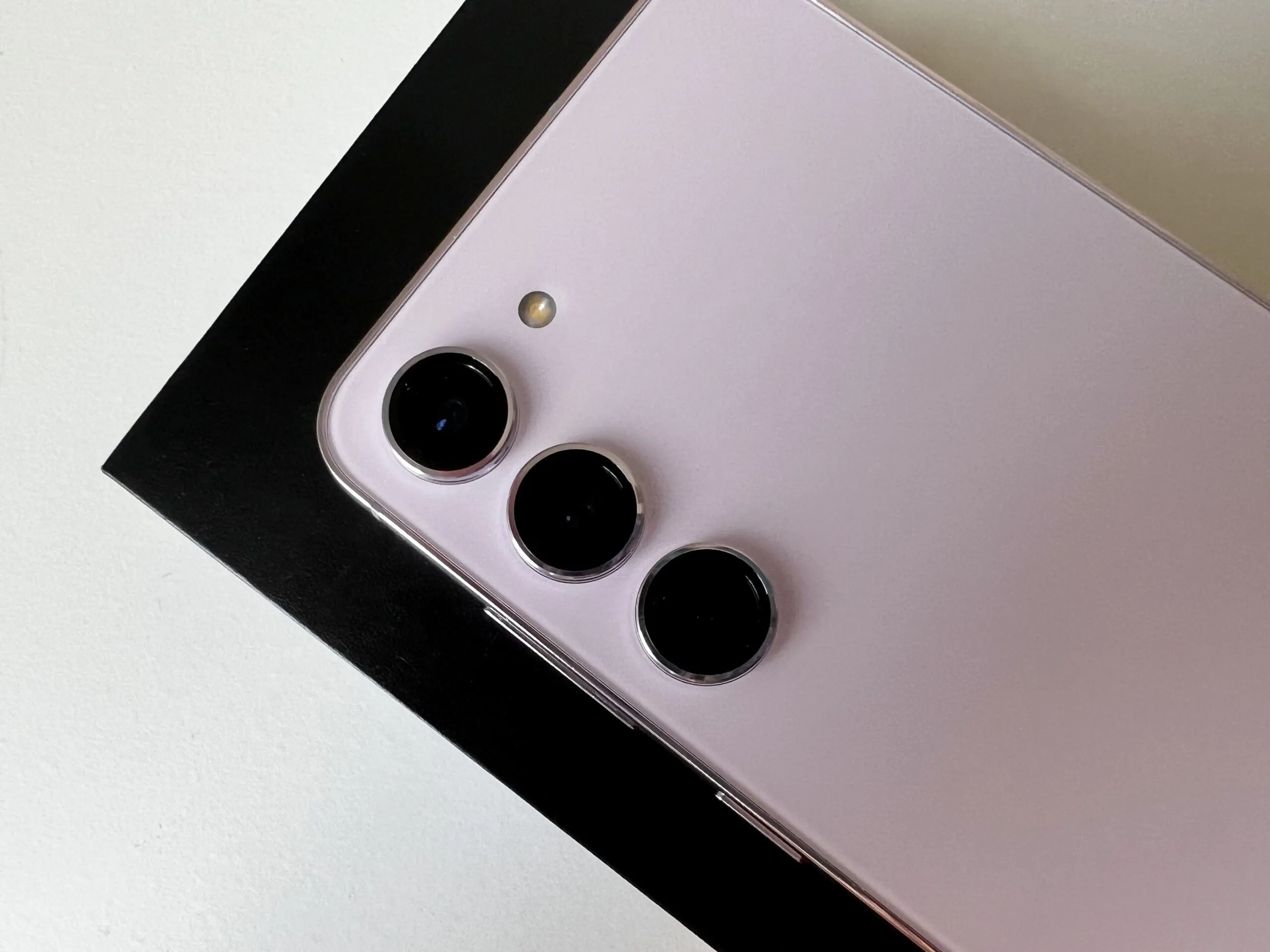 The camera app is the same as on any Samsung phone. Left and right swipes switch between all available modes. Vertical swipes in either direction switch between front and rear cameras. The camera options are very extensive. We have Pro-mode photo, Pro-mode video, multiple exposure, astrophoto mode, food mode, panorama, shooting mode that allows you to take a series of photos and videos on the go, from which you can select the best ones later. And, of course, portrait mode, slow motion, super slow motion, hyperlapse, portrait video, director perspective and Expert RAW mode, which lets you access uncompressed image data directly from the camera sensor.
The camera app is the same as on any Samsung phone. Left and right swipes switch between all available modes. Vertical swipes in either direction switch between front and rear cameras. The camera options are very extensive. We have Pro-mode photo, Pro-mode video, multiple exposure, astrophoto mode, food mode, panorama, shooting mode that allows you to take a series of photos and videos on the go, from which you can select the best ones later. And, of course, portrait mode, slow motion, super slow motion, hyperlapse, portrait video, director perspective and Expert RAW mode, which lets you access uncompressed image data directly from the camera sensor.
And now sample images from the different modes with descriptions (the video is a real treat for the eyes!).
Normal mode 50 megapixels
The photos are impressive, they are exquisite and the colours are rich, but not overly so. Contrast is good, photos look natural and sharp. However, there is a small problem, sometimes photos are not in full focus and turn out spotty, here we have to wait for comments from the manufacturer, because on different forums users also noticed such a problem. You can see everything in the gallery and compare the normal mode and the advanced Pro mode yourself.
Picture in normal mode:
Pro mode
THESE AND OTHER PHOTOS IN FULL RESOLUTION
There are also food and panorama modes. In food mode, colours are very saturated, but noise is noticeable and there is a lack of sharpness in places.
THESE PHOTOS ARE IN FULL RESOLUTION
The panorama is fine, no complaints.

Wide angle
The 12MP module, also takes great pictures. Contrast is maintained and it copes with noise. Perhaps the photos are only slightly darker than in professional shooting mode. A few examples:
THESE AND OTHER PHOTOS IN FULL RESOLUTION
Telephoto lens
The 10 megapixel sensor works beautifully. We have good detail, minimal noise and vivid colours. There is a 3x optical zoom as well as optical stabilisation. Below are a few examples of photos, and here is a video using the telephoto lens.
THESE AND OTHER PHOTOS IN FULL RESOLUTION
And now the same shot for comparison in normal, wide-angle, professional and 3x zoom mode:
We have no macro mode, but the zoom is good and sharp. 30x is quite acceptable (not even comparable to the S23 Ultra). It’s good to have a preview in the right-hand corner.
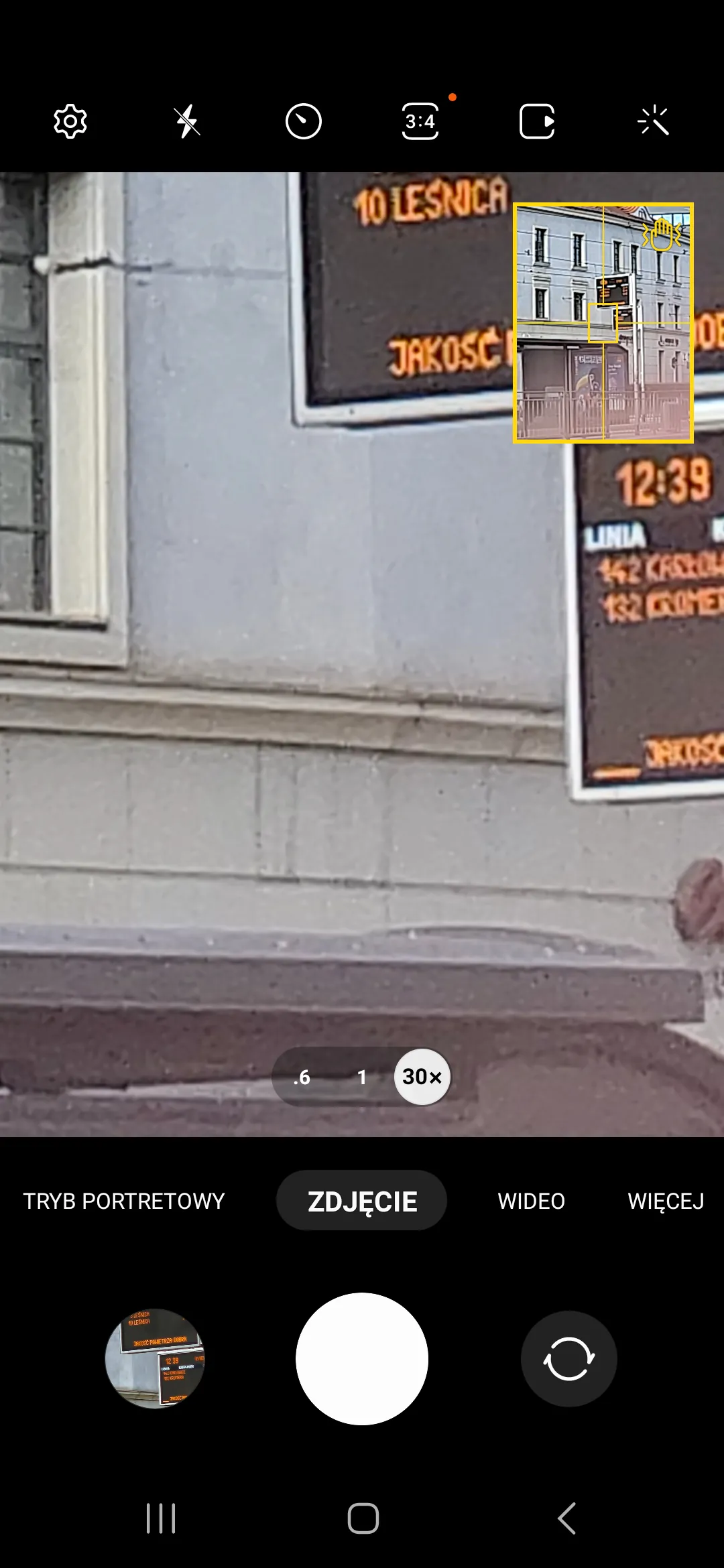 Here are some examples of close-up shots. They look good on thumbnails and on the phone, at full resolution on the big screen they’re a bit blurry, but still, it’s 20x and 30x zoom.
Here are some examples of close-up shots. They look good on thumbnails and on the phone, at full resolution on the big screen they’re a bit blurry, but still, it’s 20x and 30x zoom.
Night mode
Impressive. Naturalness is retained and brightness is enhanced, so photos come out extremely sharp. Importantly, night mode is also automatically activated.
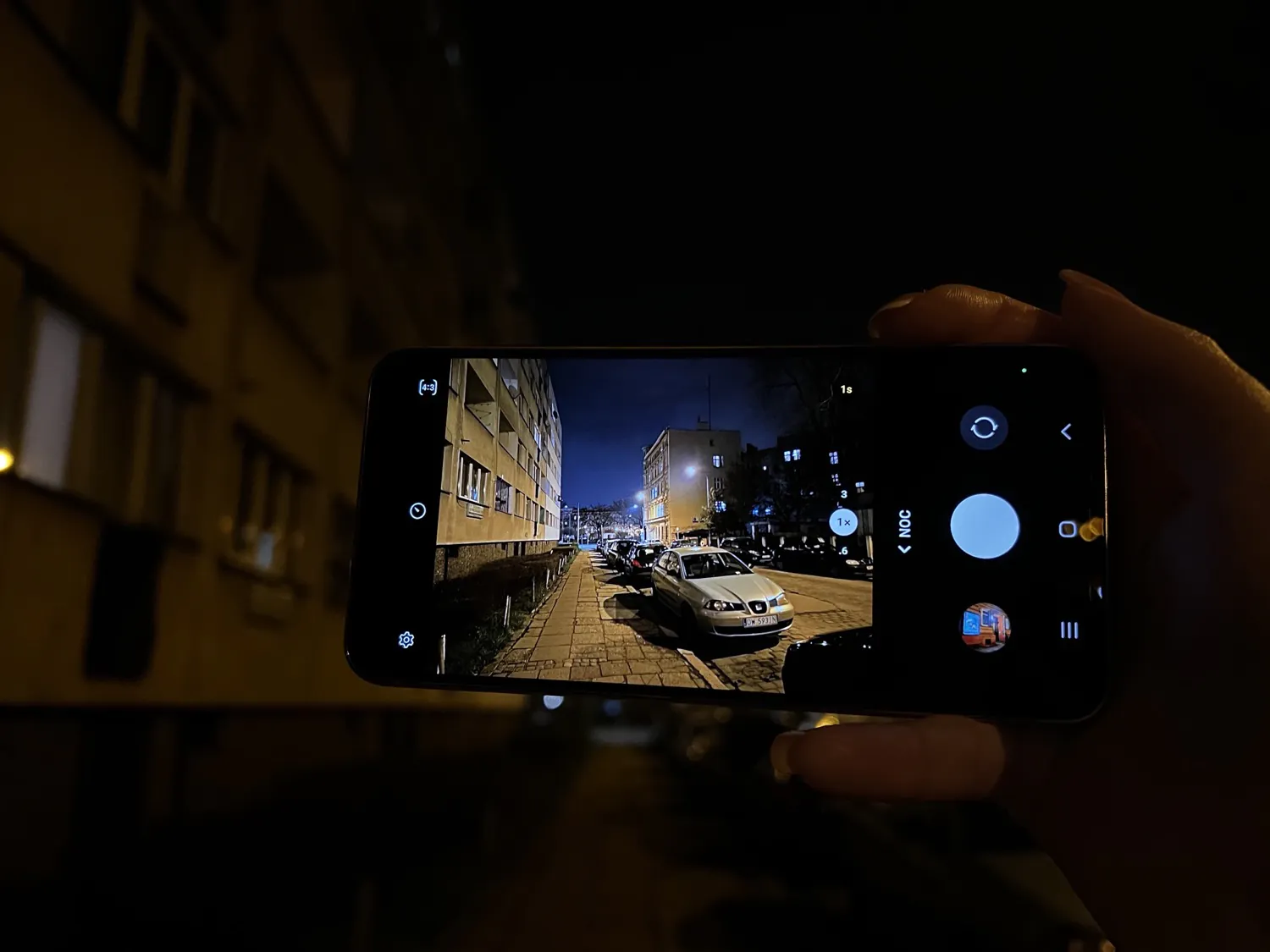 Examples here:
Examples here:
Front camera
There’s nothing wrong with it. Portrait mode separates a bit oddly from the background, even if it’s white, but in normal mode the front camera shots are very good, with great detail!
Video
\The Samsung Galaxy S23 shoots at a maximum resolution of 8K at 30 fps (there’s also 24 fps in Pro mode). In addition, we also get UHD 4K and Full HD 1080p at 30 and 60 fps and HD 720p at 30 fps. When 8K resolution is selected at 30 fps, we can only shoot on the main camera.
The main camera and telephoto lens support optical stabilisation. The video has realistic colours, well preserved, not over-enhanced, and no noise. We also have slow motion, super slow motion, hyperlapse and portrait photography.
I’ve added examples of entries in different modes (quite a few of them!) to this folder on Google Drive. And here are three examples for a quick preview.



Summary: the current S23 flagship takes good photos. The problem is that local blur appears. On video everything is detailed and stable. Autofocus works smoothly and quickly. You don’t need to shoot at the highest quality, as the automatically set Full HD 1080p at 60fps is also excellent, and such videos take up less space.
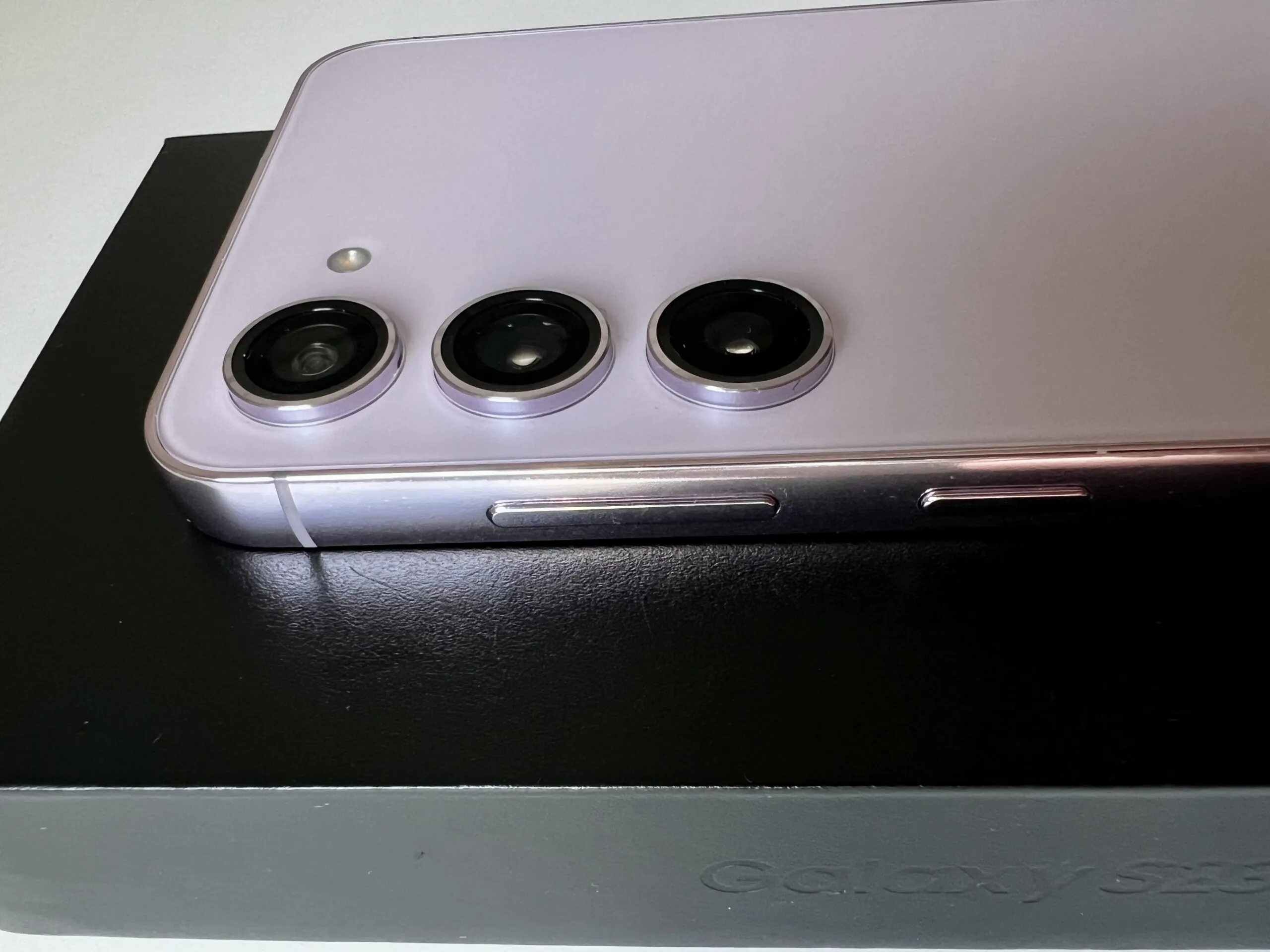
Read also: Samsung Galaxy M53 Review: Slim Mid-Budget Phone With Great Cameras
Battery and operating time
The Samsung Galaxy S23 has a 3,900mAh battery (200mAh more than the S22, but still not enough). This is the smallest battery of the entire new S23 range. Also disappointing is the low charging speed of the entry-level S23 model, with a maximum of 25W. This is the only model in the S23 range that doesn’t come with a 45W charger – for a flagship this is ridiculous, even much cheaper competitors have 165W or more! Naturally, no power supply is included.
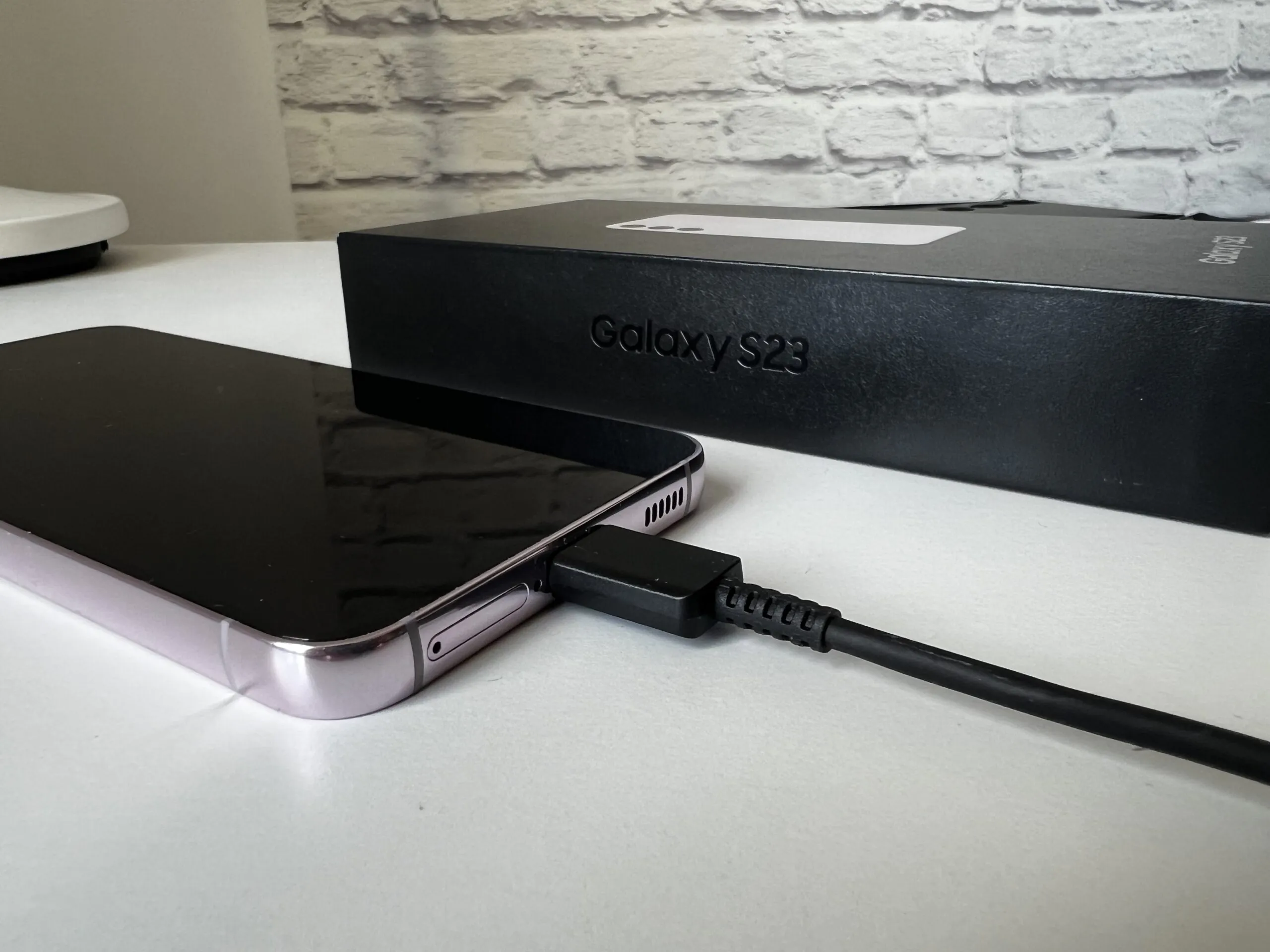
The S23 supports fast wireless charging, as well as the reverse of wired and wireless charging.
But it’s not as bad as it sounds. The phone will be able to last all day on a single charge! That’s thanks to the new Snapdragon. It’s not without reason that we wrote earlier about the power efficiency of this next generation chipset. This is another unexpected perk of the S23. A full day of intensive use of the phone means using social networks, surfing the internet, watching YouTube.
It takes just over an hour to fully charge the Galaxy S23, around 1 hour and 20 minutes.
Sound and communication
We have two stereo speakers – one at the bottom and one at the front, just above the selfie camera. The power is good. The sound is clear, the bass, the tones are great. There is no noise at high volume. Yes, even here we can’t say anything bad. Flagships haven’t had 3.5mm jacks for a long time, so you have to use wireless headphones to listen to music. You could also play around with adapters for the USB-C input, but most of us use wireless headphones anyway.
Your phone also supports Dolby Atmos – this can be activated in Settings. You can then select the sound mode: Automatic, Video, Music or Voice.
The Samsung Galaxy S23 has everything you need for connectivity. We have WiFi 802.11 a/b/g/n/ac/6E, two SIM cards with two nanoSIM slots, Bluetooth version 5.3, NFC module. The connection was there all the time, I had no problems with network and internet.
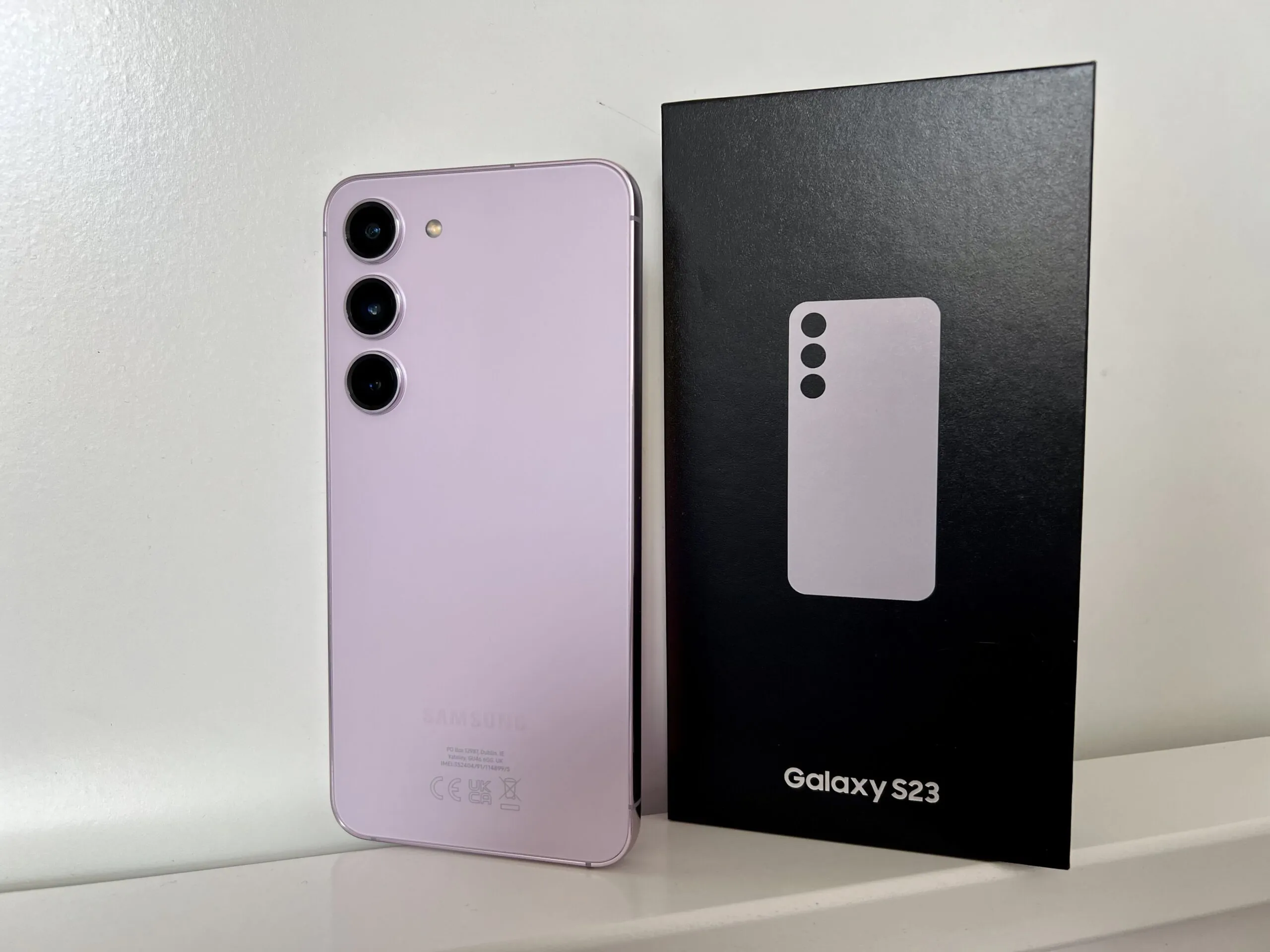
Read also: Samsung Bespoke Jet: Review of a vertical vacuum cleaner with a self-cleaning station
Galaxy S23 software
The Samsung Galaxy S23 runs on Android 13 with a version of the One UI 5 shell. The software is identical to the Samsung Galaxy S23 Ultra that we had earlier in our review, so we won’t repeat ourselves.
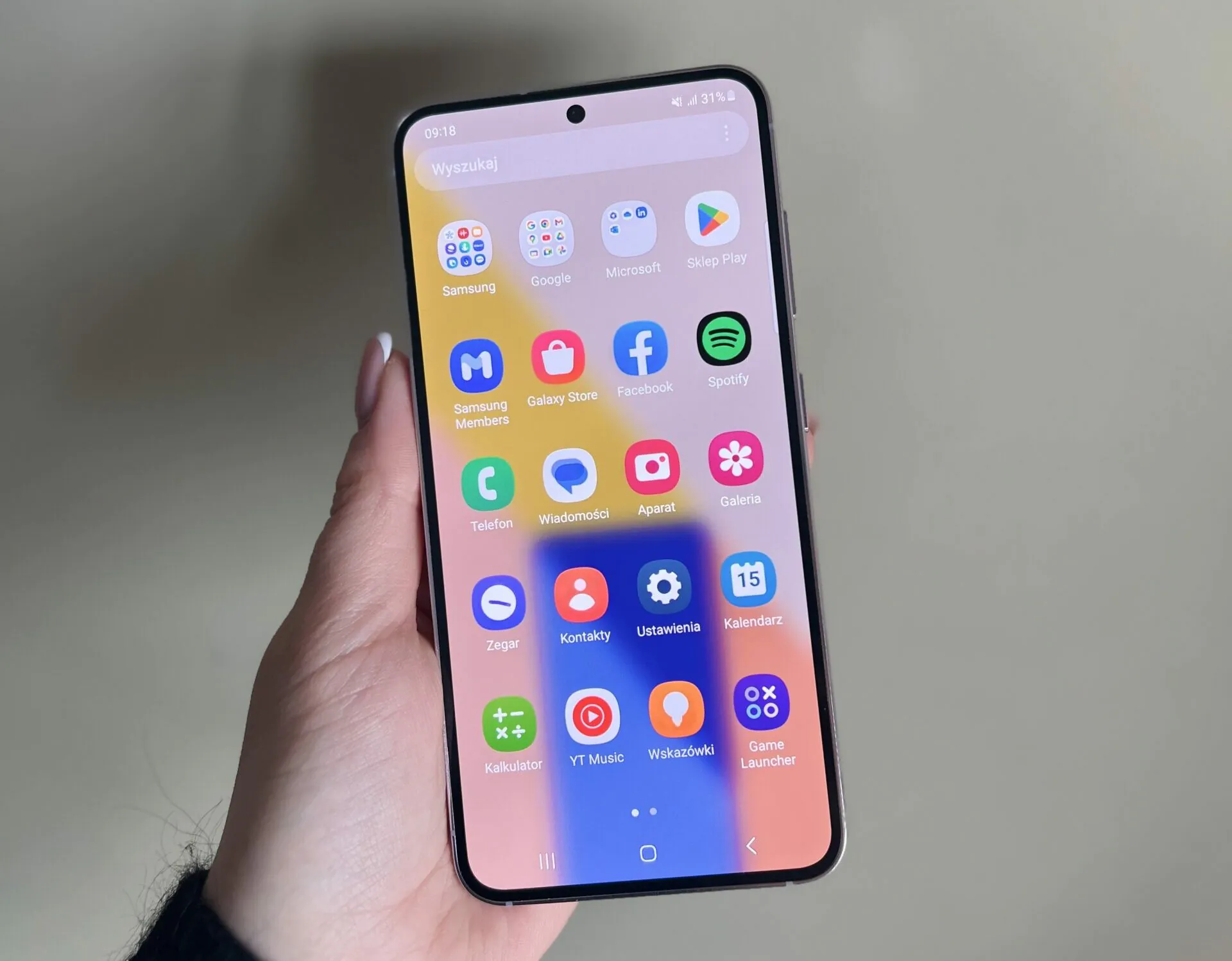
This is Android with the One UI 5 shell. Wonderful design and animations, icons, widgets, good implementation of themes (there is a separate app for this). The shell is designed for one-handed operation, the number of useful settings and other functions is reasonable.
There are universal and multitasking solutions, such as Edge Panels. They appear when you swipe to the side of the screen and contain icons for apps, contacts, tools (news, weather). There is a split screen mode. In addition, there is background blurring during video calls, Samsung Private Share function based on blockchain technology for confidential file transfer. The Routines and Modes automation feature is not new, but has been updated and improved. For example, it allows you to automatically connect your phone to certain devices when you’re at home or at work, disconnect your local SIM card when you’re abroad, set up app sync by time and location, activate fast charging before waking up and so on.
A few screenshots:
There’s a game launcher with performance settings and restrictions that you can use so that you’re not distracted by anything while you’re playing. There are also settings for double-clicking the side key, various gestures and functions (active screen when you look at it, mute gesture, opening the notification curtain by touching the fingerprint scanner). There is also the option to use two instant messaging accounts (Dual Messenger), a one-handed mode, and a memory cleaning tool.
Many Google apps are already installed out of the box, but there are also quite a few Samsung’s own apps and options. I was most interested in the Samsung DeX app. It is a nice addition. We can connect the phone to a monitor or TV and use it almost like a desktop device. We have a desktop, apps and so on. We can connect to an external screen with a cable or wireless connection.
Read also: Review of the Samsung AX32 smart air purifier (AX32BG3100GG)
Bottom line, advantages and disadvantages
With the Galaxy S23, Samsung has presented us with a slight update to its predecessor, the S22. For the basic version of the range, the S23 has received very good “stuffing”. The only advantage of switching from the S22 to the S23 is better battery life and a Snapdragon processor. Also, if we compare with the S23 Ultra, we see a lot of similar features, apart from a bigger screen, cameras, charging and price, of course. If you don’t want to overpay, the standard version would be a good choice. Of course, looking at the price of the S23, you might be surprised that I use the word ‘overpay’. But if you look at the price level on the market, it would be quite difficult to get such features at a much lower price., будет довольно сложно получить такие характеристики по гораздо более низкой цене.
The entry-level S23 is compact and seasoned in every way. It has everything a good flagship should have. A powerful and reliable system, good photo quality. A lightweight body that feels great in the hand.
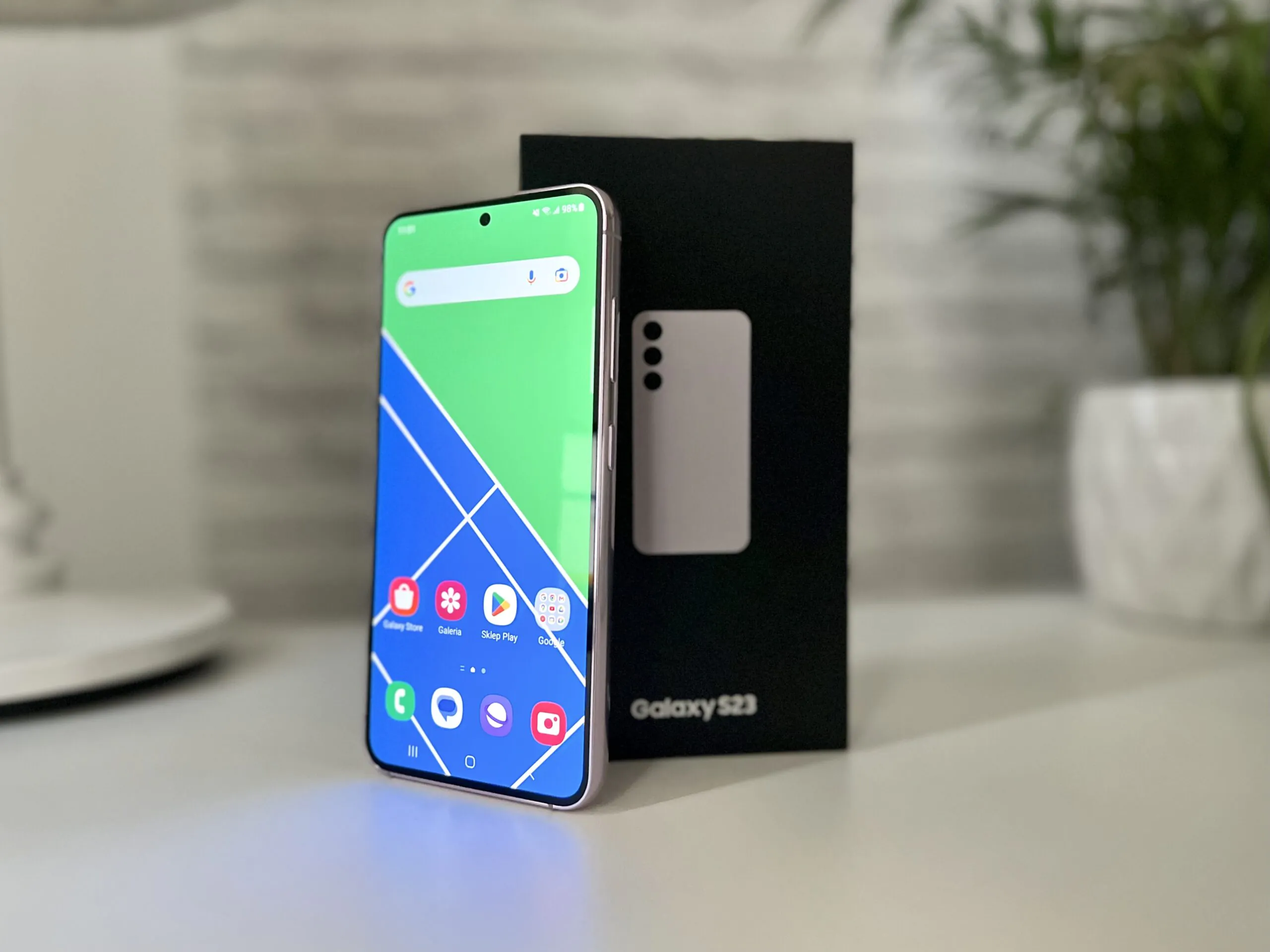
Advantages of Galaxy S23
- High performance without complaints
- Fast and smooth One UI 5.1 interface
- Bright and fast display
- Very good photo quality
- Super stereo sound
- Simple and elegant design
- Small size
Disadvantages of the Galaxy S23
- Low charging power 25W
- Low battery capacity
- 128GB of storage is insufficient in the basic version and the system takes up 30+GB at the same time
- High price
- Little change compared to S22
Read alsо:
- Samsung Galaxy A54 5G Review: New king of the mid-range?
- Redmi Note 11S review: A good balanced mid-ranger
- Xiaomi 13 smartphone review: almost perfect



